Faculty

Angela Aguilar
Philippines
Angela Aguilar
Professor 2, Division of Reproductive Endocrinology and Infertility
Department of Obstetrics and Gynecology, University of the Philippines Philippine General Hospital
University Scientist 1, UP Manila
President, Philippine Society for Reproductive Medicine
Past President, Pediatric and Adolescent Gynecology Society of the Philippines
Past President, Philippine Society for Gynecologic Endoscopy
Doctor of Medicine (Intarmed Program) UP College of Medicine
Obstetrics and Gynecology Residency and Reproductive Endocrinology and Infertility Fellowship at the UP PGH
Master of Business Adminstration in Health (Ateneo Graduate School of Business)
Master of Science in Reproduction and Development (with merit) University of Bristol, United Kingdom
Angela Aguilar
Preventing unnecessary surgery in women with endometriosis
Surgery for endometriosis, even when carefully done in the hands of experts, still present with complications. Yet women consent to these procedures as a solution to their pain. Women seeking treatment for infertility will be disappointed to learn that endometrioma removal did not increase their chances of conception. The effect of surgery is not even lasting. Recurrence occurs within the first year of surgery. The younger the women the higher the rate of recurrence.
A better understanding of the pathophysiology of endometriosis allowed us to consider alternative if not the primary methods of controlling this disease. Genetic and epigenetic changes lead to hormonal and inflammatory dysregulation leading to fibrosis and producing the symptomatology familiar to both clinicians and patients. Interruption of these pathways provide a therapeutic opportunity and medications which do so have proven efficacy. Hormonal medications, led by progestins, are the most effective but the long-term efficacy and safety profile of these medications as well as the tolerability influences patient preferences. Treatment failure should be well defined and true indications of surgery should be clear.
Surgery provides a useful adjunct in a select group of patients undergoing assisted reproductive technique. Its use is indispensable in women who require tissue diagnosis to confirm the suspicion of a malignant tumor.
To ensure the appropriate use of surgery and preference towards medical management of endometriosis is institutionalized, algorithms should be developed and implemented not only by institution but also through professional groups who are experts in the management of this disease. Noninvasive diagnosis is employed, clinicians should be trained on alternatives, care should be organized along patient-centered principles, and last but not the least, a lifetime approach to the care of these women should be advocated.

Carlos Alviggi
Italy
Carlos Alviggi
Dr Carlo Alviggi obtained his MD degree (1994), specialty in Obstetrics and Gynaecology (1998), and PhD in 2001 at the Faculty of Medicine, University of Naples “Federico II”, Italy.
In 1998 he was visiting fellow the IVF Unit of the Imperial College of London – Hammersmith Campus, where he also collaborated with the Department of Immunology (Imperial College of London).
Thereafter, he collaborated with the Laboratory of Immunology of the Italian National Research Council (Naples), the laboratory of Autoimmunity and Tolerance of the University of California (Los Angeles), and the Department of Obstetrics and Gynaecology of the University of Athens (Greece). This collaborative network resulted in various publications some of which concerning new hypotheses on the pathogenesis of pelvic endometriosis.
During the last years, he has been working as Associate Professor in reproductive medicine at the Fertility Unit of the University of Naples “Federico II” (Department of Neuroscience, Reproductive Science and Odontostomatology).
Dr Alviggi has published extensively and has been invited to lecture at over 150 international meetings dealing with reproductive medicine and gynaecological endocrinology. He has participated in several national and international (phase II-III) multi-centric, prospective randomised trials.
Dr Alviggi’s current research interests are the role of LH in folliculogenesis, the use of LH-containing drugs in patients undergoing ovarian controlled stimulation for IVF, the pathogenesis of pelvic endometriosis, oncofertility, reproduction endocrinology and the genetics of human reproduction.
Carlos Alviggi
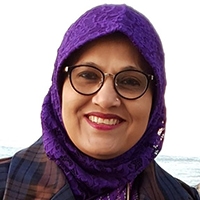
Rashida Begum
Bangladesh
Rashida Begum
Prof. Dr. Mosammat Rashida Begum is an OB/GYN and Fertility Specialist and Chief Consultant of Infertility Care and Research Center, Dhaka Bangladesh. She graduated in medical science in 1982 and completed Fellowship in OB/GYN in 1994, Masters in Medical Education from UK in 1999, MSc in Clinical Embryology from UK in 2006 and PhD in Reproductive Medicine from Dhaka University in 2014. For the best research work she received Young Scientist Award from Asia Oceania Federation of Obstetrics and Gynecology (AOFOG) in 2005, Shining Personality Award in 2005 from Narikantha Foundation and Lifetime achievement award from OGSB in 2016. Beside these she received a number of awards for the best medical practice from home and abroad.
She is pioneer of Frozen embryo baby in Bangladesh.
She has 30 international and 49 national publications and three chapters in book. She is a regular speaker in national and international conferences in home and abroad.
She is author of a textbook of Obstetrics and Gynaecology for postgraduates named “Patient Management in Obstetrics and Gynaecology” and a textbook of Obstetrics and Gynaeology for undergraduates (in press) named “Clinical teaching book in Obstetrics aand gynaecology”.
She is an imminent researcher.
- She introduced only loading dose of MgSO4 for treatment of eclampsia, which has been following by many other countries.
- Letrozole approved as 1st line ovulation inducing agent in PCOS based on her RCT.
She is Member of ASRM, ESHRE and other international fertility societies, Member of executive board of ASPIRE and Member of Editorial Board of many international journals.
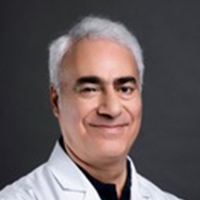
Giuseppe Bigatti
China
Giuseppe Bigatti
Pierre Fenaux trained at the University Hospital of Lille, France, where he became Professor in Hematology in 1993. Between 2002 and 2013 he founded and was head of the clinical hematology section at Hôpital Avicenne, Paris 13 University. He then moved to Hôpital St Louis, Paris 7 University to create a new clinical hematology section for myeloid disorders in the elderly, which he currently chairs. He is involved in clinical and laboratory research in the field of myelodysplastic syndromes (MDS) and acute myeloid leukemia (especially promyelocytic leukemia). He is a founding member and chairman of the French-speaking MDS group (Groupe Francophone des Myélodysplasies) and of the French APL group (GT-LAP). He is also a member of the board of directors of the MDS Foundation. He is the author of numerous scientific articles in peer-reviewed journals.
Giuseppe Bigatti
Why the Shaver technique should be chosen as the first line approach in Office Hysteroscopy.
Since performing the first operation with the Shaver technique in June 2009, we have reached a total number of 2000 procedures.
In 2018 the device quality improved with the introduction of the 19Fr. Optics by offering a 2 mm reduction in its total diameter. We have proved that almost 95% of indications can be successfully performed with the Shaver technique in a single step procedure.
The advantages related to the use of this technique are mainly due to the fact that the shaver can remove the tissue chips at the same time as their resection. This big improvement in operative hysteroscopy makes each procedure very easy, fast, and precise for the surgeon as the visibility is clear during the entire operation. At the same time there has been an improvement in the safety of operative hysteroscopy, risks such as perforation and gas embolism have been dramatically reduced. Better visibility with no in and out movements and reduced time of the operation explain the low complications rate reported by the Shaver technique.
In addition, the resection is entirely mechanical without the use of electrosurgery and therefore, the tissue trauma heating induced, is completely avoided. Less de novo adhesion formation with perfect endometrial healing and fast recovery of the uterine functionality explains why the shaver technique should be chosen as first line approach in infertility patients.
Lastly, the complete reusability of the device makes this technique also economically convenient.
The present lecture debates regarding the above-mentioned Shaver features and confirms the Intrauterine Bigatti Shaver role as the gold standard technique in modern hysteroscopy.

Clare Boothroyd
Clare Boothroyd
Clare Boothroyd completed specialisation internal medicine (endocrinology) and obstetrics and gynaecology and holds the subspecialty certificate of reproductive endocrinology and infertility (CREI). She is Vice President of ASPIRE and chair of the Education Committee of ASPIRE. She is President of Australian and New Zealand Society of Specialists in Reproductive Endocrinology and Infertility. She is a past and current member of the Board of the Fertility Society of Australia (FSA) and is a founding member of two of the special interest groups of the FSA: REproduction And Collaborative Trials in Australia and New Zealand (REACT-ANZ) which has the goal of supporting clinical research networks in fertility and the Preconception Health group. She is a founding member of the Australasian CREI Consensus Expert Panel group which via ANZSREI publishes guidelines on aspects of fertility treatment.. She has been an executive of IVF Directors group of the FSA and the nominated representative of the IVF Directors on the Reproductive Technology and Accreditation Committee (RTAC) . She is past chair of training and accreditation committee in REI of the RANZCOG and is current coordinator of the oral examination. She completed an executive MBA in 2015 and is a member of the Board of True (True Relationships and Reproductive Health). She established an independently owned IVF unit in 2008, Care Fertility of which she is Medical Director.

Charles Bormann
USA
Charles Bormann
I am a reproductive physiologist by training and am the Director of the Assisted Reproductive Technology (ART) Laboratory at Massachusetts General Hospital. My clinical responsibilities are focused on managing the ART laboratory and assisting infertile couples conceive by ensuring the safety of their gametes and embryos in vitro, and the provision of optimum conditions for their nurture in culture. These responsibilities require administering stringent quality control and quality assurance programs and implementation of quality improvement programs to maintain the highest standards of care at the forefront of this rapidly evolving field. I have specific research interests in using deeplearning AI-technology to help individualize patient care and assist in clinical/laboratory decision making.
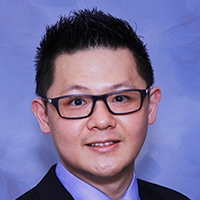
Arthur Chang
USA
Arthur Chang
Tiencheng Arthur Chang, PhD, HCLD, ELD, CC, is Professor of OB/GYN at the University of Texas Health Science Center, San Antonio, Texas, and Director of Clinical ART Laboratories at UT Health Reproductive Health & Fertility Center. Prof. Chang received his bachelor’s degree from National Taiwan University, Taiwan, MS and PhD in Endocrinology and Reproductive Physiology from the University of Wisconsin-Madison, USA. He is board certified as High-complexity Clinical Laboratory Director (HCLD), Embryology Laboratory Director (ELD), and Clinical Consultant (CC) by American Board of Bioanalysis (ABB).
Prof. Chang’s clinical and research interests include IVF, embryo development, implantation, 3D and extended embryo culture, PGT, ART laboratory management and business model, as well as nonhuman primate model for reproductive medicine. He has served on numerous leadership and committee positions, including the Society of Reproductive Biologists and Technologists (SRBT, President 2017-18), American Society for Reproductive Medicine (ASRM, Board 2017-18), Society for Assisted Reproductive Technology (SART, Board 2013-15, 2020-21), American Association of Bioanalysts – College of Reproductive Biology (AAB-CRB, President 2020-21), Asia Pacific Initiative on Reproduction (ASPIRE), and Society for the Study of Reproduction (SSR). He is associate/section editor for Journal of Assisted Reproduction and Genetics (JARG) and Reproductive Biology and Endocrinology (RB&E), accreditation inspection team leader for College of American Pathologists (CAP), off-site lab director for multiple CLIA laboratories, and consultant to governments and the industry.
Arthur’s interests outside of work include tennis, fencing, photography, traveling, and aviation. He is currently training for pilot license.
Arthur Chang
Troubleshooting in the Embryology Lab
Clinical embryology has evolved rapidly in the past few decades. As the majority of ART laboratory professionals receive extensive training in IVF techniques, the focus on quality management is often much less so compared to colleagues in pathology and analytic chemistry laboratories where many quality assurance/control (QA/QC) and troubleshooting tools were developed. In addition, levels of quality management and troubleshooting could vary significantly among ART laboratories. As novel technologies are being adopted rapidly among embryology laboratories worldwide, troubleshooting has become more important than ever. The goal of QA/QC and troubleshooting is to ensure each laboratory’s unique system is well maintained, minimize risks, prevent errors, and proactively and reactively engage issues, to improve laboratory outcomes leading to a better patient care.
This lecture is aimed to bring a concise introduction for embryologists, clinicians, and clinic managers, to systematically perform QA/QC tasks, monitor key indicators, examine and troubleshoot common issues in the ART laboratory workflow, and improve quality. We will discuss the concept of risk management, and troubleshooting tools including checklist, key performance indicators (KPI), Levey-Jennings chart, process map, decision tree, flow chart and root cause analysis (RCA), as well as address the selection of functioning indicators and practical approaches to fit each laboratory’s needs.
Embryo-Like Structures Derived from Embryonic and Stem Cells
In this invited ASRM session, we will discuss the current progress and future outlooks of development in artificial gametes and embryo-like structures, relevant cellular and molecular biology, and their potential applications as emerging therapeutic tools in reproductive medicine. This lecture is designed for laboratory scientists, physicians, researchers, practice managers, nurses, legal professionals, and anyone wishing to update their knowledge and ask questions about cutting edge technologies in the area of gametes and embryos. The objective of this session is for the audience to be able to describe biological implications and potential clinical applications of extended embryo culture in vitro, various approaches for derivation of synthetic blastoids, and technological challenges and limitations.
In recent years, rapid progress in multiple areas of gamete and embryo manipulation, as well as novel technologies originally developed outside reproductive laboratories, have shown great potentials that clinical laboratories may be able to utilize in the future. Extended in vitro culture of embryos in the laboratory beyond the routine pre-implantation period has provided us further information regarding the peri- and post-implantation stages of pregnancy initiation. Stem cell (ESC/iPSC)-derived structures resembling embryonic and extra-embryonic structures and functions have shown promising results. While the efficacy and efficiency of these new technologies requires further improvements, and ethical concerns remains debated at this moment, there is no doubt that artificial gametes and embryos would lead to dynamic changes in clinical ART practice.
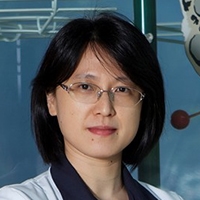
Mei-Jou Chen
Taiwan
Mei-Jou Chen
Dr. Mei-Jou Chen is a full professor of Obstetrics & Gynecology, School of Medicine, National Taiwan University (NTU), and staff physician of Division of Reproductive Endocrinology and Infertility (REI), Department of OBS/GYN, National Taiwan University Hospital (NTUH). She is appointed as Livia Shiang-Yu Wan Chair Professor of Obstetrics and Gynecology, National Taiwan University. Her main research interests are in reproductive medicine, endocrinology and metabolism and she leads an active research team focusing on the research of polycystic ovary syndrome and has authored more than 80 peer-reviewed research papers. She actively devoted in many academic societies, including TAOG, TMS, TSRM and AOFOG, and as an editorial board member of Scientific Reports and TJOG.
Mei-Jou Chen
Polycystic ovary syndrome (PCOS) is one of the most common endocrinopathy among reproductive-aged women. Apart from the common reproductive abnormalities, it is also known to associate with a variety of metabolic abnormalities and risks factors of cardiovascular diseases, including impaired glucose tolerance test, hypertension, dyslipidemia and obesity. Most of them were components of metabolic syndrome. According to meta-analysis, women with PCOS have significantly higher risk of metabolic syndrome than women without PCOS. Insulin resistance related abdominal adiposity or obesity, and the presence of hyperandrogenemia are considered two major factors constitute the occurrence of PCOS. Besides, obesity and androgen have been reported to associate with the risk of metabolic syndrome in women with PCOS and might be involved in the ovulatory disorders from animal studies. We have noticed that endocrinologic characteristics as different luteinizing hormone (LH), dehydroepiandrosterone sulfate (DHEAS), total testosterone and sex hormone binding globulin (SHBG) levels account to the differential risks of metabolic syndrome in women with PCOS. Androgens as high testosterone and free androgen index levels highly associate with the disturbed metabolic profiles in women with PCOS, while higher LH and/or DHEAS levels have favorable metabolic profiles and less risk of metabolic syndrome in women with PCOS. Women with PCOS could be sub-clustered by different combinations of endocrine characteristics to predict the risk of metabolic syndrome. Treatment strategies might be applied individually according to different risk of metabolic syndrome for women with PCOS.
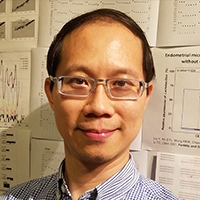
Stephen Chim
Hong Kong
Stephen Chim
Stephen Chim, PhD
Associate Professor
Dept of Obstetrics & Gynaecology
Faculty of Medicine
The Chinese University of Hong Kong
Dr. Chim is a scientist with a keen interest in advancing research work in reproductive medicine based on massively parallel sequencing technology. In collaboration with clinicians of the Assisted Reproductive Technology Unit, his team investigates the functional significance of the microbiome of the endometrium in women with reproductive failure. His data showed that endometrial microbiotas were indeed different between infertile women with and without chronic endometritis, as diagnosed using a quantitative and reference range-based method.
Selected publications: http://www.obg.cuhk.edu.hk/chim-siu-chung-stephen/
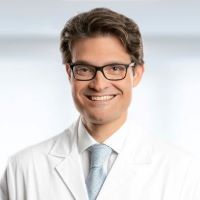
Fabio Cruz
Spain
Follitropin delta and a novel dosing algorithm
As the prevalence of infertility increases, it is critical to optimise treatment, recognising that each patient has different characteristics. Follitropin delta is an innovative recombinant folliclestimulating hormone, the first of human cell origin. The availability of an individualised dosing algorithm for follitropin delta allows clinicians to optimise ovarian stimulation for each patient from Day 1 of stimulation, without the need for dose adjustments. This validated dosing algorithm incorporates body weight, which influences drug exposure, and baseline anti-Müllerian hormone (AMH) levels, which predict ovarian response, and aims for a targeted ovarian response of 8–14 oocytes to balance efficacy and safety. In the Phase 3 ESTHER-1 trial, individualised dosing with follitropin delta was non-inferior to conventional follitropin alfa for the primary outcomes of ongoing pregnancy and ongoing implantation rate. More women treated with follitropin delta achieved the prespecified targeted ovarian response of 8-14 oocytes. A lower incidence of ovarian hyperstimulation syndrome and/or preventive interventions was observed with follitropin delta, particularly in patients with high AMH, indicating a favourable risk–benefit profile compared with conventional follitropin alfa. Additionally, dosing equivalence has been established after reanalysis of Phase II and phase III data: 10 mcg of follitropin delta delivers the same ovarian response as 150 IU of follitropin alfa.
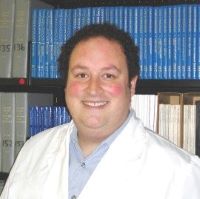
Michael Dahan
Canada
Michael Dahan
Dr. Dahan is a fellow of the American College of Obstetrics and Gynecology and of the Royal College of Surgeons of Canada, Obstetrics and Gynecology Division. He is American board certified in Obstetrics and Gynecology and Reproductive Endocrinology as well as in Infertility, and serves as assistant professor in the department of Obstetrics and Gynecology at McGill University.
Dr. Dahan graduated from the State University of New York at Stony Brook in medicine and then completed his residency in Obstetrics and Gynecology at Long Island College Hospital campus of the State University of New York at Down State. He also completed a fellowship in Reproductive Endocrinology and Infertility at the University of California in San Diego with Samuel Yen and Jeffrey Chang. After completing his fellowship, Dr. Dahan was on faculty at Washington University in St. Louis, Missouri and Stanford University in California, before joining McGill University
Dr. Dahan has authored over 165 peer-reviewed publications and 160 abstracts and has been awarded over $1.3 million in research grants. He is a past Chair of the Associate committee of the Society for Reproductive Endocrinology and Infertility. He is currently or has been in the past on the editorial board of 7 peer reviewed journals and is the editor and chief of Clinical and Experimental Obstetrics and Gynecology. He has been invited and presented internationally over 150 times.
He was the 2008 recipient of the R. Howard Webster award given by the Research Institute of McGill University. He was selected for Inclusion in Marquis Who is Who in Medicine. The name Dahan’s syndrome has been applied to pituitary injury due to vasospasm, which he first described in the medical literature.

Thomas D’Hooghe
Belgium
Thomas D’Hooghe
Professor Dr Thomas D’Hooghe, MD, PhD, gynaecologist and subspecialist in reproductive medicine, is Vice-President and Head of Global Medical Affairs Fertility, responsible for global medical scientific leadership in the Fertility Therapeutic Area at Merck KGaA, Darmstadt, Germany since October 2015. He continues academic research and teaching as Professor in Reproductive Medicine and Biology at University of Leuven (KU Leuven, Belgium) and as Professor Adjunct at Yale University Medical School (New Haven, USA) and is Editor in Chief of Gynecologic and Obstetric Investigation (Karger, Basel, Switzerland). Up till 2015, he served WHO as senior consultant in reproductive medicine, and held senior leadership positions at ESHRE, European Endometriosis League, Society for Reproductive Investigation and World Endometriosis Research Foundation. He has published more than 350 papers in international peer reviewed journals (H-index 53 in Web of Science), and has received numerous national and international awards in the areas of endometriosis, reproductive medicine/biology, patient centeredness and quality management.

Quang Vinh Dang
Vietnam
Quang Vinh Dang
Dr Vinh Q Dang has been working in IVF field for nearly 20 years, after having his master degree in clinical embryology from National University of Singapore. He was among the first team to apply vitrification and IVM in Viet Nam. He has also been participating in technical transfer and training for many IVF centers locally and in the region.
Dr Vinh Q Dang is currently the deputy head of IVFMD, where more than 4,000 fresh IVF cycles are performed per year. He also serves as country representative in ASPIRE. He is author and co-author in papers published on Q-1 journals, including New England Journal of Medicine and The Lancet. His researches are focusing on reproductive medicine, preterm birth and quality management.
Quang Vinh Dang
Risks in ART: How to manage?
Assisted Reproductive Technology (ART) programs are highly sophisticated and therefore, requires the integration of multiple disciplines. In order to assure a high yet sustainable success rate, a zero-risk to patients and a high quality of service, it is suggested that all ART centers striving for excellence should consider a Total Quality Management (TQM) system, where risk management should be emphasized. The implementation of a risk management, both re-actively and pro-actively will be discussed.
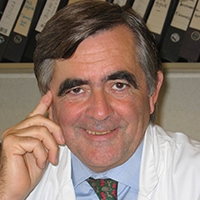
Jacques Donnez
Belgium
Jacques Donnez
Jacques Donnez was born in Tournai (Belgium) on 16 July, 1947.
He studied at the Catholic University of Louvain.
He defended his PhD thesis in 1984, entitled “The fallopian tube: normal and pathological histophysiology”.
He became Full Professor and Head of the Department Gynaecology and Andrology in 1986. He also founded the Infertility Research Unit of the Catholic University of Louvain in 1986. He has focused his research activities on three main topics: tubal infertility, endometriosis and finally, ovarian cryopreservation and transplantation. He published over 600 original articles in peer-review journals.
Prof. Donnez was the first President of the recently created International Society for Fertility Preservation (until end of 2010) and has been elected in Februari 2009 at the Royal Belgian Academy of Medicine.
Since 2012, he is Professor Emeritus and Director of SRI (Société de Recherche pour l’Infertilité).
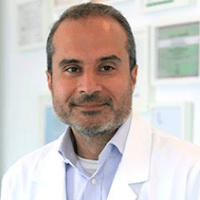
Human Fatemi
United Arab Emirates
Personalised luteal phase support in ART
During the luteal phase, progesterone secretion from the corpus luteum induces a secretory transformation of the endometrium in preparation for pregnancy. A deficiency in progesterone delays endometrial maturation. Stimulated in vitro fertilisation cycles are associated with a defective luteal phase in most patients. Luteal phase deficiency is generally defined as a lag of ³2 days in endometrial histological development versus the expected day of the cycle; causes include oocyte retrieval, gonadotrophin-releasing hormone (GnRH) agonists, levels of human chorionic gonadotrophin (hCG), or factors combined. In the context of assisted reproduction techniques, luteal phase support (LPS) can be used to enhance the probability of pregnancy. The effect of different LPS strategies, treatment doses and durations of treatment on the luteal phase have been evaluated. Intramuscular and vaginal progesterone have been shown to be effective in providing LPS and have demonstrated equivalent efficacy. Further randomised controlled trials are required to confirm the benefits of dydrogesterone in LPS. Other approaches include hCG administration (this may increase ovarian hyperstimulation syndrome [OHSS] risk), GnRH agonist trigger, enhanced luteal support (enhanced steroid support) and the new concept of ‘luteal coasting’. A freeze-all strategy also results in good pregnancy rates and a low risk of OHSS.

Mario Philip Festin
Philippines
Mario Philip Festin
Dr. Mario Philip R. Festin
EDUCATION AND TRAINING
- Graduate of the University of the Philippines College of Medicine
- Finished Residency and Chief Residency in Obstetrics and Gynecology, Philippine General Hospital
- Finished Master of Science in Clinical Epidemiology, University of Pennsylvania School of Medicine
- Finished Master of Health Professions Education, National Teacher Training Center for the Health Professions, University of the Philippines Manila
POSITIONS AND MEMBERSHIP
- Professor in Obstetrics and Gynecology and in Clinical Epidemiology, UP College of Medicine
- Vice Chair for Academic Affairs, Dept of ObGyn PGH
- Member, Philippine Board for Obstetrics and Gynecology
- Convenor, Philippine Study Groups for Reproductive Health, National Institutes of Health, University of the Philippines Manila.
- Former Vice Chancellor for Research UP Manila and Executive Director, National Institutes of Health
- Former Deputy Director for Health Operations, Philippine General Hospital
- Former Medical Officer and Lead Specialist in Family Planning, Department of Reproductive Health and Research, World Health Organization Headquarters, Geneva Switzerland
- Past President, Philippine Society of Maternal and Fetal Medicine
- Life Member, Philippine Obstetrical and Gynecological Society
- Member, Philippine Society of Fertility Preservation
- Member, European Society of Contraception and Reproductive Health
AWARDS
- Philippine Obstetrical and Gynecological Society, Baldomero Roxas Memorial Awardee for Academic Distinction, POGS, 2017
- Philippine Obstetrical and Gynecological Society, Honoria Acosta Sison Awardee for Research, POGS, 2008
- Philippine Obstetrical and Gynecological Society, Constantino Manahan Young Researcher Awardee, POGS, 1996
- Outstanding Alumnus in Research, University of the Philippines Medical Alumni Society
- Outstanding Alumnus in Health Professions Education, UP Manila
PUBLICATIONS
- Over 50 international publications in peer reviewed journals
- Guest Editor, Best Practice and Research, Clinical Obstetrics and Gynecology, VOL. 66 July 2020
Mario Philip Festin
2020 is when an additional 120 million new users of modern contraception has been targeted. Modern contraception is defined as those with a sound basis in reproductive biology, a precise protocol for correct use, and existing data showing that the method has been tested in an appropriately designed study to assess efficacy under various conditions. Those with a high efficacy include the permanent methods and the long acting reversible contraceptives (LARCs), which also have new technological improvements and may also be provided by lower levels of cadres of providers. The hormonal injections have been improved with subcutaneous needle systems which may be injected by lower level providers or the user. The various mainstream oral contraceptive pills have been shown to have additional advantages. There is ongoing research on the use of pericoital or on demand methods of oral contraceptives. The male and female condom, while being more promoted now for STI and HIV prevention and protection are still used for prevention of pregnancy, showing its pericoital and multi-purpose advantage. The Fertility Awareness Based Methods (FABMs) have high perfect use rates but fall short with typical use. New tools to improve compliance have been developed to narrow this gap. There are ongoing research for a male hormonal contraceptive. Along with improved technology, aspects to improve use include newer guidelines by WHO on when to use and on how to use, on using rights in a quality of care setting, and on who can provide these various methods based on evidence. Online standard training tools have also been developed to make instruction and curriculum planning easier. Improving use and access to contraception thus warrants a complete health systems improvement approach.

Kathryn Gebhardt
Australia
Kathryn Gebhardt
Market Development and Support BU Genomics at Vitrolife
Dr Kathryn Gebhardt received undergraduate and postgraduate qualifications from The University of Adelaide working under Professor Michelle Lane, successfully identifying gene expression patterns in cumulus cells that correlated with oocyte viability. Joining the clinical team at Repromed (part of the Monash IVF group) as a Post Doc, gaining experience as an embryologist and establishing an in-house genomics program. During this time, Kathryn evaluated commercially available PGT technologies and implemented a highly successful clinical PGT-A program, transitioning the testing to NGS in 2014. In 2015, Kathryn took on a commercial sales role at Illumina Inc, expanding the PGT market across Asia Pacific Japan. Most recently, in July 2019 Kathryn joined the Vitrolife Genomics team, and remains an affiliate of The University of Adelaide.
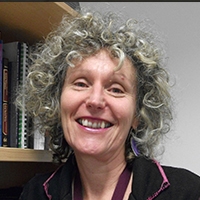
Debra Gook
Australia
Debra Gook
Dr Debra Gook is Senior Research Fellow and Head of Cryopreservation Services at Royal Women’s Hospital and Melbourne IVF, and holds an honorary position in the Department of Obstetrics and Gynaecology, University of Melbourne, Australia. For over three decades she has been at the forefront of research into the cryopreservation of the human female gamete. She has presented and published widely on cryopreservation of both human mature oocytes and human ovarian tissue and continues to play a key role in the development of this technology for clinical application. She was instrumental in the establishment of the world’s first egg bank at the Royal Women’s Hospital and a pioneer in the field now referred to as “oncofertility”.
Debra Gook
Oocyte Freezing
In the last decade the outcomes from oocyte cryopreservation have improved significantly with the advent of reproducible vitrification techniques. Extensive application of this approach in large donor oocyte programs has demonstrated that high survival rates can be achieved and that the surviving oocytes can fertilize, develop and implant at rates indistinguishable from those of comparable fresh oocytes. However, when establishing a gold standard outcome for vitrified oocytes from a broader age group and from infertility patients, it is evident that these high outcomes are not replicated, suggesting that variation in outcome may be related to inherent properties of the individual oocytes. There is some evidence to suggest that patient age may influence survival rates but the mechanism by which this could affect survival is unknown. Studies on other parameters which may be implicated, such as abnormalities of the oocyte cytoplasm, oocyte volume and zona pellucida properties, have failed to demonstrate a clear impact on survival but more data are required to confirm this.
An alternative possibility is that these differences in survival relate to technical variation. Our studies have attempted to assess components of the methodology that are likely to impact on vitrification survival. These studies are important in developing an understanding of the critical steps in vitrification and in demystifying the methodology of vitrification for both oocytes and embryos.

Georg Griesinger
Germany
Georg Griesinger
Professor at Lübeck University and Chair at the Department of Gynecological Endocrinology and Reproductive Medicine, University Hospital of Schleswig-Holstein, Lübeck, Germany
Member of ESHRE guideline Development Group for Ovarian Stimulation, a past Coordinator of the ESHRE Special Interest Group for Reproductive Endocrinology, and a past member of the ESHRE Executive Committee
Section Editor for Reproductive Biomedicine Online, previous Associate Editor for Human Reproduction, Fertility and Sterility, and the British Journal of Obstetrics and Gynaecology
Balancing treatment option in early pregnancy bleeding
Progesterone is a steroid hormone vital to human pregnancy. It helps to sustain decidualization, control uterine contractility and is a pivotal mediator in progesterone-dependent immunomodulation towards the fetal semi-allograft. Low maternal serum progesterone level has been linked to increased risk of first trimester miscarriage. Recent evidence has shown the efficacy of progestogen treatment in the management of threatened miscarriage and recurrent miscarriage. However, further studies need to be conducted to more accurately define high-risk patient populations that will allow for better risk stratification as well as define the role and efficacy of progestogen treatment in these patients. This lecture summarizes current opinions and trials on progestogen use in various pregnancy complications such as threatened miscarriage and recurrent miscarriage, allowing clinicians to better understand the beneficial use of progestogens and thus potentially impact their disease management and patient outcomes.
Keywords: Progestogens, Threatened Miscarriage, Recurrent miscarriage.

Sun-wei Guo
China
Sun-wei Guo
- Professor at Shanghai OB/GYN Hospital, China
- Professor at the Department of Biochemistry, Fudan University Shanghai College of Medicine, China
- Adjunct professor at the Department of OB/GYN and Reproductive Sciences of Michigan State University College of Human Medicine in Grand Rapids, Michigan, USA.
Professor Sun-Wei Guo received his Master of Medicine degree from Fudan University Shanghai Medical College, and his and MSc and PhD from the University of Washington. He was Assistant and then Associate Research Scientist at University of Michigan in Ann Arbor, Associate Professor at University of Minnesota, and tenured full professor at Medical College of Wisconsin. He also served a three-year term directorship at the Institute of Obstetric and Gynecologic Research, Shanghai Jiao Tong University School of Medicine.
Professor Guo is a member of Faculty 1000 in Medicine, and has published over 130 research papers in international journals. He has given lectures at numerous research institutions and at professional meetings. He served as Associate Editor for Human Reproduction for two terms, and now is an Associate Editor for Reproductive Sciences, Gynecologic and Obstetric Investigation, and Gynecology and Minimally Invasive Therapy.
He is a member of the WHO Expert Working Groups (EWG3A) on Female Infertility work-up and general management, Reproductive Health and Research. He is recently ranked as one of 10 top specialists in endometriosis by ExpertScape.
Professor Guo has served as a trustee to the World Endometriosis Society since 2011, and will be co-chairing the 14th World Congress on Endometriosis in Shanghai, China, in May 2020.
Sun-wei Guo
Deep endometriosis: How does it come into being? How to better diagnose it? And how to better manage it?
Among the three major subtypes of endometriosis, lesions infiltrating the peritoneum by >5 mm were originally defined as deep infiltrating endometriosis (DIE) but have now been redefined as deep endometriosis (DE). DE is recognized as the most severe clinical form of endometriosis and its clinical management is challenging The challenge in the management of DE reflects our poor understanding of its pathophysiology. In this talk, I shall show how DE lesions, once formed, come into being, and how novel imaging technique called elastography can be used to better diagnose DE. While it is still too early to develop novel therapeutics for DE, at least we can now generate a mouse model of DE for future drug research and development.

Jane Halliday
Australia
Jane Halliday
Jane Halliday is an Honorary Professor, University of Melbourne, Department of Paediatrics, and Group Leader of Reproductive Epidemiology at the Murdoch Children’s Research Institute. She is an epidemiologist with over 200 publications, and specialises in genetic and epigenetic modifiers of prenatal exposures such as ART on the health and wellbeing of children and adults. Collaboration with service providers in Victoria, Australia, has facilitated her research into clinical outcomes and the epigenetic impact of ART on a cohort of adults conceived with and without use of IVF; this approach has recently expanded to ICSI-conceived young adults.
Jane Halliday
ART AND ITS IMPACT ON ADULT HEALTH AND EPIGENETIC PROFILE
Background
Assisted reproductive technologies (ART) were introduced in Australia 40 years ago, facilitating research on adults conceived by ART, compared with non-ART-conceived adults. We aimed to undertake clinical assessments and epigenetic profiling to address concerns that ART might influence long-term health through disruption of widespread epigenetic remodelling of the early embryo, needed to produce different cell types for development.
Methods
The clinical review of adults, 193 ART (20% GIFT and 80% IVF) and 86 non-ART participants, aged 22-35 years, included assessments of carotid artery thickness, blood pressure, overall body dimensions, respiratory function, lipid profiles, free fatty acids, blood glucose and insulin levels. Quality of life, demographics and self-reported health status were assessed by questionnaire. The DNA methylation profile of 158 ART and 75 non-ART participants was obtained from genome-wide analysis of their newborn heel prick blood spot and compared with their blood sample collected as adults.
Results
There were no major differences in the clinical assessments even when taking into account birth weight differences and quality of life, which was higher in the ART group. Diastolic blood pressure was slightly lower in ART males than in non-ART males. The genome-wide epigenetic analysis showed methylation differences in IVF as well as GIFT samples, in the newborn blood samples but not in the corresponding adult blood samples.
Conclusions
There is no evidence of increased vascular or cardiometabolic risk, growth or respiratory problems associated with ART. The transitory epigenetic effects associated with IVF and GIFT, existing around the time of birth, but resolving by adulthood, might be related to ovarian stimulation or infertility itself, rather than embryo culturing. They may contribute to perinatal outcome differences often associated with ART. Absence of long term detrimental effects of ART on health outcomes or the activity of genes requires further replication in larger samples.
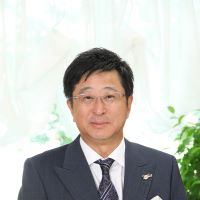
Tasuku Harada
Tasuku Harada
- Vice President of Tottori University, Japan
- Director of Tottori University Hospital, Japan
- Professor and Chair of Department of Obstetrics and Gynecology Tottori University Faculty of Medicine, Japan
Professor Harada graduated from Tottori University in 1983 and he learned IVF-ET at Leeds University in England in 1985. He has been a professor since 2008.
Professor Harada has (co)authored over 200 articles in peer-review international journals. The most cited paper is “Role of cytokines in endometriosis” published in Fertility Sterility in 2001. He was one of the chief investigators of the drug development on low dose OC and dienogest for endometriosis in Japan. He edited a book “Endometriosis Pathogenesis and Treatment” by Springer 2014.
President: Japan Society of Endometriosis
Past President: Asian Society of Endometriosis and Adenomyosis (2015-2016)
Vice President: Japan Society of Gynecologic and Obstetric Endoscopy
Managing director: Japan Society of Reproductive Medicine
Board member: World Endometriosis Society, Society of Endometriosis and Uterine Disorders
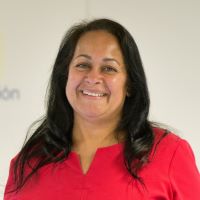
Joyce Harper
UK
Joyce Harper
Joyce Harper, BSc, PhD, FRC Path
Joyce Harper is Professor of Reproductive Science at University College London in the Institute for Women’s Health where she is head of the Reproductive Health Department, Principal Investigator of the Reproductive Science Group, Director of Education and Director of the Centre for Reproductive Health. She is a Director of the Embryology and PGD Academy which she established with Alpesh Doshi in 2014 and founder of Global Women Connected.
She has worked in the fields of IVF and reproductive genetics since 1987, written over 180 scientific papers and published two textbooks. After researching into preimplantation genetics for over 20 years, she is now looking at the social, legal and ethical aspects of assisted reproductive technologies, from social egg freezing to genome editing.
Joyce is a passionate educator at all levels, from the general public to PhD students. She is currently writing a book on women’s health, especially the reproductive years. She is invited to numerous international meetings, including key note and plenary lectures. She is regularly interviewed by TV, radio and the press.
Joyce has had many senior roles in the European Society of Human Reproduction and Embryology. She was a director of the British Fertility Society and International Society of Prenatal Diagnosis and a founding member of the Preimplantation Genetic Diagnosis International Society. She is chair of the Human Fertilization and Embryology Authority Horizon Scanning Group and an advisor to the HFEA Science and Clinical Advances Advisory Committee. She was a member of the Nuffield Council for Bioethics working group on genome editing. She is currently a director of the International Society of IVF and co-founder of the Fertility Education Initiative.
Further information – www.joyceharper.com
Follow on Twitter, Instagram and LinkedIn – ProfJoyceHarper
Reproductive Genetics-Where Are We Heading
Reproductive genetics is a rapidly growing field. Three exciting areas are expanded carrier screening, preimplantation genetic testing and non invasive prenatal testing (NIPT).
We all carry a number of recessive mutations and there is a low risk that a couple could carry a mutation in the same gene which would lead to a child with a genetic abnormality. Expanded carrier screening was developed in 2010. It offers a cost-effective alternative to carrier genetic testing, increasing preconception and prenatal care and allowing the testing of a large number of genes. The addition of genes to ECS panels is simple and relatively inexpensive, resulting in the production of commercial ECS panels which screen for hundreds of disorders. Couples with no known family history may use ECS to see if they are genetically compatible.
ECS can also be used for gamete donors, but some countries have legislation which prevents the use of a donor carrying a genetic mutation. We recently reported that using a relatively conservative ECS panel, 18% of donors were found to have at least one mutation. Genetic matching is needed to prevent an increase in the number of donors who are rejected based on their ECS result.
Preimplantation genetic testing (PGT) was initially developed for patients who were at risk of transmitting a genetic disease to their offspring. Globally, the majority of PGT cases are done for aneuploidy screening (PGT-A), with the view that this will increase the live birth rate of IVF patients. We have recently shown that some USA clinics use PGT in every IVF cycle. In the UK the Human Fertilisation and Embryology Authority uses a traffic light system to rate IVF add-ons such as PGT-A and they have rated PGT-A as red as the randomised controlled trials have shown no evidence that it increases live birth rate.
The use of NIPT is becoming routine in many countries. A maternal blood sample is taken at 10 weeks and fetal chromosomes can be analysed.
Where will the future take us? Genome editing has already been applied to human embryos and children made using embryos that had been edited. Will we see fertile couples going through IVF, PGT and genome editing to select the healthiest child with the parents desired characteristics?

Australia
Roger Hart
Professor Roger Hart is sub-specialist in reproductive endocrinology and infertility, he is the Medical Director of Fertility Specialists of Western Australia and Professor of Reproductive Medicine, Deputy Head of the Division of Obstetrics and Gynaecology at University of Western Australia, and the lead clinician for the public fertility service of Western Australia. He has active research interests in the early life origins of male and female reproductive disorder, polycystic ovary syndrome and all aspects of infertility management.
Roger Hart
Polycystic ovary syndrome (PCOS) is one of the most common conditions affecting women, and affects upto 18% of reproductive aged women, depending on the study population and diagnostic criteria applied. The intergenerational impact of PCOS is known to confer a greater cardiometabolic risk to the offspring. However, the origins of PCOS are not clear, and the mechanism of its transgenerational effects are uncertain. It appears that there is a heritable component, as twin studies suggest that genetic influences explain greater than 70% of PCOS pathogenesis. However, it is known that in pregnancy the woman with PCOS is at a greater risk of insulin resistance and gestational diabetes. Hence, it may be this inflammatory environment, in parallel with the adverse placental changes associated with PCOS, which may lead to difficulties in embryo implantation, miscarriage and an adverse pregnancy outcome, which may lead to the transgenerational influence reported. Furthermore it is recognised that women with PCOS are often hyperandrogenic in pregnancy. It is believed that there is impairment of the protective influence of sex hormone binging globulin, for the fetus, against the higher levels of maternal androgens found in pregnant women with PCOS. This resulting higher androgen exposure may program PCOS in the offspring, as evidence derived from many animal studies suggest that treating pregnant animals with androgens leads to the development of a PCOS-like phenotype in the offspring.

Japan
Osamu Ishihara
Education and Qualifications:
1974-1980 Faculty of Medicine, Gunma University
Awarded the degree of MD (Gunma University)
- Awarded the degree of PhD (University of Tokyo) for the thesis entitled “Arachidonic acid metabolism in endometrium and decidua” (supervised by Prof. Shoichi Sakamoto).
Current Posts: Professor & Chair of Department of OB/GY, Saitama Medical University
Executive director of JSRM (Japan Society for Reproductive Medicine), Member of Ethics Committee of JSRM
Executive director of JSFI (Japan Society of Fertilization and Implantation), Member of Ethics Committee of JSFI
Director of Japanese Association of Medical Law
Executive director of JSOR (Japan Society for Ova Research),
Chair of Ethics Committee of JSOR
Board Member of ICMART (International Committee Monitoring ART)
Board Member of IFFS (International Federation of Fertility Societies)
Employment Records:
1980-1981 Resident in Department of OB/GY, University of Tokyo
1981-1982 Resident in Nagano Red Cross Hospital
1982-1984 Research Fellow in Department of OB/GY, University of Tokyo
1984-1985 Senior Registrar in Saitama Cancer Centre
1985-1987 Senior Research Fellow in Department of OB/GY, University of Tokyo
1987-1988. Consultant in Department of OB/GY, National Medical Centre Hospital
1988-1989. Consultant in Department of OB/GY, Saitama Medical Centre
1989-1991. Visiting Research Fellow in Institute of Obstetrics & Gynaecology,
Royal Postgraduate Medical School, Hammersmith Hospital,
University of London
1991-1999. Lecturer in Department of OB/GY, Saitama Medical Centre,
Saitama Medical School
1999-2002 Associate Professor, Department of OB/GY, Saitama Medical Centre,
Saitama Medical School
2002-present Professor & Chairman, Department of OB/GY, Faculty of Medicine,
Saitama Medical University
2006-2010. Regional Representative, ICMART
2010-present ICMART Officer (Treasurer)
2016-2019 Executive Committee Member, IFFS
2019-present Member of Board of Directors, IFFS
Awards:
1989-1991 British Council Fellowship (full fellowship)
Present membership of academic societies:
Japan Society of Obstetrics & Gynecology, The Japan Endocrine Society
Japan Society for Reproductive Medicine
Japan Society of Fertilization and Implantation
Japan Society for Ova Research, Japanese Association of Medical Law
European Society of Human Reproduction & Embryology
American Society for Reproductive Medicine
Asia Pacific Initiative on Reproduction
International Federation of Fertility Societies
Publications in English:
- O.Ishihara, K.Kinoshita, O.Tsutsumi, K.Satoh, M.Mizuno; Metabolism of arachidonic acid and synthesis of prostanoids in human endometrium and decidua. Prostaglandin Leukotrien Med. 24:93-102, 1986.
- O.Ishihara, K.Kinoshita, K.Satoh, M.Mizuno; The inhibitory effect of cytosolic fraction of human decidua on prostaglandin synthesis. Endocrinol. Japon. 34:793-798, 1987.
- K.Shiromizu, O.Ishihara, M.Takahashi, M.Matsuzawa, T.Nishimura, S.Takayama; Primary malignant histiocytoma of the uterine body. Asia-Oceania J.Obstet. Gynaecol. 14:47-53, 1988.
- K.Shiromizu, M.Matsuzawa, M.Takahashi, O.Ishihara; Is postoperative radiotherapy or maintenance chemotherapy necessary for carcinoma of the uterine cervix? Br.J.Obstet.Gynaecol. 95:503-506, 1988.
- O.Ishihara, K.Kinoshita, K.Satoh, M.Mizuno, T.Shimizu; An inhibitor of prostaglandin biosynthesis from human decidua: Partial purification and properties. Prostaglandin Leukotrien Essent. Fatty Acids 40:223-226, 1990.
- H.Khan, O.Ishihara, M.G.Elder, M.H.F.Sullivan; A comparison of two populations of decidual cells by immunocytochemistry and prostaglandin production. Histochemistry 96:149-152, 1991.
- O.Ishihara, H.Khan, M.H.F.Sullivan, M.G.Elder; Differential metabolism of intracellular and extracellular arachidonic acid by decidual stromal cells and macrophages. Eicosanoids 4:143-147, 1991.
- O.Ishihara, H.Khan, M.H.F.Sullivan, M.G.Elder; Differences of metabolism of prostaglandin E2 and F2a by decidual stromal cells and macrophages in culture. Eicosanoids 4:203-207, 1991.
- O.Ishihara, H.Khan, M.H.F.Sullivan, M.G.Elder; Interleukin-1 stimulates decidual stromal cell cyclo-oxygenase and prostaglandin E2 production. Prostaglandins 44:43-52, 1992.
- H.Khan, O.Ishihara, M.H.F.Sullivan, M.G.Elder; Changes in decidual cell function associated with labour. Br J Obstet Gynaecol 99:10-12, 1992.
- Y.Iino, O.Ishihara, K.Kinoshita; Synthesis of 12-hydroxyeicosatetraenoic acid by human endometrium and decidua. Prostaglandin Leukotrien Essent Fatty Acids 49:609-613, 1993.
- O.Ishihara, J.Taya, Y.Iino, M.Saitoh, K.Kinoshita; The significance of luteal support for in vitro fertilization and embryo transfer patients. Jpn J Fertil Steril 38:629-634, 1993.
- O.Ishihara, K. Matsuoka, K.Kinoshita, M.H.F.Sullivan, M.G.Elder; Interleukin-1b stimulated PGE2 production from early first trimester human decidal cells is inhibited by dexamethasone and progesterone. Prostaglandins 49:15-26, 1995.
- O.Ishihara, H.Numari, M.Saitoh, Y.Arai, H.Takanashi, H.Kitagawa, K.Kinoshita; Prostaglandin E2 production by endogenous secretion of interleukin-1 in decidual cells obtained before and after the labour. Prosgaglandins 52:199-208m 1996.
- O.Ishihara, M.Saitoh, K.Kinoshita, H.Takanashi, Y.Arai, H.Kitagawa; Frigen II improves the reliability of measurement of interleukin-1 related substances in amniotic fluid. Acta Obstet Gynecol Scand 78:321-325, 1999.
- K.Baba, O.Ishihara, N.Hayashi, M.Saitoh, J.Taya, K.Kinoshita; Where does the embryo implant after embryo transfer in humans? Fertil. Steril. 73:123-5, 2000.
- K.Baba, O.Ishihara, N.Hayashi, M.Saitoh, J.Taya, K.Kinoshita; Three-demensional ultrasound in embryo transfer. Ultrasound Obstet Gynecol 16:372-373, 2000.
- A.Takamatsu, T.Harashina, Y.Inoue, K.Kinoshita, O.Ishihara, Y.Uchijima: Beginnings of sex reassignment surgery in Japan. Int J Transgender 5(1), 2001 http://www.symposion.com/ijt
- O.Ishihara, M.Saitoh, N.Hayashi, K.Kinoshita, T.Takeuchi; Failure of embryo implantation successfully treated with low dose prednisolone in patients with Sjogren syndrome. Fertil Steril 75:640-641, 2001.
- O. Ishihara, M. Hayashi, H. Osawa, K. Kobayashi, S. Takeda, B. Vessby, S. Basu: Isoprostanes, prostaglandins and tocopherols in pre-eclampsia, normal pregnancy and non-pregnancy. Free Radical Research 38:913-918, 2004
- Yamazaki T, Hagiwara T, Kishimoto T, Sasaki N, Takahashi S, Ishihara O, Wangroongsarb P, Kusum M, Sirivongrangsan P.: Distribution of Chlamydia trachomatis serovars among female prostitutes and non-prostitutes in Thailand, and non-prostitutes in Japan during the mid-90s. Jpn J Infect Dis. 2005 Aug;58(4):211-3.
- Mizunuma H, Shiraki M, Shintani M, Gorai I, Makita K, Itoga S, Mochizuki Y, Mogi H, Iwaoki Y, Kosha S, Yasui T, Ishihara O, Kurabayashi T, Kasuga Y, Hayashi K.: Randomized trial comparing low-dose hormone replacement therapy and HRT plus 1alpha-OH-vitamin D3 (alfacalcidol) for treatment of postmenopausal bone loss. J Bone Miner Metab. 2006;24(1):11-5.
- Nakayama M, Mitsuhashi T, Shimizu Y, Ban S, Ogawa F, Ishihara O, Shimizu M.: Immunohistochemical evaluation of KIT expression in sarcomas of the gynecologic region. Int J Gynecol Pathol. 2006 Jan;25(1):70-6.
- Kajihara T, Jones M, Fusi L, Takano M, Feroze-Zaidi F, Pirianov G, Mehmet H, Ishihara O, Higham JM, Lam EW, Brosens JJ: Differential expression of FOXO1 and FOXO3a confers resistance to oxidative cell death upon endometrial decidualization. Mol Endocrinol 20(10):2444-2455, 2006
- Kajihara T, Okagaki R, Ishihara O: LPS-induced transient testicular dysfunction accompanied by apoptosis of testicular germ cells in mice. Med Mol Morphol 39:203-208, 2006.
- Mitsuhashi T, Nakayama M, Sakurai S, Fujimura M, Shimizu Y, Ban S, Ogawa F, Hirose T, Ishihara O, Shimizu M: KIT-negative undifferentiated endometrial sarcoma with the amplified epidermal growth factor receptor gene showing a temporary response to imatinib mesylate. Annal Diagnostic Pathol 11:49-54, 2007.
- Takano M, Lu Z, Goto T, Fusi L, Higham J, Francis J, Withey A, Hardt J, Cloke B, Stavropoulou AV, Ishihara O, Lam EW, Unterman TG, Brosens JJ, Kim JJ.: Transcriptional Cross Talk between the Forkhead Transcription Factor Forkhead Box O1A and the Progesterone Receptor Coordinates Cell Cycle Regulation and Differentiation in Human Endometrial Stromal Cells. Mol Endocrinol. 2007 Oct;21(10):2334-2349.
- Tanaka R, Ichioka S, Sekiya N, Ohura N, Uchino S, Ojima A, Itoh Y, Ishihara O, Nakatsuka T, Ikebuchi K.: Elastic plasma protein film blended with platelet releasate accelerates healing of diabetic mouse skin wounds. Vox Sang. 2007 Jul;93(1):49-56.
- Takahashi S, Yamazaki T, Satoh K, Inoue M, Takahashi S, Ishihara O, Oka Y, Horiguchi Y, Okuwaki Y, Suzuki S, Kishimoto T. Longitudinal epidemiology of Chlamydia trachomatis serovars in female patients in Japan. Jpn J Infect Dis. 2007 Nov;60(6):374-6.
- Nakayama M, Mitsuhashi T, Shimizu Y, Ishihara O, Shimizu M. Pathological evaluation of uterine leiomyomas treated with gonadotropin-releasing hormone agonist (GnRH-a) therapy: role of mast cells and a possible mechanism of GnRH-a resistance in leiomyomas. Pathol Int. 2008 May;58(5):268-74.
- Kimura M, Sato C, Hara M, Ishihara O, Ikebuchi K. Noninvasive fetal RhD genotyping by maternal plasma with capillary electrophoresis. Transfusion. 2008 48(6): 1156-63.
- Liu TY, Uemura Y, Suzuki M, Narita Y, Hirata S, Ohyama H, Ishihara O, Matsushita S. Distinct subsets of human invariant NKT cells differentially regulate T helper responses via dendritic cells. Eur J Immunol. 2008 Apr;38(4):1012-23.
- Uemura Y, Suzuki M, Liu TY, Narita Y, Hirata S, Ohyama H, Ishihara O, Matsushita S. Role of human non-invariant NKT lymphocytes in the maintenance of type 2 T helper environment during pregnancy. Int Immunol. 2008 Mar;20(3):405-12.
- Goto T, Takano M, Albergaria A, Briese J, Pomeranz KM, Cloke B, Fusi L, Feroze-Zaidi F, Maywald N, Sajin M, Dina RE, Ishihara O, Takeda S, Lam EW, Bamberger AM, Ghaem-Maghami S, Brosens JJ. Mechanism and functional consequences of loss of FOXO1 expression in endometrioid endometrial cancer cells. Oncogene. 2008 Jan 3;27(1):9-19.
- de Mouzon J, Lancaster P, Nygren KG, Sullivan E, Zegers-Hochschild F, Mansour R, Ishihara O, Adamson D: World collaborative report on assisted reproductive technology, 2002. Hum Reprod 24(9):2310-20, 2009
- Chambers GM, Sullivan EA, Ishihara O, Chapman MG, Adamson GD: The economic impact of assisted reproductive technology: a review of selected developed countries. Fertil Steril 91:2281-94, 2009.
- Zegers-Hochschild F, Adamson GD, de Mouzon J, Ishihara O, Mansour R, Nygren K, Sullivan E, van der Poel S: The International Committee for Mornitoring Assisted Reproductive Technology (ICMART) and the World Health Organization (WHO) revised Glossary on ART Terminology 2009. Hum Reprod 24:2683-87, 2009.
- Zegers-Hochschild F, Adamson GD, de Mouzon J, Ishihara O, Mansour R, Nygren K, Sullivan E, van der Poel S: International Committee for Mornitoring Assisted Reproductive Technology (ICMART) and the World Health Organization (WHO) revised Glossary on ART Terminology 2009. Fertil Steril 92:1520-4, 2009
- Uemura Y, Liu TY, Narita Y, Suzuki M, Nakatsuka R, Araki T, Matsumoto M, Iwai LK, Hirosawa N, Matsuoka Y, Murakami M, Kimura T, Hase M, Kohno H, Sasaki Y, Ichihara Y, Ishihara O, Kikuchi H, Sakamoto Y, Jiao SC, Senju S, Sonoda Y.
Cytokine-dependent modification of IL-12p70 and IL-23 balance in dendritic cells by ligand activation of Valpha24 invariant NKT cells. J Immunol 183:201-8, 2009.
- Kajihara T, Uchino S, Suzuki M, Itakura A, Brosens JJ, Ishihara O: Increased ovarian follicle atresia in obese Zucker rats in associated with enhanced expression of the forkhead transcription factor FOXO1. Med Mol Morphol 42:216-221, 2009.
- Nishibayashi M, Kobayashi K, Miki A, Okagaki R, Nagata I, Urashima M, Ishihara O: Bladder neck evaluation by perineal ultrasound before and after reconstructive surgery for pelvic organ prolapse. J Med Ultrasonics 36:193-199, 2009.
- Guo H, Liu T, Uemura Y, Jiao S, Wang D, Lin Z, Narita Y, Suzuki M, Hirosawa N, Ichihara Y, Ishihara O, Kikuchi H, Sakamoto Y, Senju S, Zhang Q, Ling F: Bisphenol A in combination with TNF-alpha selectively induces Th2 cell-promoting dendritic cells in vitro with an estrogen-like activity. Cell Mol Immunol 7:227-34, 2010.
- Kajihara T, Uchino S, Suzuki M, Itakura A, Brosens JJ, Ishihara O: Human chorionic gonadotropin confers resistance to oxidative stress-induced apoptosis in decidualizing human endometrial stromal cells. Feril Steril 95(4) 1302-7, 2011
- Ishihara O, Kuwahara A, Saitoh H: Frozen-thawed blastocyst transfer reduces ectopic pregnancy risk: an analysis of single embryo transfer cycles in Japan. Fertil Steril 95(6):1966-9, 2011
- Ishihara O, Yoshimura Y: Damages at Japanese assisted reproductive technology clinics by the Great Eastern Japan Earthquake of 2011. Fertil Steril 95(8):2568-70, 2011
- Kajihara T, Tochigi H, Uchino S, Itakura A, Brosens JJ, Ishihara O: Differential effects of urinary and recombinant chorionic gonadotropin on oxidative stress responses in decidualizing human endometrial stromal cells. Placenta 32(8):592-7, 2011
- Nakayama M, Namba A, Yasuda M, Hara M, Ishihara O, Itakura A: Gestational choriocarcinoma of Fallopian tube diagnosed with a combination of p57(KIP2) immunostaining and short tandem repeat analysis: Case report. J Obstete Gynaecol Res 2011 May 22. Doi:10:1111/j.1447-0756.2011.05138.x.
- Nygren KG, Sullivan E, Zegers-Hochschild F, Mansour R, Ishihara O, Adamson GD, de Mouzon J: International Committee for Monitoring Assisted Reproductive Technology (ICMART) world report: assisted reproductive technology 2003. Fertil Steril 95(7):2209-2222, 2011
- Kimura M, Hara M, Itakura A, Sato C, Ikebuchi K, Ishihara O: Fragment size analysis of free fetal DNA in maternal plasma using Y-STR loci and SRY gene amplification. Nagoya J Med Sci 73:129-35, 2011
- Kajihara T, Tochigi H, Prechapanich J, Uchino S, Itakura A, Brosens JJ, Ishihara O: Androgen signaling in decidualizing human endometrial stromal cells enhances resistance to oxidative stress. Fertil Steril 97:185-91, 2012
- White YA, Woods DC, Takai Y, Ishihara O, Seki H, Tilly JL: Oocyte formation by mitotically active germ cells purified from ovaries of reproductive-age women. Nat Med 18:413-21, 2012.
- Nakashima A, Araki R, Tani H, Ishihara O, Kuwahara A, Irahara M, Yoshimura Y, Kuramoto T, Saito H, Nakaza A, Sakumoto T: Implications of assisted reproductive technologies on term singleton birth weight: an analysis of 25,777 children in the national assisted reproduction registry of Japan. Fertil Steril 99:450-5, 2013
- Kikuchi M, Itakura A, Miki A, Nishibayashi M, Ikebuchi K, Ishihara O: Fibrinogen concentrate substitution therapy for obstetric hemorrhage complicated by coagulopathy. J Obstet Gynaecol Res 39(4):770-6, 2013.
- Kajihara T, Brosens JJ, Ishihara O: The role of FOXO1 in the decidual transformation of the endometrium and early pregnancy. Med Mol Morphol 46(2):61-8, 2013.
- Sullivan EA, Zegers-Hochschild F, Mansour R, Ishihara O, de Mouzon J, Nygren KG, Adamson GD: International Committee for Monitoring Assisted Reproductive Technologies (ICMART) world report: assisted reproductive technology 2004. Hum Reprod 28(5):1375-90, 2013.
- Kajihara T, Tanaka K, Oguro T, Tochigi H, Prechapanich J, Uchino S, Itakura A, Sucurovic S, Murakami K, Brosens JJ, Ishihara O: Androgens modulate the morophological characteristics of human endometrial stromal cells decidualized in vitro. Reprod Sci 21(3):372-80, 2014.
- Prechapanich J, Kajihara T, Fujita K, Sato K, Uchino S, Tanaka K, Matsumoto S, Akita M, Nagashima M, Brosens JJ, Ishihara O: Effect of a dienogest for an experimental three-demensional endometrial culture model for endometriosis. Med Mol Morphol 47(4):189-95, 2014
- Chambers GM, Hoang VP, Sullivan EA, Chapman MG, Ishihara O, Zegers-Hochschild F, Nygren KG, Adamson GD: The impact of consumer affordability on access to assisted reproductive technologies and embryo transfer practices: an international analysis. Fertil Steril 101(1):191-198, 2014.
- Zegers-Hochschild F, Mansour R, Ishihara O, Adamson GD, de Mouzon J, Nygren KG, Sullivan EA: International Committee for Monitoring Assisted Reproductive Technologies (ICMART) world report: assisted reproductive technology 2005. Fertil Steril 101(2):366-78, 2014.
- Ishihara O, Araki R, Kuwahara A, Itakura A, Saito H, Adamson GD: Impact of frozen-thawed single-blastocyst transfer on maternal and neonatal outcome: an analysis of 277,042 single-embryo transfer cycles from 2008 to 2010 in Japan. Fertil Steril. 101(1):128-33, 2014.
- Minegishi T, Sugino N, Ishihara O, Kitawaki J, Harada T, Murakami T: Annual report of reproductive endocrinology committee, Japan Society of Obstetrics and Gynecology, 2013. J Obstet Gynaecol Res 40(2):349-52, 2014.
- Takeshima K, Saito H, Nakaza A, Kuwahara A, Ishihara O, Irahara M, Yoshimura Y, Sakumoto T: Efficacy, safety, and trends in assisted reproductive technology in Japan-Analysis of four-year data from the national registry system. J Assist Reprod Genet 31(4):477-84, 2014.
- Maeda E, Ishihara O, Saito H, Kuwahara A, Toyokawa S, Kobayashi Y: Age-specific cost and public funding of a live birth following assisted reproductive treatment in Japan. J Obstet Gynaecol Res 40(5):1338-44, 2014.
- Nakasuji T, Saito H, Araki R, Nakaza A, Nakashima A, Kuwahara A, Ishihara O, Irahara M, Kubota T, Yoshimura Y, Sakumoto T: Incidence of monozygotic twinning in assisted reproductive technology: analysis based on results from the 2010 Japanese ART national registry. J Assist Reprod Genet 31(7):803-7, 2014.
- Mansour R, Ishihara O, Adamson GD, Dyer S, de Mouzon J, Nygren KG, Sullivan E, Zegers-Hochschild F: International Committee for Monitoring Assisted Reproductive Technologies world report: Assisted Reproductive Technology 2006. Hum Reprod 29(7):1536-51, 2014.
- Minatoguchi M, Itakura A, Takagi E, Nishibayashi M, Kikuchi M, Ishihara O: Takotsubo cardiomyopathy after cesarean: a case report and published work review of pregnancy-related cases. J Obstet Gynaecol Res 40(6):1534-9, 2014.
- Nakasuji T, Saito H, Araki R, Nakaza A, Kuwahara A, Ishihara O, Irahara M, Kubota T, Yoshimura Y, Sakumoto T: Validity for assisted hatching on pregnancy rate in assisted reproductive technology: analysis based on results of Japan Assisted Reproductive Technology Registry System 2010. J Obstet Gynaecol Res 40(6):1653-60, 2014.
- Namba A, Nishiyama M, Weiser JJ, Wyatt P, Kimura M, Niizawa R, Miki A, Ishihara O, Itakura A, Kamei Y: Prenatal diagnosis of complex rearrangement of chromosome 21: The significance of interphase and metaphase fluorescence in situ hybridization and comparative genomic hybridization. Clin Case Rep 2013 Dec;1(2):50-3
- Nakagami H, Kajihara T, Kamei Y, Ishihra O, Kayano H, Sasaki A, Itakura A: Amiotic components in the uterine vasculature and their role in amniotic fluid embolism. J Obstet Gynaecol Res 2015 41(6):870-5
- Ishihara O, Adamson GD, Dyer S, de Mouzon J, Nygren KG, Sullivan EA, Zegers-Hochschild F, Mansour R: International Committee for Monitoring Assisted Reproductive Technologies: World Report on Assisted Reproductive Technologies 2007. Fertil Steril 2015 103(2):402-13
- Tamura K, Takashima H, Fumoto K, Kajihara T, Uchino S, Ishihara O, Yoshie M, Kusama K, Tachikawa E: Possible role of alpha1-antitrypsin in endometriosis-like grafts from a mouse model of endometriosis. Reprod Sci. 2015 22(9):1088-97
- Tamaru S, Mizuno Y, Tochigi H, Kajihara T, Okazaki Y, Okagaki R, Kamei Y, Ishihara O, Itakura A: MicroRNA-135b suppresses extravillous trophoblast-derived HTR-8/SVneo cell invasion by directly down regulating CXCL12 under low oxygen conditions. Biochem Biophys Res Commun. 2015 461(2):421-6.
- Sato K, Kajihara T, Miki A, Hirabayashi E, Shintani D, Niitsu M, Ishihara O, Itakura A.: Differential diagnosis of pelvic cystic lesions caused by hemorrhage from inflammatory abscess using CT attenuation in women with acute abdomen.
Nagoya J Med Sci. 77(4): 563-9, 2015
- Takeshima K, Jwa SC, Saito H, Nakaza A, KUwahara A, Ishihara O, Irahra M, Hirahara F, Yoshimura Y, Sakumoto T: Impact of single embryo transfer policy on perinatal outcomes in fresh and frozen cycles-analysis of the Japanese Assisted Reproduction Technology registry between 2007 and 2012. Fertil Steril 2016 105(2):337-46.
- Minatoguchi M, Itakura A, Miki A, Kajihara T, Sasaki S, Takase Y, Kobayashi K, Asada R, Ikebuchi K, Ishihara O: Coagulation factors in whole blood collected from pregnant women and stored at 4 centigrade. Nagoya J Med Sci 2016 78(1):1-7
- Dyer S, Chambers GM, de Mouzon J, Nygren KG, Zegers-Hochschild F, Mansour R, Ishihara O, Banker M, Adamson GD.: International Committee for Monitoring Assisted Reproductive Technologies world report: Assisted Reproductive Technology 2008, 2009 and 2010. Hum Reprod. 2016 Jul;31(7):1588-609.
- Wongwananuruk T, Sato T, Kajihara T, Matsumoto S, Akita M, Tamura K, Brosens JJ, Ishihara O. Endometrial androgen signaling and decidualization regulate trophoblast expansion and invasion in co-culture: A to,e-lapse study. Placenta. 2016 Nov;47:56-62.
- Ikenaga H, Tanaka Y, Shiotani M, Rogoff D, Shimizu S, Ishihara O: Phase III trial comparing the efficacy and safety of recombinant- or urine-derived human chorionic gonadotropin for omulation triggering in Japanese women diagnosed with anovulation or oligo-ovulation and undergoing ovulation induction with follitropin-alfa. Reprod Med Biol. 4 December 2016 DOI: 10.1002/rmb2.12008
- Kokeguchi S, Hayashi N, Rogoff D, Shimizu S, Ishihara O: Phase III trial of 8% vaginal progesterone gel for luteal phase support in Japanese women undergoing in vitro fertilization and fresh embryo transfer cycles. Reprod Med Biol. 4 December 2016 DOI: 10.1002/rmb2.12009
- Tochigi H, Kajihara T, Mizuno Y, Mizuno Y, Tamaru S, Kamei Y, Okazaki Y, Brosens JJ, Ishihara O: Loss of miR-542-3p enhances IGFBP-1 expression in decidualizing human endometrial stromal cells. Sci Rep. 2017 Jan 4;7:40001. doi: 10.1038/srep40001.
- Seto S, Itakura A, Okagaki R, Suzuki M, Ishihara O: An algorithm for the management of coagulopathy from postpartum hemorrhage using fibrinogen concentrate as first-line therapy. Int J Obstet Anesth. 2017 Nov;32:11-16. doi: 10.1016/j.ijoa.2017.03.005. Epub 2017 Apr 1.
- Maeda E, Ishihara O, Tomio J, Sato A, Terada Y, Kobayashi Y, Murata K: Cesarean section rates and local resources for perinatal care in Japan: A nationwide ecological study using the national database of health insurance claims. J Obstet Gynaecol Res. 2017 Nov 2. doi: 10.1111/jog.13518.
- Irahara M, Kuwahara A, Iwasa T, Ishikawa T, Ishihara O, Kugu K, Sawa R, Banno K, Saito H.: Assisted reproductive technology in Japan: a summary report of 1992-2014 by the ethics committee, Japan Society of Obstetrics and Gynecology. Reprod Med Biol. 2017 Apr 18;16(2):126-132. doi: 10.1002/rmb2.12014. eCollection 2017 Apr.
- Sultana S, Kajihara T, Mizuno Y, Sato T, Oguro T, Kimura M, Akita M, Ishihara O.: Overexpression of microRnA-542-3p attenuates the differentiating capacity of endometriotic stromal cells. Reprod Med Biol. 2017 Mar 26;16(2):170-178. doi: 10.1002/rmb2.12028. eCollection 2017 Apr.
- Matsuzaki T, Douchi T, Oki T, Ishihara O, Okagaki R, Kajihara T, Tamura M, Kotsuji F, Tajima K, Kawano M, Ishizuka B, Irahara M.: Weight reduction using a formula diet recovers menstruation in obese patients with an ovulatory disorder. Reprod Med Biol. 2017 Jul 7;16(3):268-275. doi: 10.1002/rmb2.12034. eCollection 2017 Jul.
- Saito H, Jwa SC, Kuwahara A, Saito K, Ishikawa T, Ishihara O, Kugu K, Sawa R, Bannno K, Irahara M: Assisted reproductive technology in Japan: a summary report for 2015 by the Ethics committee of the Japan Society of Obstetrics and Gynecology. Reprod Med Biol. 2017 Nov 29;17(1):20-28. doi: 10.1002/rmb2.12074. eCollection 2018 Jan.
- Adamson GD, de Mouzon J, Chambers GM, Zegers-Hochschild F, Mansour R, Ishihara O, Banker M, Dyer S: International Committee for Monitoring Assisted Reproductive Technology: world report on assisted reproductive technology, 2011. Fertil Steril. 2018 Nov;110(6):1067-1080. doi: 10.1016/j.fertnstert.2018.06.039.
- Kimura M, Kajihara T, Mizuno Y, Sato T, Ishihara O: Loss of high-mobility group N5 contributes to the promotion of human endometrial stromal cell decidualization. Reprod Med Biol. 2018 Aug 16;17(4):493-499. doi: 10.1002/rmb2.12226. eCollection 2018 Oct.
- Bothun AM, Gao Y, Takai Y, Ishihara O, Seki H, Karger B, Tilly JL, Woods DC: Quantitative proteomic profiling of the human ovary from early to mid-gestation reveals protein expression dynamics of oogenesis and folliculogenesis. Stem Cells Dev. 2018 Jun 1;27(11):723-735. doi: 10.1089/scd.2018.0002. Epub 2018 May 29.
- Ishihara O, Jwa CJ, Kuwahara A, Ishikawa T, Kugu K, Sawa R, Banno K, Irahara M, Saito H: Assisted reproductive technology in Japan: a summary report for 2016 by the Ethics committee of the Japan Society of Obstetrics and Gynecology. Reprod Med Biol. 2018 Nov 29;18(1):7-16. doi: 10.1002/rmb2.12258. eCollection 2019 Jan.
- MacDonald JA, Takai Y, Ishihara O, Seki H, Woods DC, Tilly JL: Extracellular matrix signaling activates differentiation of adult ovary-derived oogonial stem cells in a species-specific manner. Fertil Steril 111(4):794-805, 2019.
- Ichikawa D, Jwa SC, Seto T, Tarumoto N, Haga Y, Kohno K, Okagaki R, Ishihara O, Kamei Y.: Successful treatment of severe acute respiratory distress syndrome due to Group A streptococcus induced toxic shock syndrome in the third trimester of pregnancy-effectiveness of venoarterial extracorporeal membrane oxygenation: A case report. J Obstet Gynaecol Res. 2020 Jan;46(1):167-72. Doi: 10.1111/jor.14138 Oct 8.
- Tamaru S, Sugibayashi R, Yamaguchi T, Takano N, Irie R, Wada S, Ishihara O, Sago H, Kamei Y.: Spontaneous twin anemia polycythemia sequence without amniotic fluid discordance followed by development of twin-to-twin transfusion syndrome and treated by fetoscopic laser photocoagulation. Prenat Diagn. 2019 Nov;39(12):1159-1161. doi: 10.1002/pd.5548. Epub 2019 Aug 29.
- Saito K, Kuwahara A, Ishikawa T, Morisaki N, Miyado M, Miyado K, Fukami M, Miyasaka N, Ishihara O, Irahara M, Saito H.: Endometrial preparation methods for frozen-thawed embryo transfer are associated with altered risks of hypertensive disorders of pregnancy, placenta accreta, and gestational diabetes mellitus.
Hum Reprod. 2019 Aug 1;34(8):1567-1575.
- Jwa SC, Jwa J, Kuwahara A, Irahara M, Ishihara O, Saito H.: Male subfertility and the risk of major birth defects in children born after in vitro fertilization and intracytoplasmic sperm injection: a retrospective cohort study. BMC Pregnancy Childbirth. 2019 Jun 3;19(1):192. doi: 10.1186/s12884-019-2322-7.
- Tamaru S, Kajihara T, Mizuno Y, Takano N, Tochigi H, Sato T, Ishihara O.: Heparin prevents oxidative stress-induced apoptosis in human decidualized endometrial stromal cells. Med Mol Morphol. 2019 52(4):209-16. Mar 16. doi: 10.1007/s00795-019-00220-x.
- Jwa SC, Nakashima A, Kuwahara A, Saito K, Irahara M, Sakumoto T, Ishihara O, Saito H.: Neonatal outcomes following different ovarian stimulation protocols in fresh single embryo transfer. Sci Rep. 2019 Feb 28;9(1):3076. doi: 10.1038/s41598-019-38724-2.
- Suzuki H, Yano M, Miyazawa M, Miyazawa M, Ogane N, Hasegawa K, Tsuda H, Yoshida M, Okagaki R, Ishihara O, Yasuda M.: Association of the hypoxia-inducible factor-1α (HIF-1α) gene polymorphisms with prognosis in ovarian clear cell carcinoma. J Ovarian Res. 2019 Jan 24;12(1):7. doi: 10.1186/s13048-019-0481-9.
- Ishihara O, Jwa SC, Kuwahara A, Katagiri Y, Kuwabara Y, Hamatani T, Harada M, Ichikawa Y: Assisted reproductive technology in Japan: A summary report for 2017 by the Ethics Committee of the Japan Society of Obstetrics and Gynecology. Reprod Med Biol. 2019 Nov 21;19(1):3-12. doi: 10.1002/rmb2.12307.
- Tamaru S, Kajihara T, Mizuno Y, Mizuno Y, Tochigi H, Ishihara O: Endometrial microRNAs and their aberrant expression patterns. Med Mol Morphol. 2020 Sep;53(3):131-140. doi: 10.1007/s00795-020-00252-8. Epub 2020 Apr 29.
- Dyer S, Chambers GM, Adamson GD, Banker M, De Mouzon J, Ishihara O, Kupka M, Mansour R, Zegers-Hochschild F. ART utilization: an indicator of access to infertility care. Reprod Biomed Online. 2020 Jul;41(1):6-9. doi:10.1016/j.rbmo.2020.03.007. Epub 2020 Mar 14.
- Jwa SC, Seto S, Takamura M, Kuwahara A, Kajihara T, Ishihara O: Ovarian stimulation increases the risk of ectopic pregnancy for fresh embryo transfers: an analysis of 68,851 clinical pregnancies from the Japanese Assisted Reproductive Technology registry. Fertil Steril. 2020 Dec;114(6):1198-1206. doi: 10.1016/j.fertnstert.2020.06.032. Epub 2020 Oct 17.
- Saito R, Kajihara T, Takamura M, Tochigi H, Sato T, Ishihara O: High stretch cycling inhibits the morphological and biological decidual process in human endometrial stromal cells. Reprod Med Biol. 2020 Jul 20;19(4):378-384. doi: 10.1002/rmb2.12341. eCollection 2020 Oct.
- Dyer S, Chambers GM, Adamson GD, Banker M, DeMouzon J, Ishihara O, Kupka M, Mansour R, Zegers-Hochschild F: Identifying suitable indicators of access to infertility care-a discussion. Reprod Biomed Online. 2020 Sep17: S1472-6483(20)30514-9. doi: 10.1016/j.rbmo.2020.09.009.
- de Mouzon J, Chambers GM, Zegers-Hochschild F, Mansour R, Ishihara O, Banker M, Dyer S, Kupka M, Adamson GD: International Committee for Monitoring Assisted Reproductive Technologies world report: assisted reproductive technology 2012. Hum Reprod. 2020 Aug 1;35(8):1900-1913. doi: 10.1093/humrep/deaa090.
- Tamura S, Jwa SC, Tarumoto N, Ishihara O: Septic shock caused by Fusobacterium Necrophorum after sexual intercourse during recovery from infectious mononucleosis in an adolescent: A case report. J Pediatr Adolesc Gynecol. 2020 Oct;33(5):566-569. doi: 10.1016/j.jpag.2020.06.018. Epub 2020 Jun 26.
- Ichikawa D, Jwa SC, Seto T, Tarumoto N, Haga Y, Kohno K, Okagaki R, Ishihara O, Kamei Y: Successful treatment of severe acute respiratory distress syndrome due to Group A streptococcus induced toxic shock syndrome in the third trimester of pregnancy-effectiveness of venoarterial extracorponreal membrane oxygenation: A case report. J Obstet Gynaecol Res. 2020 Jan;46(1):167-172. doi: 10.1111/jog.14138. Epub 2019 Oct 8.
- Ishihara O, Klein BM, Arce JC: Randomized, assessor-blind, antimullerian hormone-stratified, dose-response trial in Japanese in vitro fertilization/intracytoplasmic sperm injection patients undergoing controlled ovarian stimulation with follitropin delta. Fertil Steril 2020 Nov 30:S0015-0282(20) 32631-5. doi: 10.1016/j.fertnstert.2020.10.059. Online ahead of print.
- Ishihara O, Jwa SC, Kuwahara A, Katagiri Y, Kuwabara Y, Hamatani T, Harada M, Osuga Y: Assisted reproductive technology in Japan: A summary report for 2018 by the Ethics Committee of the Japan Society of Obstetrics and Gynecology. Reprod Med Biol. 2021;20:3-12
Efficacy and safety of the follitropin delta dosing algorithm in the Japanese population – a saga of exploratory to pivotal studies
Efficacy and safety of the follitropin delta dosing algorithm in the Japanese population – a saga of
exploratory to pivotal studies
Evidence suggests individualised algorithmic dosing of follitropin delta improves outcomes for
patients undergoing fertility treatment. However, ethnic differences should be considered when
extrapolating findings from European trials to Asian populations. Studies investigating the efficacy
and safety of follitropin delta in Japanese patients are now available. A Phase 1 study concluded that
follitropin delta showed no difference in pharmacokinetic properties and dose proportionality
between Caucasian and Japanese women, supporting the use of the individualised dosing strategy in
future trials. A Phase 2 trial reported a positive dose-response relationship between follitropin delta
and ovarian response parameters (number of oocytes retrieved, fertilised oocytes, and serum
concentrations of oestradiol, inhibin A and progesterone at end of stimulation). The importance of
serum anti-Müllerian hormone in dose selection for Japanese patients undergoing controlled ovarian
stimulation was also highlighted. In a Phase 3 trial, non-inferiority of follitropin delta dosing
algorithm fixed dosage throughout the ovarian stimulation over conventional follitropin beta flexible
dosage was established for the primary endpoint of number of oocytes retrieved. The risk of ovarian
hyperstimulation syndrome was reduced significantly with individualised dosing of follitropin delta,
without compromising pregnancy or live birth rates. Overall, studies suggest that individualised
dosing of follitropin delta lead to a favorable benefit–risk profile in Japanese patients.

Indonesia
Achmad Kemal Harzif
Achmad Kemal Harzif is a lecturer and researcher in the field of reproductive endocrinology medicine.
He graduated from the Faculty of Medicine, the University of Indonesia in 2000, obstetrics and gynecology specialist in 2007 and completed his REI-consultant in 2016.
His main interest is infertility, endometriosis, fertility preservation and reproductive surgery. He published several peer reviewed papers and currently doing research in fertility preservation and preimplantation genetic testing using artificial intelligence.
He is also active in organizational activities both in Indonesia and regiona-international such as ASPIRE, ASFP and AOFOG.

Rohana Haththotuwa
- Founder Chairman, Ninewells CARE Mother & Baby Hospital, Colombo
- Secretary General, AOFOG
- Immediate Past Chairman, Menstrual Disorders Committee, FIGO
- President Elect, South Asian Federation of Obstetrics & Gynaecology (SAFOG)
- President, World Gestoses Organisation
- Past President, Sri Lanka College of Obstetricians & Gynaecologists (SLCOG)
- Past President, Menopause Society of Sri Lanka
- President Elect, South Asian Federation of Menopause Societies
- Treasurer, Asia Pacific Society for Infections in Gynaecology & Obstetrics (2010 till date)
- Country Representative, ASPIRE (Asia Pacific Initiative in Reproductive Endocrinology
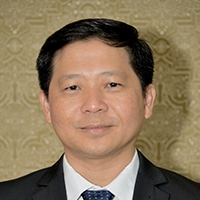
Vietnam
Manh Tuong Ho
HO, Manh Tuong
MD, MCE, MBA
Dr. Tuong M Ho is the founder and leader of IVFMD Group, which operates seven IVF centers in Vietnam, conducting more than 9,000 IVF/ICSI cycles per year. He has been working in the field of assisted reproductive technology since 1997 as embryologist and clinician.
Dr Ho has been board member of the Asia Pacific Initiative on Reproduction (ASPIRE) since 2012 and Vice President of ASPIRE (2018-2020). He is Associate Editor of Vietnamese Journal of Obstetrics and Gynecology. He serves as Secretary General for Ho Chi Minh City Society for Reproductive Medicine (HOSREM).
Dr. Tuong M Ho is Director of HOPE Research Center (My Duc Hospital, Viet Nam). He and his group have had more than 40 publications in international journals during the last five years, including NEJM, Human Reproduction, Fertility and Sterility, RBMO, JARG… His recent interests are frozen embryo transfer, in-vitro maturation of oocyte and quality management in IVF.
Reproductive Outcome of ART in Vietnam
Assited reproductive technology (ART) has developed rapidly in Viet Nam reently. The country has than 40 IVF centers and there has been no official country registry on ART. Yet, it is estimated that the country has more than 28,000 new IVF cycles and more than 25,000 frozen embryo transfer cycles in 2020. ART procedures applied include IVF/ICSI, IVM, PGT, gamete/embryo donation (only for local clients), gestational surrogacy for medical indications…
The presentation provides different ART outcomes in Viet Nam based on pulished data of large trials and reports. The data includes result of freeze-only versus fresh-first embryo transfer strategies, outcome of frozen/fresh embryo trasfer, development of children born from frozen/fresh embryos…
Treatment parameters and outcomes, including cummulative pregnancy rate per treatment cycle are reported based on data collected from large IVF centers. Treatment results of the improved IVM system for women with high AFC will also presented.
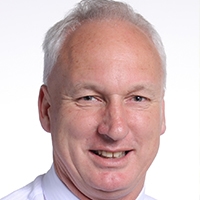
New Zealand
Paul Hofman
Professor Paul Hofman
Liggins Institute
University of Auckland
Professor Hofman is an clinical endocrinologist and researcher based at the Liggins Institute, University of Auckland. He has been involved in clinical research for 30 years and published over 200 papers. His major research interests focus on the developmental origins of adult health and disease. This encompasses the impact of prenatal under and over nutrition in later life, as well as the effect of alterations in the periconceptual environment such as wih assisted reproductive techniques. He is involved in promoting endocrine training in the Asia Pacific Region as well as improving paediatric endocrine care in resource constrained countries in the Asia Pacific region.
Paul Hofman
Peadiatric Outcomes of Assisted Reproductive Technologies
Infertility is common with 1 in 6 couples having difficulty conceiving. The subsequent rise in assisted reproductive technologies has led to an increasing prevalence of births conceived with these approaches. Up to 1-5% of children are now conceived by IVF with another 5% conceived following ovarian stimulating fertility drugs. While the majority of these children appear normal at birth there is an increased incidence of preterm delivery and small for gestation age. There is also an increased risk of fetal malformation, although appears related more to the underlying causes for the subfertility than the assisted reproductive technology used. There are also multiple reports of an increased rate of imprinting disorders with Beck Wiedemannn syndrome being up to 9x greater prevalence than the background. Longer-term outcomes do appear mainly normal. In particular, neurological and developmental outcomes appear no different to normally conceived children. However, comparisons are difficult for a number of reasons, including a heterogeneous assisted reproductive technologies group cohort (including SGA and preterm children) and all centres have different approaches to IVF, culture media etc. and these change over time. Therefore, it would not be unexpected to get different results from different centres and that these may change over time. Most larger studies incorporate multiple centres and the entire cohort rather than focussing on term, normal birth weight infants. In this talk, I will present data where only term, normal birth weight survivors are included and compared to similar, healthy siblings and peers. In this cohort we demonstrate there are growth differences and these show a gender effect being more prevalent in girls. While these findings suggest IVF and related reproductive technologies are safe they do suggest that differences do occur and that ongoing monitoring is needed.
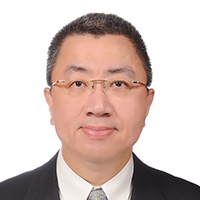
Taiwan
Hong-Yuan Huang
Hong-Yuan Huang, MD.
Professor Hong-Yuan Huang received his MD from Chung-Shan Medical University in Tai-Chung, Taiwan. He held the position of an attending physician in the Department of Obstetrics and Gynecology, Chang Gung Memorial Hospital. He completed his fellowship in reproductive immunology in Stanford University, United States. He was pointed as Director of Division of Reproductive Endocrinology and Infertility, as well as Professor of Obstetrics and Gynecology at the Chang Gung Memorial Hospital.
Professor Huang is a full Professor of the Chang Gung University and College of Medicine. He has published more than 95 PubMed articles. His research is aimed at various aspects of clinical and reproductive medicine; especially in reproductive immunology, endometriosis and nanomedicine.
Hong-Yuan Huang
Ethical Challenges in ART in 2021
Infertility is a global “medico-socio-cultural” problem with a “gender-based” suffering. Traditional infertility treatments usually do not cause ethical issues, because natural intercourse and reproduction are not separated. ART involves the acquisition of gametes, in vitro embryo culture and manipulation, embryo diagnosis, and the assessment of the recipient’s implantation environment, it will trigger a lot of ethical debates, disagreements and controversies. From the perspective of ethics and morality, the role of embryos will also depend on religion, culture, race, legislation and national conditions have different views and definitions.
Medical ethics is originally a set of moral principles that apply value to clinical medicine and scientific research. Therefore, if ART treatment provides moral evidence, there are several moral principles: Autonomy-the patient’s right to accept or reject treatment; Non-maleficence – do no harm; Beneficence – benefit-do the best for the patient; Justice-fair distribution of scarce resources, protect patients’ dignity, authenticity and honesty. However, such ethical and moral principles have created tensions between justice and practical principles, which may lead to gaps in access to ART treatment services. In particular, the moral stage of embryos is the key to all ethical considerations and legislation related to ART therapy in different societies; such as international medical care.
After the birth of the first test-tube baby in 1978, more than 5 million babies have been born around the world. ART covers all fertility assistance measures involving laboratory processing of gametes or embryos, but the routine use of newer treatment techniques in this field has caused many ethical and moral issues. In the absence of any acceptable ethical consensus, the huge, profitable, and almost unregulated ART business has grown; this includes cryopreservation of genetic materials, reduction of multiple/multiple pregnancies, and fertility. Preservation, donation of gametes and embryos, pre-implantation testing, surrogacy/gestational mother, sex and reproductive ethics, gender selection, mitochondrial transfer, gene editing, cross-border reproductive medicine, etc. These all require our introspective.
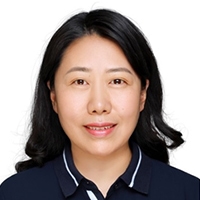
China
Xiaowu Huang
Mrs. Xiaowu Huang is interested in Gynecology endoscopy surgeries especially hysteroscopy. Her research direction is infertility and reproductive surgery. She is vice-director of Hysteroscopic Center in Fuxing Hospital affliated of Capital Medical University. She is the member of the Reproductive Medicine Branch of Chinese Medical Doctor Association, also the secretary of the Hysteroscopic Group of Chinese Maternal and Children Health Association and vice group leader of the Hysteroscopic Group of Gynecologic Endoscopic Branch in Chinese Medical Doctor Association.
Xiaowu Huang
Uterine Septum: When Should it be Removed?
Hysteroscopic metroplasty has become the current treatment of choice for septate uterus. Although observational studies have found a benefit in removing the septum in women with a history of infertility and miscarriage, current evidence is based on poor-quality data, and there are non-randomized comparative studies. There has been many discussions and debates on the indication for uterine septum removal surgery. It is recommended that hysteroscopic resection of a uterine septum can be offered for women with recurrent miscarriage by experienced specialists, but treatment for incidentally diagnosed septum in infertile women is debatable and unproven.
A retrospective study has been performed in Fuxing hospital affliated of Capital Medical University, 856 cases of transcervical incision of septum (TCIS) from 2016.1 to 2018.12 were enrolled. The median follow-up time is 44.1(34.0,52.9)months. It was divided into infertile group and adverse pregnancy outcomes group, the spontaneous pregnancy rate after TCIS in women with unexplained infertility is 77.4%(103/133), the reproductive outcome significantly improved after TCIS in adverse pregnancy group, and the live birth rate is 83.6%(378/452), the live birth rate of the cases who has more than 3 times of previous pregnancy loss (78.4%) is lower than that of less than 2 times of previous pregnancy loss, the average age of the cases who has more than 3 times of previous pregnancy loss is older than that of the cases less than 2 times of previous pregnancy loss.
So we recommended that hysteroscopic metroplasty should be performed for the patients who had previous adverse pregnancy outcome and the infertile patient especially for women with unexplained infertility.If surgery is planned, women should be fully informed of the limited evidence on its efficacy and of intraoperative and postoperative risks associated with surgery.
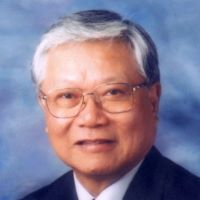
Ko-En Huang
Dr. Ko-En Huang has been Professor of Obstetrics and Gynecology and Superintendent Emeritus of Chang Gung University and Chang Gung Memorial Hospital in Kaohsiung, Taiwan since 1998. He was an Adjunct Professor of Obstetrics and Gynecology at the University of Rochester. Dr. Huang is a Reproductive Endocrinologist and a Board Certified Fellow of American College of Obstetricians and Gynecologists.
Dr. Huang is the founding president of the Taiwanese Menopause Society and Taiwan Osteoporosis Association. He was President of the Asia Pacific Menopause Federation (APMF) from 2004-2007, and Executive Board Member of International Menopause Society (IMS) from 2008-2014. He has been an Editorial Board Member of Journal of North American Menopause Society (NAMS) for many years.
Dr. Huang has published more than 160 peer reviewed papers in the area of Obstetrics and Gynecology.
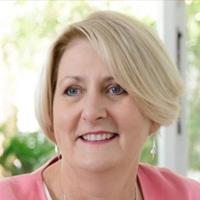
Australia
M. Louise Hull
Assoc/Prof Hull is a reproductive medicine subspecialist and biomedical scientist leads who is Head of Department in Obstetrics and Gynaecology and leads the Endometriosis Group and Fertility and Conception Theme at the Robinson Research Institute, University of Adelaide. Her Research is focused on basic science, application of digital technologies and clinical translation of research in endometriosis, implantation disorders and miscarriage. She publishes widely, presents at international conferences, and teaches and supervises PhD and medical students, registrars and reproductive medicine fellows.
Louise sits on ASPIRE’s Medical Advisory Committee, is the Australian country representative and co-chairs the special interest group on Implantation. She is an international ambassador for the World Endometriosis Society, the treasurer of ANZCREI, the chair of the AGES grant committee and was an Associate Editor for Human Reproduction.
Assoc Prof Louise Hull has founded and been a board director of 2 independent IVF units and served as Scientific Director and New Development’s Director. Dr Hull sees couples with fertility and reproductive medicine disorders at Embrace Fertility and Women’s and Children’s Hospital in Adelaide.
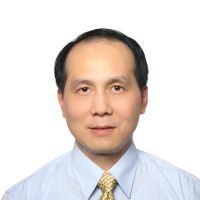
Taiwan
Jiann-Loung Hwang
Hwang Jiann-Loung GYN/OBS Clinic(TAIPEI IVF, Center for Reproduction and Genetics)
Jiann-Loung Hwang is president ofthe Hwang Jiann-Loung GYN/OBS Clinic(TAIPEI IVF, Center for Reproduction and Genetics)and aprofessor in the Department of Obstetrics and Gynecology at Taipei Medical University in Taipei, Taiwan.
A graduate in medicine from the National Taiwan University, also in Taipei, his areas of clinical and researchinterest include polycystic ovarysyndrome(PCOS), controlled ovarian hyperstimulation, laparoscopic surgery, and assisted reproductive technology.The first in vitro maturationbaby born toa PCOS patientin Taiwan was achieved by his team in 2001.He is considered a pioneer in the use of gonadotrophin-releasing hormone antagonists in the fertility setting in Taiwan.
Dr.Hwang is recognized asauthor or co-author of more than 150 peer-reviewed articles in leading reproductive medicinejournals, andis past president of the Taiwanese Society for Reproductive Medicine(TSRM), having held the positionfrom2008 to 2010;he is currently aboard member of the TSRM.
Jiann-Loung Hwang
Controlled ovarian stimulation for Preimplantation Genetic Testing
cycle
Preimplantation genetic testing (PGT) is one of recent major developments in ART.
The goal of controlled ovarian stimulation (COS) has transferred to produce the
maximal embryos for biopsy. It might be necessary to re evaluate the COS protocols
for PGT to increase efficiency. The following questions w ill be discussed in this
presentation
1. Will COS and the associated clinical parameters such as peak serum estradiol
levels, number of oocytes retrieve d etc.… influence the embryo euploidy?
2. How many oocytes do w e need to maximize outcomes in PGT?
3. What is the appropriate pituitary suppression regimens for the PGT cycles?
4. Could the criteria for ovulation triggering be modified to increase the oocyte
yield?
5. Would agonist trigger influence the embryo euploidy?
6. What is the role of DuoStim in PGT?
S
uggest reading:
1. Rodriguez Purata J Martinez F. O va rian stimulation for preimplantation genetic
testing Reproduction. 2019; R127 R142.
2. Mizrachi Y et al. Update. Ovarian stimulation for freeze all IVF cycles: a systemic
rev iew. Hum Reprod. 2020;26:119 136.
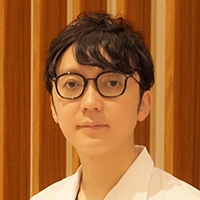
Japan
Takuhiko Ichiyama
Dr. Takuhiko Ichiyama is the deputy director of Juntendo University Urayasu Hospital Reproduction Center, located in Urayasu City, Japan.
He received training from Dr. Atsushi Tanaka in Saint Mother Hospital, which is one of the premier fertility clinics in Japan.
He is a researcher who has gathered the attention in the area of implantation particularly microbiome analysis and chronic endometritis.
He won the YOUNG INVESTIGATOR AWARDS and BEST ORAL PRESENTOR AWARDS in ASPIRE 2019.
The primary goal of his research is improving reproductive microbiota of repeated implantation failure (RIF) patients through appropriate medical intervention and improve the implantation and birth rates for these patients.
Takuhiko Ichiyama
Bacteria make up approximately 1%−3% of the human body weight; it can be said that the human is symbiotic with bacteria. Research on the microbiome began in the 1960s with the isolation and culture of intestinal bacterial species. In the 1980s, 16S rRNA gene sequence analysis using PCR was developed, which made it possible to detect bacterial species including unculturable bacteria. With the advent of next-generation sequencing technologies, a large amount of sequence data can be quickly collected and comprehensively analyzed.
Research is progressing on the bacteria associated with many organs, such as the intestine, oral cavity, skin, and vagina. It has now been found that microbiota are also present in the uterus, amniotic fluid, placenta, etc., which were conventionally considered sterile organs. Dysbiosis of reproductive organs is attracting attention as a new cause of implantation failure, and it is hoped that genital microbiota will be useful as biomarkers in clinical practice. Human microbiota may, in principle, be regulated by intake of prebiotics, which are compounds in food that induce the growth of beneficial bacteria, probiotics, which are live beneficial bacteria, and antibiotics, but methods to control this have not yet been established.
It must be understood that infectious disease is not synonymous with the presence of bacteria. There is no evidence that antibiotics improve dysbiosis. Inappropriate broad-spectrum antimicrobial treatment generates drug-resistant bacteria, which is a serious problem for society as well as individual patients. It will be a problem if, in the future, broad-spectrum antibiotics are given for treatment of chronic endometritis where the causative agent is not detected—inflammation is not always caused by bacterial infection.
In this lecture, the latest reports from Japan about genital microbiota will be described and future issues discussed.
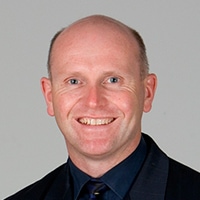
New Zealand
Neil Johnson
Professor Neil Johnson
Neil is President of the World Endometriosis Society. He holds an honorary position as Professor in Reproductive Health at the Robinson Research Institute, University of Adelaide, Australia, and holds an honorary academic position at the University of Auckland, New Zealand. He practices with Repromed Auckland and Auckland Gynaecology Group, Auckland, New Zealand. Neil is Past Chairperson of the Endometriosis New Zealand Trust Board, the RANZCOG subspecialty training program in Reproductive Endocrinology and Infertility, and is the New Zealand Representative to ASPIRE.
Neil Johnson
Eye of Newt and Tongue of Dog – What Evidence for Add-ons?
The short answer – compared to the volume of literature that has sought to address this topic – is “very little”!
Many adjuvant or add-on interventions have been tried (although not necessarily trialed) for their potential to improve successful outcome for both natural fertility and medically assisted reproduction. Most interest has focused on immunotherapy, vasodilators, uterine relaxants, aspirin, heparin, growth hormone (GH), dehydroepiandrosterone (DHEA), oestrogen and metformin.1 Although we strive to improve outcomes, particularly for the patient groups in whom just a ‘couple of per cent’ chance of improvement would mean a great deal, such as our poor responders and those having repeat failed treatment, robust evidence of benefit is largely lacking. The UK HFEA does not offer any add-on a green light!
Owing to the variable quality of literature and studies purporting to assess the potential benefit of adjuvant treatments, the application of a consistent standard is key to attaining an answer that even approximates to one free from bias and thus avoids the very real danger of cookery-based fertility practice. I suggest that the a priori standard to apply to the voluminous and heterogeneous literature should be that in which live birth (or at least clinical pregnancy) has been shown to be significantly improved in randomized controlled trial RCT study design.
The results will be drawn from contemporary reviews, guidelines, Cochrane systematic reviews and recent RCTs. There might be some surprises!
Reference:
Nardo LG, El-Toukhy T, Stewart J, Balen AH, Potdar N. British Fertility Society Policy and Practice Committee: adjuvants in IVF: evidence for good clinical practice. Hum Fertil 2015;18:2-15.

Cailin Jordan
Cailin Jordan is a Psychologist and Fertility Counsellor who has a passionate interest in preconception Health and Lifestyle change. Cailin chairs the Fertility Society of Australia’s’ Preconception Health Special Interest Group and is a member of the Your Fertility Advisory Panel. A graduate of London Guildhall University and Macquarie University, Cailin is completing her PhD in Barriers and Enablers for Preconception Lifestyle Change.
Cailin began her Psychology career at Sydney’s St. Vincent’s Hospital in Grief and Bereavement, moving into Suicide Prevention and then private practise in a women’s health practice, which led to her interest in fertility and assisting couples with lifestyle change to enhance their fertility. Cailin has a keen interest in helping couples and families optimise familial and relationship health.
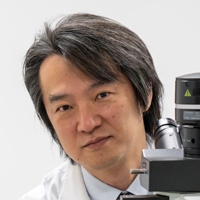
Japan
Kazuhiro Kawamura
Kazuhiro Kawamura, MD, PhD
Dr. Kazuhiro Kawamura is Director of Advanced Reproductive Medicine Research Center of International University Health and Welfare School of Medicine. He is also professor of Obstetrics and Gynecology of International University of Health and Welfare School of Medicine. He received his medical and philosophy degrees from the Akita University School of Medicine. His OB/GYN and Reproductive Endocrinology and Infertility training was at the Akita University School of Medicine. He was also a Postdoctoral Fellow at Stanford University School of Medicine with Dr. Aaron JW Hsueh. In addition to teaching and clinical practice, he has published over 150 original articles in ovarian physiology and Reproductive Endocrinology and Infertility. He collaborated with Dr. Hsueh to establish an in vitro activation (IVA) method to treat infertility in patients with primary ovarian insufficiency (premature ovarian failure) and achieved successful pregnancies/deliveries. Now, he is expanding the IVA treatment and studying to improve the clinical outcome of IVA using different approaches. He is also working on anti-aging therapy for female infertility.
In vitro activation (IVA) in severe endometriosis
Although gonadotropins are routinely used to stimulate folliculogenesis and generate mature oocytes in women seeking infertility treatment, some patients with poor ovarian responses (POR) or decreased ovarian reserve (DOR) showed the growth of few antral follicles after FSH or HMG stimulation. Although middle-aged women with low ovarian reserve showed poor responses to gonadotropin treatments, some young patients also responded poorly, likely reflecting early transition into premature ovarian insufficiency (POI). Severe endometriosis causes diverse abnormalities in reproductive functions. Induction of POR and DOR status is one of the major issues. Because POR or DOR patients showed low number of antral follicles after routine gonadotropin treatment yielding limited number of embryos for transfer, further improvement in infertility treatments are needed.
To induce follicle growth in remaining dormant follicles of premature ovarian insufficiency (POI) patients, we have developed a method for activation of dormant follicles by using in vitro culture of ovarian fragments treated with PI3K stimulators following disruption of Hippo signaling pathway (IVA, in vitro activation). The initial IVA approach relies upon disruption of the ovarian Hippo signaling pathway as well as stimulation of the ovarian PI3K/Akt signaling pathway to promote growth of primordial, primary, and secondary follicles. Because Hippo signaling disruption alone is effective in promoting secondary follicle growth and POR patients have multiple secondary follicles, and spontaneous activation of primordial follicles, we developed the method to promote follicle growth in POR patients by using a simplified, drug-free IVA approach involving only one surgery.
In this presentation, I will introduce two IVA approaches and share an idea for the infertility treatment of patients with severe endometriosis based on these IVA procedures.

Thailand
Sorapop Kiatpongsan
Sorapop Kiatpongsan, M.D., Ph.D.
Sorapop Kiatpongsan is a fertility physician and a decision scientist who is passionate about transforming how people live, learn and play through the lens of health and innovation. Sorapop believes that this transformation can and should be done through better and more integrated ecosystems that leverage emerging technologies. Sorapop has been leading new initiatives to build new platforms and ecosystems for impact and changes. He was a founding Managing Director of the Institute of Public Policy and Development (IPPD), a national think-tank established by the cabinet to drive Thailand’s long-term and sustainable development. Prior to that, Sorapop served as an Assistant to the President for Research and Innovation at Chulalongkorn University where he co-founded and directed CU Innovation Hub and Siam Innovation District (SID), a public-private partnership platform of Chulalongkorn University in collaboration with the government and private sector. Sorapop is currently a faculty member at Chulalongkorn University and a visiting professor at Sasin School of Management.
Sorapop has collaborated with funders, partners and the media to bridge research and innovation with practitioners and thought leaders. Sorapop’s research and engagement activities have been funded by the Bill & Melinda Gates Foundation, Informed Medical Decisions Foundation, UNESCO, UNDP, UNEP, UNFPA, American Society for Reproductive Medicine, Japan Society for the Promotion of Science, Thai National Health Foundation, Thai Health Promotion Foundation, National Science Technology and Innovation Policy Office, Ministry of Public Health, Ministry of Science and Technology, National Statistical Office, Anandamahidol Foundation, Harvard University and Chulalongkorn University. His work and publications have been featured in various media and outlets such as Harvard Business Review, The New York Times, The Washington Post, The Huffington Post, The Economist Intelligence Unit, TED.com, Fortune.com, Fast Company, and State of World Population.
Sorapop is deeply invested in community and capacity building for sustainable growth and impact. He served on the Human Research Ethics Committee (IRB) of Harvard University-affiliated hospitals and served on the International Engagement Committee and the Policy Committee of the Society for Medical Decision Making. He has been recognized by various organizations and entities for his leadership and contributions. Notable recognitions include the George Bennett Fellowship by the Informed Medical Decisions Foundation, the Certificates of Distinction in Teaching from Harvard University, Asia Society’s Asia21 Young Leader, the Lee Lusted Award and the Young Scientist Asia-Pacific Award from the Society for Medical Decision Making and the S.S. Ratnam Young Gynaecologist Award from the Asia & Oceania Federation of Obstetrics & Gynaecology. Sorapop obtained his training in Reproductive Endocrinology and Infertility from Harvard Medical School, fellowship training in Science, Technology and Innovation Policy from Harvard Kennedy School, Ph.D. in Health Policy and Decision Sciences from Harvard University, and M.D. from Chulalongkorn University.
Sorapop Kiatpongsan
How healthcare policy can be implemented to make IVF affordable
While infertility is WHO’s Global Public Health Agenda, ART services are not accessible to the majority of infertile couples due to the high cost of treatments. Infertility and ART are not considered a priority in many low and middle-income countries. Common reasons against ART are overpopulation, competing health priorities, limited resources and limited capabilities.
This presentation will provide an overview of issues related to accessibility and affordability of IVF. Roles and challenges of healthcare policy and measures to address accessibility and affordability of IVF will be discussed. The presentation will also identify other barriers and success factors beyond the scope of healthcare policy. Data specific to Asia and the Pacific region on fertility physicians’ willingness to provide fertility treatments on various scenarios and their support on public funding for various conditions will be discussed. Insights from cost-benefit analyses and return on investment in human capital will be compared and contrasted including short- and long-term evaluation of policies and measures.
In conclusion, in order to address accessibility to and affordability of IVF in a comprehensive and sustainable manner, we will need to think and implement measures beyond a scope of healthcare policy. Policies and measures will need to be contextualized. Eligibility criteria and limits will need to be carefully designed and evaluated. Both direct and indirect costs should be considered to ensure that financial burdens are adequately addressed. Emphasis will be not only on how healthcare policy can be implemented but also on how it should be implemented to make IVF more affordable and accessible.
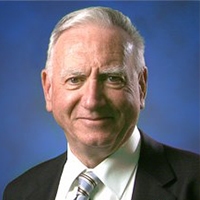
Australia
Gab Kovacs
Professor Gab Kovacs AM.
Editor-in-Chief of Fertility and Reproduction The Official Journal of Aspire.
Currently Director of O & G Institute, Epworth Healthcare,
and Professor of O & G Monash University, and a Director of Compass Fertility, an IVF Unit in Canberra.
Reproductive gynaecologist, member of Monash IVF team 1978-2015.
Gynaecologist to Reproductive Medicine Clinic, Prince Henry’s Institute 1978- 2000
Medical Director Family Planning Victoria 1980-1991.
Authored/co-authored more than 175 articles, and edited/co-edited 15 textbooks (13 for Cambridge University Press). Also authored/co authored five books for the lay public.
Past President of Family Planning Australia, Past President of The Fertility Society of Australia, Past Chair of IVF Directors’ Group, and Past Councillor RANZCOG. He served a three year term Board Director at Northern Health.
Now semi-retired, but actively involved in administration, teaching and research.
Gab Kovacs
How to Review a Scientific Paper
Scientific papers undergo “peer-review” by experts in the field for a number of reasons.
First and most importantly, to ensure that the material is correct and feasible, and that the results are plausible.
Secondly that the presentation is logical and that after reading the paper, a colleague working in the field could reproduce it.
Thirdly it is the referee’s responsibility to advise the Editorial team on whether the paper deserves to be published.
In deciding this, the referee needs to be convinced that the paper will make a contribution to existing knowledge; either providing new information, providing much larger numbers of subjects studied than previously published.
How should one do this?
The first requirement is that the paper should be assessed as soon as possible. Remember, it takes the same time whether it is done today or in one month.
Confirm that you have no conflict of interest.
- Read through the paper without any preconceived opinion about whether it should be published
- Make a brief summary of the main points covered by the authors in a couple of sentences- this will be introduction to your review.
- Evaluate the paper-
- Has the paper achieved its aim?
- Is the paper a contribution to current knowledge?
- Is the methodology correct?
- Are the results feasible?
- Are the conclusions valid?
- Is the literature review relevant and extensive?
- Are any key references in the area not mentioned
- Is the paper well written?
- Not too verbose, no repetition
- Could the paper be improved?-supply comments to the editors and the authors
- Make a recommendation
Finally, you may ask, why should I spend my time refereeing someone else’s work?
First it is our responsibility to ensure that standards are upheld in our field of research, and that published material is appropriate.
Secondly there are personal rewards; being updated on the latest work in the area, enhancing one’s reputation by being considered an “expert”, the goodwill from editors, and expanding one’s curriculum vitae with membership of journal editorial boards, and the satisfaction of contributing to one’s profession.
Social oocyte freezing:
It is an insurance policy, but the small print says it may not “pay out”.
Cryopreservation of embryos was developed in the early 1980’s as a way of increasing the efficiency of the In Vitro Fertilisation (IVF) process.
It has now become a routine part of IVF with some clinics abandoning fresh embryo transfers, switching to “freeze only” cycles.
Fertility preservation has also been widely applied, for women who are undergoing treatments which would effect their fertility, such as chemo and radiotherapy, or ovarian surgery. Initially this was undertaken by freezing embryos, but this was only available for women with a male partner, or required the use of donor sperm.
With the development of oocyte freezing, especially with vitrification, it became possible to freeze oocytes with respectable survival rates, without the involvement of a male partner.
With the current trend of delaying starting a family, and the decline in female fertility with age, it has now become possible for women to preserve their fertility potential by freezing oocytes for social reasons, known as “Social Oocyte Freezing” (SOF).
The argument for SOF is that it enables a woman to fulfill her career dreams, allows her time to choose a suitable life partner without the pressure of the “biological clock”.
Unfortunately there are also several arguments against utilising this technology.
First, it requires Assisted Reproductive Technology instead of the simple act of sexual intercourse with the associated costs, dangers and possible complications.
Secondly many women who store their oocytes may never return to use them, either because they have found a partner with who they conceive spontaneously, or they have never found the right time to have children.
There is also the possibility that despite a woman’s best efforts and the use of all her frozen oocytes a pregnancy may not be achieved, let alone completing a family.
If oocyte freezing is decided upon, then it needs to be decided how many oocytes are needed.
Although success rates for using warmed vitrified oocytes for IVF has improved, there is still no guarantee that a pregnancy will result. Dr Oktay’s (one of the most experienced practitioners at oocyte freezing) “Success Rate Indicator” available on “fertilitypreservation.org” states that a woman who freezes oocytes at 35 years of age and has 8 oocytes survive thawing, has a 19.3% chance of a live birth. This suggests 40 oocytes would need to survive from oocytes frozen at age 35 years of age to give a probability of a “one” for one live birth. Furthermore, most women want more than one child to have a family, so more eggs and multiple attempts would be needed to achieve this; let alone allowing for foetal abnormalities or early pregnancy losses.
Nevertheless, the technology is widely available, and on a commercial “user pays” basis should be available to women worldwide.
The important ethical restriction is that women should be fully informed about all the above factors. The costs involved should also be transparent, including the cost of using IVF subsequently, not just the cost of the freezing process.
When IVF was developed for the treatment of woman with tubal in fertility, it was not envisaged that SOF would be a possible application of the technology.
Social oocyte freezing:
It is an insurance policy, but the small print says it may not “pay out”.
Cryopreservation of embryos was developed in the early 1980’s as a way of increasing the efficiency of the In Vitro Fertilisation (IVF) process.
It has now become a routine part of IVF with some clinics abandoning fresh embryo transfers, switching to “freeze only” cycles.
Fertility preservation has also been widely applied, for women who are undergoing treatments which would effect their fertility, such as chemo and radiotherapy, or ovarian surgery. Initially this was undertaken by freezing embryos, but this was only available for women with a male partner, or required the use of donor sperm.
With the development of oocyte freezing, especially with vitrification, it became possible to freeze oocytes with respectable survival rates, without the involvement of a male partner.
With the current trend of delaying starting a family, and the decline in female fertility with age, it has now become possible for women to preserve their fertility potential by freezing oocytes for social reasons, known as “Social Oocyte Freezing” (SOF).
The argument for SOF is that it enables a woman to fulfill her career dreams, allows her time to choose a suitable life partner without the pressure of the “biological clock”.
Unfortunately there are also several arguments against utilising this technology.
First, it requires Assisted Reproductive Technology instead of the simple act of sexual intercourse with the associated costs, dangers and possible complications.
Secondly many women who store their oocytes may never return to use them, either because they have found a partner with who they conceive spontaneously, or they have never found the right time to have children.
There is also the possibility that despite a woman’s best efforts and the use of all her frozen oocytes a pregnancy may not be achieved, let alone completing a family.
If oocyte freezing is decided upon, then it needs to be decided how many oocytes are needed.
Although success rates for using warmed vitrified oocytes for IVF has improved, there is still no guarantee that a pregnancy will result. Dr Oktay’s (one of the most experienced practitioners at oocyte freezing) “Success Rate Indicator” available on “fertilitypreservation.org” states that a woman who freezes oocytes at 35 years of age and has 8 oocytes survive thawing, has a 19.3% chance of a live birth. This suggests 40 oocytes would need to survive from oocytes frozen at age 35 years of age to give a probability of a “one” for one live birth. Furthermore, most women want more than one child to have a family, so more eggs and multiple attempts would be needed to achieve this; let alone allowing for foetal abnormalities or early pregnancy losses.
Nevertheless, the technology is widely available, and on a commercial “user pays” basis should be available to women worldwide.
The important ethical restriction is that women should be fully informed about all the above factors. The costs involved should also be transparent, including the cost of using IVF subsequently, not just the cost of the freezing process.
When IVF was developed for the treatment of woman with tubal in fertility, it was not envisaged that SOF would be a possible application of the technology.
Social oocyte freezing:
It is an insurance policy, but the small print says it may not “pay out”.
Cryopreservation of embryos was developed in the early 1980’s as a way of increasing the efficiency of the In Vitro Fertilisation (IVF) process.
It has now become a routine part of IVF with some clinics abandoning fresh embryo transfers, switching to “freeze only” cycles.
Fertility preservation has also been widely applied, for women who are undergoing treatments which would effect their fertility, such as chemo and radiotherapy, or ovarian surgery. Initially this was undertaken by freezing embryos, but this was only available for women with a male partner, or required the use of donor sperm.
With the development of oocyte freezing, especially with vitrification, it became possible to freeze oocytes with respectable survival rates, without the involvement of a male partner.
With the current trend of delaying starting a family, and the decline in female fertility with age, it has now become possible for women to preserve their fertility potential by freezing oocytes for social reasons, known as “Social Oocyte Freezing” (SOF).
The argument for SOF is that it enables a woman to fulfill her career dreams, allows her time to choose a suitable life partner without the pressure of the “biological clock”.
Unfortunately there are also several arguments against utilising this technology.
First, it requires Assisted Reproductive Technology instead of the simple act of sexual intercourse with the associated costs, dangers and possible complications.
Secondly many women who store their oocytes may never return to use them, either because they have found a partner with who they conceive spontaneously, or they have never found the right time to have children.
There is also the possibility that despite a woman’s best efforts and the use of all her frozen oocytes a pregnancy may not be achieved, let alone completing a family.
If oocyte freezing is decided upon, then it needs to be decided how many oocytes are needed.
Although success rates for using warmed vitrified oocytes for IVF has improved, there is still no guarantee that a pregnancy will result. Dr Oktay’s (one of the most experienced practitioners at oocyte freezing) “Success Rate Indicator” available on “fertilitypreservation.org” states that a woman who freezes oocytes at 35 years of age and has 8 oocytes survive thawing, has a 19.3% chance of a live birth. This suggests 40 oocytes would need to survive from oocytes frozen at age 35 years of age to give a probability of a “one” for one live birth. Furthermore, most women want more than one child to have a family, so more eggs and multiple attempts would be needed to achieve this; let alone allowing for foetal abnormalities or early pregnancy losses.
Nevertheless, the technology is widely available, and on a commercial “user pays” basis should be available to women worldwide.
The important ethical restriction is that women should be fully informed about all the above factors. The costs involved should also be transparent, including the cost of using IVF subsequently, not just the cost of the freezing process.
When IVF was developed for the treatment of woman with tubal in fertility, it was not envisaged that SOF would be a possible application of the technology.
How to prepare the endometrium for implantation
The last step in the IVF obstacle course, is implantation.
The following factors need to be considered for successful implantation.
Timing:
The embryo has to be transferred during the “window of implantation” (WOI), when the endometrial phenotype is “receptive”.
Hormones:
There is increasing evidence from observational studies and randomized controlled trials that in stimulated IVF cycles the endometrium is poorly prepared, and it suggested by some, that all embryos should be frozen at the blastocyst change, with subsequent transfer in an unstimulated (natural or hormone replacement) cycle.
Genetics of Implantation:
The Endometrial Receptivity Analysis (ERA®) focuses on recognizing the endometrial receptivity transcriptome. Non-receptive endometrium is thought to be due to transcriptomic displacement of WOI. This is then used to develop a personalised progesterone administration regimen.
Uterine microbiome:
The microbiome of the endometrium can now be assessed by by molecular techniques (polymerase PCR, microarrays and targeted and whole genome sequencing). It is proposed that presence of dysbiotic bacgteria may be a cause of recurrent implantation failure (RIF)
Oestrogen and progesterone:
It is hypothesized that a premature elevation of P4 levels prior to ovulation trigger, might alter endometrial-embryo synchrony by temporally advancing the endometrial receptivity window.
Endometrial “scratch”
There is some evidence that endometrial injury performed in the previous cycle is associated with improved clinical pregnancy rates and live birth rates in women with more than two previous embryo transfers.
Removing intrauterine pathology.
Women with Recurrent Implantation Failure (RIF) should have a hysteroscopy.
There is evidence that removal of submucous fibroids, and maybe intramural fibroids and polyps will improve implantation rates.
Dummy ET
Dummy ET minimizes the risk of a difficult transfer, increases pregnancy rates, and is a useful tool in IVF training programmes.
Rest after ET
There is no evidence that this is beneficial.
Sex after ET
There is growing evidence that sexual intercourse before or around the time of embryo transfer may have benefits for IVF/ET success.
NK Cells
Uterine Natural Killer Cells (uNKC) are specialized lymphocytes that play a role in regulating the remodeling of uterine spiral arteries.
However, assays to measure NK cells in the blood and the uterus in women are highly controversial. As the role of uNKC in RIF is unproven, any therapeutic approach is not logical.
Immunotherapy:
RIF may be caused by systemic or local immune disturbances. Several trials with or without control groups have investigated whether intravenous immunoglobulin (IvIg) improves outcome after IVF/ICSI in RIF patients reporting a subsequent birth rate ranging from 15% to 75%. However, only one trial was adequately randomized and the definition of RIF was generally unclear.
Prednisolone has been tested in 13 randomized controlled trials among non-RIF patients undergoing IVF/ICSI. A meta-analysis found that it improved pregnancy rate after IVF but not ICSI.
Intralipid has in two studies of women with “reproductive failure” been reported to be associated with subsequent birth rates similar to those after IvIg. However, one small randomized controlled study conducted in IVF patients suggested no beneficial effect of intralipid.
Antocoaggulants:
Studies so far have failed to show that aspirin or heparin have benefits in cases of unexplained RM or the assisted reproduction field.
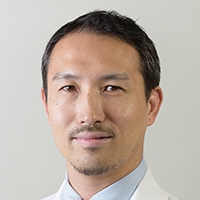
Japan
Keiji Kuroda
Keiji Kuroda, M.D., Ph.D.
Position: Division Manager of Implantation Research and Endoscopy
Affiliation: Sugiyama Clinic Shinjuku, Center for Reproductive Medicine and Implantation Research
Medical Specialization
Reproductive medicine and endoscopy
Research and professional experience:
2001-04, Clinical training in Juntendo university, Tokyo
2004-05, Research associate at the Dept. of physiology, in Tokyo women’s medical university, Tokyo
2005-10, Assistant professor in Juntendo university, Tokyo
2010-11, Postdoc researcher in Imperial college London, UK
2011-12, Postdoc researcher in University of Warwick, UK
2012-2018, Associate professor in Juntendo university hospital, Tokyo
2018-present, Division manager, Sugiyama Clinic Shinjuku, Tokyo
Part-time associate professor in Juntendo university, Tokyo
Keiji Kuroda
Repeated Implantation Failure: Do We Have A Test Yet?
Overcoming repeated implantation failure (RIF) after multiple embryo transfer (ET) cycles using high-quality embryos is considered difficult with common IVF procedures. The risk factors for RIF include problems with intrauterine circumstances, embryos, and maternal immunological function.
Implantation testing should be easy, effective, and inexpensive. Our treatment strategy is called OPtimization of Thyroid function, Immunity, and Uterine Milieu (OPTIMUM treatment strategy). In our study, infertile women with RIF after ≥3 ET cycles underwent the implantation testing that included hysteroscopy, endometrial biopsy for CD138 immunostaining and bacterial culture, and determination of interferon-γ–producing Th cells (Th1 cells), IL-4–producing Th cells (Th2 cells), serum 25-hydroxyvitamin D3 (25OHVD), and thyroid hormone levels. Chromosomal testing of embryos, endometrial microbiome analysis, and endometrial receptivity array (ERA) were not performed. We treated chronic endometritis (CE) with antibiotics, aberrant high Th1/Th2 cell ratio with vitamin D and immunosuppressive drug (tacrolimus) supplementation, and overt or subclinical hypothyroidism with levothyroxine therapy. Of 92 women with a history of RIF, 72 underwent 105 ET cycles after implantation testing and treatment between April 2017 and August 2018.
Women with RIF had a mean age of 38.3 ± 3.8 years and an implantation failure history of 6 ± 3 (3-19) ET cycles. Implantation testing identified impaired intrauterine circumstances in 75 women (64.7%), an aberrant elevated Th1/Th2 cell ratio in 56 women (48.3%), and thyroid abnormalities in 33 women (28.4%). Cumulative ongoing pregnancy rates including spontaneous pregnancy in the patients aged < 40 and ≥ 40 years were 72.7% (40/55 women) and 45.5% (15/33 women) within two ET cycles, respectively.
Optimizing thyroid function, intrauterine environment, and maternal immunity may improve the pregnancy outcomes in patients with a history of RIF; however, for women with RIF and aged ≥40 years, chromosomal testing of embryos is required to improve the pregnancy rate.
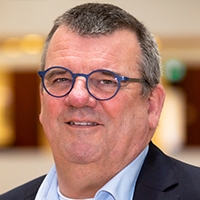
Netherlands
Joop S.E. Laven
Professor Joop S.E. Laven
Professor of Reproductive Medicine, Erasmus Medical Centre, Rotterdam The Netherlands.
Professor Joop S.E. Laven is professor in Obstetrics and Gynaecology and a subspecialist Reproductive Endocrinology & Infertility based at Erasmus University Medical Centre in Rotterdam, The Netherlands. He is a member of ESHRE, ASRM, the Endocrine Society, the Society for Reproductive Investigation (SRI) and the Royal Dutch College of Obstetrics and Gynaecology. He is the past president of the Dutch Society of Reproductive Medicine and president elect of the Androgen Excess-PCOS society..
For many years he had a particular interest in the management of polycystic ovary syndrome covering the full spectrum from the effects of the syndrome during adolescence and adult life on the menstrual cycle, fertility, body weight and cosmetic aspects. During the last decade the research focussed on more fundamental effects that PCOS may have on quality of life and long-term health risks as well as the genetic basis of the disease. More recently he was also involved in Genome Wide Association Studies (GWAS) exploring the genetic basis of PCOS, premature ovarian insufficiency, menarche and menopause.
Clinical work focuses on women’s health in particular reproductive endocrinology and menopause as well as on infertility treatment and ART and pregnancy outcome in infertile couples especially women with PCOS. He is the head of the Rotterdam Erasmus MC Reproductive Medicine Unit, which performs approximately 3000 IVF cycles per year.
He has published over 300 peer-reviewed papers and several reviews as well as chapters in books, and has delivered over 300 lectures to international scientific audiences.
Currently he is living together with Annemarie Rietveld, he is the proud father of 4 sons and one grandson. In his rare free private time you might see him fly-fishing or biking or just being lazy on Sunday afternoons listening to Van Morrison.
Joop S.E. Laven
Poor Responders and Low Ovarian Reserve: How to deal with poor responders?
This presentation will summarize the existing information concerning the data on how to improve results of ovarian stimulation in women with poor response during an IVF/ICSI treatment cycle. First of all it important to conclude that it is because of ageing that women have expected poor response. This is mainly due to decreasing numbers of follicles as well as an increase in DNA damage. Also the acidity of FSH isoforms changes with increasing age trying to compensate for this mechanism. Hence one of the first approaches that were taken was to increase the dosage of FSH in women with a previous poor response.
Due to the latest data of the larger trials in the field and a recent Cochrane meta-analysis it seems that increasing the dose of FSH in expected as well as in unexpected poor responders does not lead to an increase in either clinical pregnancy or in cumulative live birth rates. Using an GnRH agonist protocol might be of value since in poor responders (in terms of oocyte yield and age) cumulative live birth rates seem to be slightly higher compared to antagonist protocols.
As far as adjuvant protocols are concerned it seems that adding Growth Hormone to the stimulation protocol is beneficial as it increases oocyte yield and oestradiol levels at the day of hCG and results in more transferable embryos. Although it does not increase clinical or cumulative live birth rates. Similarly, using hCG is only beneficial for increasing the number of oocytes retrieved it does not impact on cumulative live birth rates whereas it seems that there is no role for rLH in poor responders.
On the contrary pre-treatment with Dehydroepiandrosterone (DHEA), Testosterone or CoQ10 are all beneficial since they increase clinical pregnancy rates significantly. The exact mechanism by which these compounds are affecting outcome in women with poor response has to be elucidated but it seems that they impact on FSH sensitivity of individual follicles.
Co treatment with Oestradiol during the luteal phase in order to synchronise follicle cohorts is not beneficial. Similarly, Letrozole and Clomiphene Citrate do decrease the need for exogenous FSH however, they might impact negatively on implantation. They definitely neither improve cumulative live birth rates nor do they impact on clinical pregnancy rates.
To summarize co treatment with DHEA or Testosterone as well as co treatment with CoQ10 seem to impact on pregnancy rates the outcome which is most important for our patients. All other interventions generally used to improve the outcome in poor responders are neither clinically effective nor cost effective.
Genetics of Menopause: Time for a New Paradigm?
This presentation will summarize the existing information concerning the genetic background of natural menopause. There is overwhelming evidence that majority of genes are involved in DNA double strand break repair, mismatch- and base excision-repair. The remaining loci were involved in cell energy metabolism and immune response.
Gradual accumulation of unrepaired DNA damage causes premature cell death and cellular senescence. This in turn results leads to exhaustion of cell renewal capacity and cellular dysfunction in affected organs and eventually to ageing of the entire soma. Similar erosion of the genome occurs within the germ cell line and the ovaries. Subsequently the systemic ‘survival’ response intentionally suppresses the sex-steroid hormonal output leading to accelerated follicular loss and depletion of the primordial follicle pool, which in turn may contribute to onset of menopause. The latter occurs in particular when age-dependent DNA damage accumulation is not properly repaired. Both effects are expected to synergize to promote (premature) ovarian silencing and install (early) menopause.
Consequently, ageing of the soma seems to be a primary driver for the loss of ovarian function in women. This challenges the current dogma which implies that loss of ovarian function initiates ageing of the soma. It is time for a paradigm shift!
Moreover, ovarian ageing is one of the causes of female infertility or subfertility, the latter therefore constitutes probably an early marker for the susceptibility for the so called non communicable diseases such as diabetes, cardiovascular and neurodegenerative diseases.
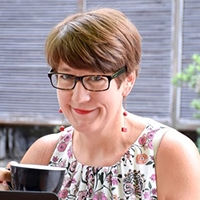
China
Gendie Lash
Dr Gendie Lash
Division of Uterine Vascular Biology
Guangzhou Institute of Pediatrics
Guangzhou Women and Children’s Medical Center
Gendie Lash is a Principle Investigator in the Guangzhou Institute of Pediatrics, Guangzhou Women and Children’s Medical Center. She graduated from the Department of Biochemistry at the University of Otago, Dunedin, New Zealand with a BSc (Hons) and PhD. She then worked as a post-doctoral fellow at the University of Nottingham, UK, Queen’s University, Canada and Newcastle University, UK. She was also a lecturer at Newcastle University before moving to Guangzhou in July 2015. Her research program focuses on development and remodeling of the uterine spiral arteries and how failures in these processes impact on women’s reproductive health. In addition, she also studies regulators of cancer metastasis and angiogenesis.
She has published over 100 papers and book chapters, including approximately 70 original articles, the others being review articles, workshop reports, editorials and book chapters. She is the Editor of Trophoblast Research (supplement to Placenta) and serves on the Editorial Boards of Journal of Reproductive Immunology and Scientific Reports. She reviews for a wide range of journals and grant funding bodies. In China her funding comes from the NFSC and Guangzhou City Science and Technology Fund.
Gendie Lash
The role of uterine natural killer cells in implantation
Decidual leukocytes make up approximately 30% of all decidual stromal cells in early pregnancy, of which 70% are uterine natural killer (uNK) cells. Uterine NK cells are phenotypically distinct from peripheral blood NK cells, being CD56brightCD16-. A recent single cell sequencing project of the decidua identified 3 subsets of uNK cells, but we are yet to determine how they differ functionally. Several roles from uNK cells in implantation are starting to emerge including biosensing of poor quality embryos, killing of bacteria infected trophoblast, spiral artery remodeling and regulation of trophoblast invasion. Altered numbers of uNK cells have been identified in several pathological conditions, but whether this is causative of the condition is currently unclear.
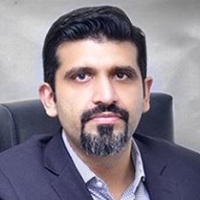
Pakistan
Haroon Latif
Dr. Haroon Latif Khan
1. Asia Pacific Initiative on Reproduction (ASPIRE)
Board Member (2016 to date)
2. IVF Society of Pakistan
General Secretary (2008 to date)
3. Founder Member of Pakistan Society of Andrology & Sexual Medicine (PSASM)
General Secretary (2013 to date)
4. European Society of Sexual Medicine
Member (2012 to date)
Dr. Haroon graduated in 2001 with MD from Baqai Medical University, Karachi, Pakistan. He obtained Master’s in Clinical Embryology from Monash University, Melbourne, Australia in 2005. He joined Lahore Institute of Fertility & Endocrinology (LIFE) leading ART clinic of the country as a clinical embryologist in 2006 and later became Lab director and Chief Executive of the clinic. He obtained his Fellowship in Sexual Medicine, Fellow European Committee of Sexual Medicine (F.E.C.S.M) from Holland in 2012. Besides working in Assisted Reproductive Technique, he runs a successful sexual medicine clinic. He did executive education degree in management of health care delivery from Harvard Business School Boston USA.
His special interest is male subfertility.
Haroon Latif
Artificial intelligence (AI) in ART for quality control
As we are living through a technological revolution, Artificial intelligence (AI) is being integrated into all aspects of our lives.
From Amazon Alexas to self-driving cars; AI is being utilized all around us. Hence, it is not surprising that eventually ART will also be heavily incorporated with AI to increase success rates especially by using it for more stringent quality control (QC). Here, an overview of AI will be given followed by how its currently being employed in the world of ART. This includes using AI in semen analysis, algorithms to remove the subjectivity of embryo grading and technology within pre-implantation genetic testing (PGT). Moreover, the future of ART with regards to AI will also be discussed such as the widespread utilization of automated vitrification. Questions of where we currently stand and where we are heading will be answered; will we still need skilled embryologists a few years from now or will we be fully relying on machines to run our ART clinics.
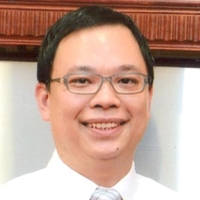
Tin-Lap Lee
Hong Kong
Tin-Lap Lee
Dr. Tin-Lap Lee is an Associate Professor in the School of Biomedical Sciences at the Chinese University of Hong Kong. He has previously conducted research at National Institutes of Health in the United States for 11 years and was a Staff Scientist at National Institutes of Child Health and Human Development (NICHD) and Project Coordinator at National Center for Biotechnology Information (NCBI). His research interests include germ cell biology and biomedical informatics. He developed algorithms and databases to facilitate the decoding of genomic regulations that contribute to normal and disease states in germ cell and stem cell development.
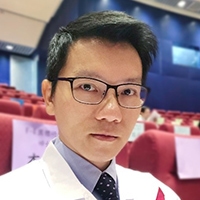
Chia-Jung Li
Taiwan
Chia-Jung Li
Chia-Jung Li Ph.D
Position, affiliation: Associate Research Fellow, Department of Obstetrics and Gynecology, Kaohsiung Veterans General Hospital, Kaohsiung, Taiwan.
Email: nigel6761@gmail.com
Dr. Chia-Jung Li is an associate research fellow at Kaohsiung Veterans General Hospital in Taiwan. He received the degree of Ph.D. from the Tzu-Chi University of Taiwan in 2015 and finished the post-doctorial training in the National Cheng-Kung University in 2017. Dr. Chia-Jung Li is focus on researching the mechanism of mitochondrial medicine and has perform outstandingly. He published 40 papers at academic conferences and more than 50 papers in SCI journals. It is worth mentioning that his research papers are often selected as cover stories by high-impact journals (Theranostics, Journal of Clinical Medicine…etc). He has also received numerous domestic and international awards.
Chia-Jung Li
DHEA Supplementation in the Poor Responder
Mitochondrial dysfunction is related to reproductive decline in humans, with consequences for in vitro fertilization (IVF). We assessed whether dehydroepiandrosterone (DHEA) could regulate mitochondrial homeostasis and mitophagy of cumulus cells (CCs) in poor ovarian responders (PORs). In basic research, we used serum deprivation as a stressor to evaluate its effects on human oocyte granulosa HO23 cells. HO23 cells were cultured in serum-free medium for 24 h with or without DHEA. In the clinical study, a total of 66 women who underwent in vitro fertilization (IVF) treatment in the Reproductive Medicine Center of Kaohsiung Veterans General Hospital were included in this study. 28 normal ovarian responders and 38 poor ovarian responders were enrolled. Poor ovarian responders were assigned to receive DHEA supplementation (n=19) or not (n=19) before IVF cycles. Mitochondrial respiration, mass and morphology were measured by oxygen consumption and MitoTracker staining. Expression of apoptosis, necroptosis, mitochondrial dynamics and mitophagy genes were determined by qRT-PCR in GCs and CCs. Immunofluorescence and Western blot analysis were used to measure the protein expression. DHEA prevents mitochondrial dysfunction by decreasing the activation of BAX, RIPK1, RIPK3, DNM1L and MFF, and increasing BCL2 and MFN1 expression. Most importantly, DHEA is ameliorated to mitochondrial homeostasis through the decrease in mitochondrial ROS, maintained mitochondrial mass, morphology and dynamics, and reducing apoptosis, necroptosis and mitophagy. The results suggest that DHEA may be beneficial in protecting human GCs and CCs and may provide a useful monitoring tool for clinical studies of oral DHEA supplements to older patients undergoing IVF treatment.

Philippe Lehert
Philippe Lehert is currently a Hon Professor on the Faculty of Medicine at the University of Melbourne and at the Department of Statistics, Faculty of Economics, University of Louvain. He has held numerous elected and honorary positions including member of the Belgian Statistical Steering Committee, Scientific Director at the International Health Foundation (Geneva, Switzerland), Senior Consulting Statistician for the United Nations and World Health Organization (Geneva Switzerland), former consulting statistician for the European Medicine Agency (London, UK) , and Food and Drug Administration (Washington, DC, USA), review editor for eight scientific journals and member and reviewer for the Cochrane Review Group. Throughout his career, Prof. Lehert has specialised in mathematical statistics and biostatistics applied to drug development and health management and pioneered research of prediction models in ART using mixed non-linear models to predicting life birth following a controlled ovarian stimulation.
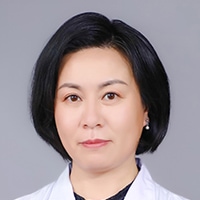
Rong Li
China
Rong Li
Dr. Li is serving as the Vice Chairman of Reproductive Medicine Specialized Committee, Chinese Medical Doctor Association, and the Director for Reproductive Medical Center and Department of Obstetrics and Gynecology, Peking University Third Hospital. She specializes in clinical treatment, education and medical researches within the fields of Obstetrics and Gynecology with research directions on reproductive medicine, female fertility evaluation, endometrial receptivity and PCOS. She published more than 60 SCI articles in medical journals, including Cell, Nature, Lancet, JAMA, et al. Her researches had been funded through variety of grants, such as National “Twelfth Five-Year” Plan for Science & Technology Support.
Rong Li
Miscarriage After IVF Treatment
With the rapid development of in vitro fertilization(IVF)/intracytoplasmic sperm injection (ICSI), the clinical pregnancy rate in many IVF centers has reached more than 60%. Since miscarriage always accounts for a certain proportion of pregnancy outcome in IVF treatment, it is always controversial whether its occurrence is related to IVF treatment itself. Focusing on the causes and influencing factors of miscarriage in IVF treatment, this lecture starts with the epidemiology of miscarriage after IVF, and discusses the influence of various factors such as patient factors, including maternal ages, BMI, reproductive diseases and the choice of IVF treatment schedules, including types of embryo transfer, luteal phase support and other factors on the occurrence of miscarriage. The lecture also discusses the potential molecular mechanisms related to miscarriage in IVF treatment that have been discovered in recent years and further provides new clues for the study of miscarriage. At the same time, Dr Li made a wonderful sharing of the clinical data of her reproduction medicine center, which provided solid data support for the influencing factors of miscarriage in IVF treatment. Finally, Dr. Li concludes that there are still challenges in exploring the mechanism and influencing factors of miscarriage in IVF treatment to reduce its occurrence.

TC Li
Hong Kong
TC Li
Prof Li is Honorary Clinical Professor in Obstetrics & Gynaecology, Prince of Wales Hospital, Chinese University of Hong Kong, head of the Union Reproductive Medicine Centre, Hong Kong and President-elect of ASPIRE.
Professor Li has established interests in reproductive surgery, recurrent reproductive failure and congenital and acquired uterine anomaly. He has published > 380 papers in peer-reviewed international journals.

Liow Swee Lian
Dr. Liow Swee Lian is the Scientific Director of Virtus Fertility Centre, Virtus Health Singapore, a
member of Virtus Health Australia. He holds a degree in the Doctor of Veterinary Medicine from the
University of Agriculture, Malaysia, Master of Science (Reproductive Biology) and Doctor of
Philosophy (Reproductive Genetics) from the National University of Singapore. Dr Liow was involved
actively in the training of post-graduate students in Master in Clinical Embryology at the National
University of Singapore and the setting up of 3 IVF centres in Singapore. He obtained his professional
qualifications and training both local and overseas from the Wicell Research Institute, Wisconsin, USA
for Human Embryonic Stem Cell Culture Methods, Preimplantation Genetic Diagnosis (PGD) from
University College London, United Kingdom, laser micromanipulation from University of Heidelberg,
Germany. Dr. Liow has vast research experience and is one of the pioneers in micromanipulation
techniques like Intracytoplasmic Sperm Injection (ICSI), Assisted Hatching and laser
micromanipulation techniques. Dr. Liow is also the author and co-author of many research papers
published in peer-review international journals and books. His research interests include embryo
culture system, Preimplantation Genetic Diagnosis (PGD), ovarian tissue cryopreservation, vitrification
of oocytes and embryos, male infertility, stem cell biology and wildlife conservation. He has been
invited to speak in various scientific congresses and workshops both locally as well as in the region.
An embryologist’s perspective: Quality or quantity?
Live births are the aim of in vitro fertilisation treatment; One study showed a non-linear relationship between number of oocytes retrieved and live birth rates (LBRs), reporting ~15 oocytes required to maximise LBR. Poor responders and women with low anti-Müllerian hormone (AMH) levels, have fewer oocytes retrieved. Therefore, it should be considered whether oocyte quality rather than quantity is the key to optimising LBR. Evidence suggests that the environment in which an oocyte matures affects embryo competence. Oocyte mitochondrial function and energy production deteriorate with age, adversely affecting ovarian reserve, chromosome segregation and embryo competence. Mitochondrial metabolic stress can result in an abnormal compensatory increase in mitochondrial DNA. Adverse environmental factors, e.g. aging, oxidative stress, obesity, smoking, alcohol, and psychological stress, impact oocyte quality. Diet, exercise, nutritional supplements, and psychological interventions are advocated to minimise environmental effects and maximise pregnancy success. Enhancing oocyte competence is an important intervention, potentially reducing the number of euploid embryos failing to produce viable deliveries.
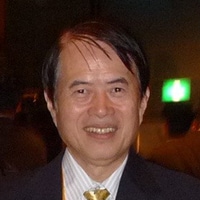
Bao Liang Lin
Japan
Bao Liang Lin
Yasuyoshi Hayashi or Bao-Liang Lin
M.D., Ph.D.,
Birth place: Taiwan
Medical school: graduated from Chung Shan Medical college (Taiwan) in June of 1971..
Postgraduate training:
1) Department of Ob/Gyn, Chung Shan Medical college hospital (Taiwan) from July 1972 to February 1973.
2) Department of Anesthesiology, Nihon university hospital ( Japan ) from 1974 to 1976.
3) Department of Ob/Gyn, Keio University ( Japan ) from 1976 to June 1983. Major in Neuroendocrinology.
4) Department of Ob/Gyn, Kawasaki Municipal hospital ( Japan ) from July 1983 to the present.
5) Received Ph.D. degree from Keio University in 1984.
Present position:
- Director of the department of Gynecology, Kawasaki Municipal Hospital
2) Visiting Professor of Chinese Capital University of Medical Sciences ((Beijing, China)
3) Honorable member of the Japan Society of Gynecologic and Obstetric Endoscopy
4) Founding board member of Asia Pacific Association of Gynecologic Endoscopy and Minimally Invasive Therapy (APAGE)
Personal clinical experiences
Hysteroscopic procedures : more than 29,840 cases (including more than 6,990TCR operations)
Number of published papers ( first author ) : 120
Developed many Lin instruments either for diagnostic or for operative hysteroscopies.
Bao Liang Lin
Congenital uterine anomalies
Objective :
To evaluate the efficiency of resectoscopic metroplasty for congenital uterine anomalies
Materials & methods :
From 1985 to 2020, a total of 270 cases of congenital uterine anomalies underwent resectoscopic metroplasty were enrolled in the study. All of the procedures were performed by the same surgeon. Only189 cases including 92 cases of complete septate uterus, 82 cases of partial septate uterus, 12 cases of arcuate uterus and 3 cases of T shaped uterus could be followed up. Out of these 189 patients, 64 cases were primary infertile patients. Either concomitant ultrasonography (93cases) or concomitant laparoscopy (96cases) was done for monitoring the operating procedure. Cervical septum of the septate cervix (9 cases) was incised, while cervical septum of the duplicated uterus (13 cases) was either incised (10 cases) or preserved (3 cases).
Results :
The first resectoscopic metroplasty was performed in 1985 monitored by a concomitant ultrasonography. The main reason to use concomitant laparoscopy was to ensure the final diagnosis of uterine anomalies. After using MRI, laparoscopy almost was not performed. The overall accumulative live birth rate for partial septate uterus, complete septate uterus, arcuate uterus and T shaped uterus were 81.5%, 78.0%, 58.3% and 100% respectively. There were 64 cases of primary infertility. 30 cases were partial septate uterus and 34 cases were complete septate uterus. The accumulative live birth rate were 63.3% and 73.5%. In the case of cervical septum the accumulative birth rate were 88.9% in septate cevix and 69.2% in double cervix. No case of uterine rupture was experienced.
Conclusion :
Resectoscopic metroplasty is an effective method to increase the life birth rate of uterine anomalies. Concomitant ultrasonography is an useful method for monitoring the operations.

Jaideep Malhotra
MD, FICOG, FICS, FIUMB, FMAS, FRCOG, FRCPI
A pioneer in women’s health for over three decades, a dedicated obstetrician, super specialist in infertility, an ace sonologist, and an eminent speaker in national & international arena on all possible facets of Obs & Gyn. She graduated and post graduated from the Aligarh Muslim University, one of the premier institutions in the country and has had a wonderful educational journey along with being the best National Medical Sports woman during her medical career.
Dr Jaideep Malhotra has been practising obstetrics in the city of Agra since 1986 and has delivered over 12000 babies. Her passion for Safe Motherhood led her to work on Pregnancy problems & addressing them in the 9 month window of opportunity and she has given the call of Adbhut Matrutva (Incredible Motherhood).
She is one of the very few in the world to be conferred Honorary Fellowships of both Royal College of Obstetrics and Gynaecology of (UK) (FRCOG) and Fellowship of Royal College of Physicians (Ireland (FRCPI)).
She is the Regional Director for South east Asia for Ian Donald school and one of the earliest proponents of the school in India.
She is the only gynaecologist in the world to head 6 professional organizations and the first woman President of ASPIRE (Asia Pacific Initiative in Reproduction), and her contributions in developing the ASPIRE standard of minimum care statement and accreditation of ART centres in Asia Pacific ,along with the development of ISAR-ASPIRE fellowship courses have been well appreciated all over the world.
In 2018 January, Dr Jaideep Malhotra took over as President of FOGSI (Federation of Obstetrics and Gynaecological societies of India) which has 36000 members in 250 societies and had given the slogan “Give her wings and let her soar” where HER stands for Health, Empowerment and respect for the women of our country, and besides the hundreds of CME’s, Dr Jaideep has initiated major heart touching projects this year, which are very thought provoking and have a long term impact. She has this whole year worked hard to distress fraternity and build up doctor patient relationship.
As the past President of Indian menopause society, she launched Club 35 plus for educating women on life after 35 years and she is currently the president of South Asian Federation of Menopause societies and working on sensitizing women all over the region on geriatric health.
She is Past President of President of Indian Society of assisted reproduction and the current President of Indian society of Prenatal diagnosis and Therapy and is working on streamlining ART practice in the country by making guidelines and consensus statement for uniform practices.
She is a very active member of the FIGO Reproductive Medicine Committee and the FIGO Environmental Health Committee.
Dr Jaideep has really worked towards patient awareness throughout her life by creating a lot of educational videos and giving many lectures to public. Her aim is to inspire and educate the local public on various issues. Last year she made many powerful films like on Garbh Sanskar-Adbhut Matrutva, Gali Mein Dhak and Meri Marzi on Contraception. Main Banjh Nahi Hu on Infertility, Doshi Kaun on Patient-Doctor Relationship. She also developed a Patient Education Mobile App called “iMumz” this year.
She edits two journals for the SAFOG and the SAFOMS and is on the editorial board of ASPIRE and many other journals. She has authored and co-authored many books and written chapters for over 37 books. The outstanding best sellers of these are the MALHOTRA step by step series which are being published in various languages and Managing infertility in low resource for AOFOG.
She takes her corporate and social responsibility very seriously, which led to the inception of SMRITI a NGO, which has been working towards the upliftment of women and the “Beti Bachao, Beti Padhao” drive in Uttar Pradesh from the year 2000. Under the able leadership of Dr. Jaideep Malhotra & Dr. Narendra Malhotra the NGO SMRITI is in the dreams of adopting 1 lac girls by taking care of their educational & medical requirement.
The slogan “Beti Bachao, Beti Padhao” (Educating the Girl Child) was given by FOGSI in 2008 and “Chalo Gaon Chalein” (Let us go to villages) was the call given under this banner as a massive awareness campaign, “Bharat Jagruti Yatra” was organised by Dr Jaideep Malhotra in 2008 under then FOGSI President Dr Narendra conducted on womens’ health across the length & breadth of India.
She is also educating general population on health issues, through documentary films and under her leadership FOGSI has started You tube channel for Public education.
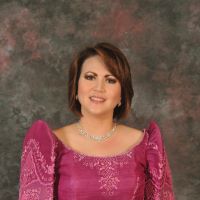
Philippines
Eileen Manalo
Dr. Eileen M. Manalo graduated from the University of the Philippines College of Medicine and took her residency training in Obstetrics and Gynecology and fellowship in Reproductive Endocrinology and Infertility at the University of the Philippines-Philippine General Hospital. She was a visiting consultant at the National University Hospital and Mount Elizabeth Hospital in Singapore and National Hospital at Hanoi where she took further studies in Assisted Reproductive Technology. She underwent training for robotic surgery at Yonsei University in Seoul, South Korea. More recently, she also completed her masters degree in Biotechnology of Human Assisted Reproduction and Embryology, at The University of Valencia, Spain.
Dr. Manalo is currently a Professor VII at the Department of OB-Gyn of the University of the Philippines College of Medicine, where she served as the chief of the section of Reproductive Endocrinology and Infertility from 2007 to 2013 and from 2015 to 2018, and Chief of Service from 2013 to 2015. She is a founding member and was president of the Philippine Society for Reproductive Medicine in 2009. She served as the youngest president of the Philippine Society for Climacteric Medicine in 2008. She was a former member of the board of trustees of the Philippine Obstetrical and Gynecological Society. She was a member of the Philippine Board of Obstetrics and Gynecology from 2006-2007, and 2018-2020. She is a founding member and vice-president of the newly established Philippine Society for Fertility Preservation. She also served as board of trustees in the Philippine Society for Gynecologic Endoscopy from 2013 to 2018. She is a member of the International Editorial Board and Reviewers of the Fertility and Sterility Journal of Bangladesh. She is currently also an Associate Editor of the official journal of the Asia Pacific Initiative on Reproduction (ASPIRE), Fertility & Reproduction (F&R), and a member of the Scientific Committee for Athens, Greece Congress in 2022 of the International Federation of Fertility Societies.
She has contributed to several clinical practice guidelines on the Menopause, Infertility, Endometriosis, Myomas and Adenomyosis, PCOS and Abnormal Uterine Bleeding.
She has delivered many local and international lectures on Recurrent Pregnancy Losses, Repeated Implantation Failures, Endometriosis and Adenomyosis, PCOS, Premature Ovarian Insufficiency, Menopause and HRT, ART and Gynecologic Endoscopy, among others.
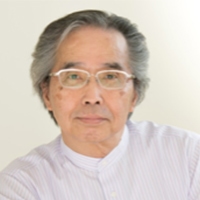
Japan
Yasuyuki Mio
Yasuyuki Mio
“Time-lapse with AI”
To achieve good outcomes with Assisted Reproductive Technologies (ART), it is essential to predict the development of good quality human embryos and/or the implantation potential of embryos. Until now, dynamic morphology analysis of embryos using time-lapse imaging has been widely used for this purpose. In our recent time-lapse studies, we identified several morphological features of early cleavage stage embryos that were closely associated with impairment of subsequent development to good quality embryos: (1) vertical cell division against the two-pronuclear axis; (2) direct division from a one-cell zygote to three or more cells; (3) multi-nucleated blastomeres (MNB); (4) premature commencement of compaction (pre 8-cell stage). However, these features cannot always predict embryo quality and/or implantation potential in advance, so to improve the predictive capability of time-lapse observations, we developed an Artificial Intelligence (AI) algorithm using deep learning and high-resolution time-lapse cinematography (hR-TLC). We have attempted to predict embryo quality at the 4-cell stage using the algorithm and two deep learning models: (i) non-time-series model (CNN, Convolutional Neural Network), and (ii) time-series model (LSTM, Long Short-Term Memory). Cross validation was repeated ten times and the average rate of prediction accuracy was calculated. In this session, I will discuss several morphological features associated with embryo quality and demonstrate the accuracy of prediction of good quality embryos using the deep learning AI algorithm.
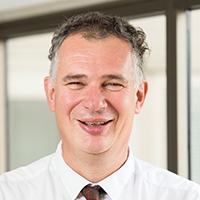
Ben Mol
Australia
Ben Mol
Ben (Willem) Mol is Professor of Obstetrics and Gynaecology at Monash University, Melbourne Australia. He concentrates on the organisation of multi-centric evaluative research in Obstetrics, Gynaecology and Fertility. The research focuses mainly on everyday practices. As a Professor, Ben considers his most important task to be the stimulation and innovation of evaluative research in Obstetrics, Gynaecology and Reproductive Medicine, in particular the organisation of multicentre randomised clinical trials.
Ben studied Medicine at the University of Amsterdam. From 1993 to 1997, he worked in the department of Clinical Epidemiology and Biostatistics at the AMC. In 1999 he obtained his PhD with honours at the Faculty of Medicine of the UvA with his dissertation entitled Evaluating the effectiveness of diagnostic tests: tubal subfertility and ectopic pregnancy. Between 1997 and 2003 he was trained as a Gynaecologist in Utrecht. Since 2003, he has worked in Veldhoven and Amsterdam and since 2014 in Australia.
Ben was instrumental in initiating the Dutch consortium for Research in Women’s health, in which 70 hospitals collaborate in multicentre trials. The initiative is now incorporated by the Dutch Society for Obstetrics and Gynaecology and is supported by the Dutch national funder and the Dutch health insurance companies. In 2010, he co-initiated the Global Obstetric Network GOnet.
Ben holds an NHMRC practitioner fellowship, which was awarded as the highest ranked application in 2014. He has completed 100 randomised clinical trials with another 25 running. His professional adage is ‘A day without randomisation is a day without progress.’

Markus Montag
Germany
Ben Mol
Ben (Willem) Mol is Professor of Obstetrics and Gynaecology at Monash University, Melbourne Australia. He concentrates on the organisation of multi-centric evaluative research in Obstetrics, Gynaecology and Fertility. The research focuses mainly on everyday practices. As a Professor, Ben considers his most important task to be the stimulation and innovation of evaluative research in Obstetrics, Gynaecology and Reproductive Medicine, in particular the organisation of multicentre randomised clinical trials.
Ben studied Medicine at the University of Amsterdam. From 1993 to 1997, he worked in the department of Clinical Epidemiology and Biostatistics at the AMC. In 1999 he obtained his PhD with honours at the Faculty of Medicine of the UvA with his dissertation entitled Evaluating the effectiveness of diagnostic tests: tubal subfertility and ectopic pregnancy. Between 1997 and 2003 he was trained as a Gynaecologist in Utrecht. Since 2003, he has worked in Veldhoven and Amsterdam and since 2014 in Australia.
Ben was instrumental in initiating the Dutch consortium for Research in Women’s health, in which 70 hospitals collaborate in multicentre trials. The initiative is now incorporated by the Dutch Society for Obstetrics and Gynaecology and is supported by the Dutch national funder and the Dutch health insurance companies. In 2010, he co-initiated the Global Obstetric Network GOnet.
Ben holds an NHMRC practitioner fellowship, which was awarded as the highest ranked application in 2014. He has completed 100 randomised clinical trials with another 25 running. His professional adage is ‘A day without randomisation is a day without progress.’

Jei-Won Moon
Korea
Jei-Won Moon
Dr. Jei-Won Moon is an infertility specialist and the Executive Co-medical Director of M Fertility Clinic in Seoul, Korea. He received his medical degree from Dankook Medical College. He completed internship and residency in obstetrics and gynecology at Asan Medical Center and completed his fellowship and postgraduate school in reproductive endocrinology and infertility at University of Ulsan, College of Medicine, Asan Medical Center. He is one of the board members of Korean Association of Obstetricians and Gynecologist and Korean Society for Assisted Reproduction.
Robert Norman
Over the past decade, the use of frozen embryo transfer (FET) has
dramatically increased worldwide for several reasons: As we all know the
increased use of elective single embryo transfer or to prevent OHSS and to
avoid the negative effect of supraphysiologic levels of hormones induced
by ovarian stimulation. Recently it has been reported that some of the
progesterone levels during the ET period were associated with optimal
pregnancy rates. But surprisingly still there is no consensus on these topics.
The best administration route, dosage, and duration for adequate
progesterone level on the day of ET are unknown.
Recently, some retrospective and prospective studies related to
progesterone concentrations on the day of embryo transfer have shown
that 30 to 50% of patients had low progesterone levels on the day of
embryo transfer with decreasing success rates. However, in each study,
different LPS methods, doses of medications, and exposure time were
evaluated. Also, some recent studies revealed th at there is a negative
correlation between body weight and serum progesterone levels for LPS
Therefore, in the future additional studies are needed to address the
optimal route and dosage of progesterone to individualized luteal phase
support (ILPS) in t he FET cycle to improve the success rates.

Dean Morbeck
New Zealand
Dean Morbeck
Dr. Morbeck is the Scientific Director at Fertility Associates New Zealand, Sunfert International Fertility Centre, and an Honorary Lecturer at the University of Auckland. He oversees science in IVF clinics throughout New Zealand and Malaysia that annually perform >4000 fresh cycles. Prior to moving to NZ, Dean was an Associate Professor at the Mayo Clinic. He has a keen interest in quality of care, as evidenced by his publications on media composition and laboratory KPIs. He completed his MBA in 2015, which he is putting to use to improve both the science and patient experience at Fertility Associates and Sunfert.

Yoshiharu Morimoto
Japan
Yoshiharu Morimoto
Yoshiharu Morimoto MD. PhD. is an internationally recognized clinician, researcher, and educator in the field of reproductive medicine and biology.
He is the CEO of IVF Japan Group consisted of 3 clinics: HORAC Grand Front Osaka Clinic (President/founder), IVF Osaka Clinic(founder), and IVF Namba Clinic(founder).
He is widely known as a pioneer of reproductive medicine. He started to offer and spread a new idea of integrated medical method to the world. Also, his cutting-edge technology “AUGMENT” has been introduced for intractable patients. These active scientific works have enabled him to treat more than 2 million patients so far with a high pregnancy success rate.
He also serves many roles such as:
・President, International Society for In Vitro Fertilization (ISIVF).
・Past president, Asia Pacific Initiative on Reproduction (ASPIRE), the editorial board member of the official Journal “Fertility and Reproduction”.
・Past president, Pacific Society for Reproductive Medicine (PSRM).
・Editorial board member of the official journal “Fertility and Sterility”, American Society for Reproductive Medicine (ASRM).
・Associate editor of the official journal “Reproductive Sciences”, Society for Reproductive Investigation.
・Editorial board member of official journal “Reproductive Medicine and Biology” Japan Society for Reproductive Medicine.

Santiago Munné
Santiago Munné, Ph.D.
Ph.D. in Genetics from Pittsburgh University. In 1993 he developed the first Preimplantation Genetic Test for Aneuploidy (PGT-A) (1994, 1995 SART prizes). As PGT director of IRMS-Saint Barnabas he developed PGT for translocations (1996, SART prize), and demonstrated that PGT-A reduces miscarriages and increases implantation rates (1998 SART prize). He is adjunct professor at Yale University Ob/Gyn Dept., published >260 scientific publications, received SART and ASRM prize papers in 1994, 1995, 1998, 2005, 2015, 2016, and 2020, and the ASRM Star Award consecutively for 2011-2020.
In 2001 founded Reprogenetics with Jacques Cohen and David Sable, and as its CEO Reprogenetics became the first commercial US PGT laboratory, performing over 100K procedures. Reprogenetics was sold in 2016 to Cooper Companies (NYSE: COO).
In 2011 he co-founded with Alex Bisignano Recombine, which offered genetic carrier screening and was bought by Cooper Companies in 2016, together with Genesis Genetics. These companies became CooperGenomics and Dr. Munne its CSO.
In 2013 he co-founded MedAnswers with CEO Alice Crisci, an infertility digital health platform. In 2016 co-founded with Alex Bisignano the genomics company Phosphorous, providing comprehensive germ-line panels and FDA-approved Covid PCR at-home test. In 2017 he joined Martin Varsavsky and Joson Horcajadas to co-found Overture Life, a company focused on automating the IVF Laboratory and to which day he is its COO. In 2020 co-founded HoMu invest, a company accelerator for early-stage biomedical research, and Rosa Scientific fusing Immunology and NGS for multiplex proteinomics. He serves in several BOAs and BODs of private companies.
Non-Invasive Selection of Embryos: NI-PGT, Metabolomics, AI
IVF success depends on the strategy that is used to select the embryo with the highest implantation potential for transfer. The most common selection strategy involves a non-invasive morphological assessment of embryos. However, this morphological assessment does not always correlate well with viability and is incapable of determining the embryonic chromosome constitution. For the past 20 years, the alternative has been preimplantation genetic testing for aneuploidy (PGT-A), an approach that requires an invasive embryo biopsy. The biopsy process, if performed poorly, can have an adverse impact on embryonic viability. For this reason, novel non-invasive methodologies are being developed, such as AI-morphokinetics, metabolomics and non-invasive PGT-A (NI-PGT-A).
AI morphokinetics employs deep convolutional neural networks to analyze time lapse embryo videos. Recent data suggest that the use of AI morphokinetics for embryo selection can lead to an increase of 14% in ongoing pregnancy rates, compared to standard methods.
NI-PGT-A examines the DNA released by the developing embryo into the droplet that is being incubated, so as to determine its chromosome constitution. Some studies described promising results, but NI-PGT-A has several drawbacks, including uncertainty of when to collect the spent medium and cumulus cell contamination.
Metabolomics is the systematic study of metabolites as small molecular biomarkers representing the functional phenotype in a biological system. We are currently performing a metabolomic analysis of embryo spent media droplets. The results we have obtained so far enabled us to develop metabolite indices that can predict embryonic chromosome constitution and viability. These indices are specific for individual culture media and are being evaluated in non-selection studies and RCTs. A metabolomics-based test to determine embryo ploidy and viability would be non-invasive, inexpensive, would not require any change in embryology protocols, and could be combined with NI-PGT-A and/or morphokinetics, having the potential in itself or in combination with other methods to significantly improve embryo selection without causing damage.
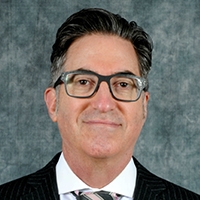
USA
Craig Niederberger
Dr. Craig Niederberger is Clarence C. Saelhof Professor and Head of the Department of Urology in the College of Medicine at the University of Illinois at Chicago, and holds a joint appointment as Professor in the Department of Bioengineering in the College of Engineering. He is Co-Editor in Chief of Fertility and Sterility and a prior section editor for the Journal of Urology. He is a primary editor of the fourth editio
n of Infertility in the Male and An Introduction to Male Reproductive Medicine. He served as general program chair for the American Society for Reproductive Medicine’s annual meeting in Atlanta in 2009 and has served as president of the Society for the Study of Male Reproduction within the American Urological Association and as president of the Society for Male Reproduction and Urology within the American Society for Reproductive Medicine.
Craig Niederberger
What once was called “non-obstructive azoospermia”, or “NOA”, is now better named “azoospermia due to spermatogenic dysfunction”, or “ASD”. Why? Because when the term “non-obstructive azoospermia” was coined, nothing could be done for it. We could possibly address obstructive azoospermia by surgical reconstruction, but if the azoospermia was due to spermatogenic dysfunction, we had no way of treating it. If sperm could be found in the testis, it had not yet traversed the epididymis and gained motility and the ability to fertilize an ovum and thus simply could not be used in incubational in-vitro fertilization.
Intracytoplasmic sperm injection dramatically changed that. Suddenly sperm from the testis could be used in in-vitro fertilization. And with microdissection testicular sperm extraction, by using the surgical microscope as an optical discriminator to find spermatogenic tubules that were most likely to contain sperm, men with azoospermia due to spermatogenic dysfunction could be treated. The “non-” in “non-obstructive azoospermia” that implied an inability to do anything was no more, and a new era had begun.
Yet many men remained refractory to treatment as little or no sperm could be found in the testis. Could we stimulate men as women are for in-vitro fertilization by the use of endocrine agents? The answer was yes, and in 2013 we published the first endocrine stimulatory protocol in the male for microdissection testicular sperm extraction where like in the female, endocrine response dictates subsequent therapeutic intervention.(1) We anticipate continued improvement in stimulation protocols similar to advances in the female in in-vitro fertilization and likely refined by patient selection according to, for example, epigenetic signatures. The modern era in the modern treatment of azoospermia due to spermatogenic dysfunction is here.
1. Hussein A, Ozgok Y, Ross L, Rao P, Niederberger C. Optimization of spermatogenesis-regulating hormones in patients with non-obstructive azoospermia and its impact on sperm retrieval: a multicentre study. BJU Int. 2013 Mar;111(3 Pt B):E110-4.

Australia
Robert Norman
Robert Norman holds a personal chair as Emeritus Professor for Reproductive and Periconceptual Medicine at the University of Adelaide and is a subspecialist in reproductive medicine (CREI) and in endocrine biochemistry (FRCPA). He was Director of the Robinson Research Institute at the University of Adelaide from 2008 to 2013. He has been leader of two NHMRC Program Grants and has published over 500 peer-reviewed publications and one book. He has an h score of 110 (Google Scholar) with more than 56,660 citations. He serves on the editorial board of major reproductive journals. He has been given the top awards of the American Society of Reproductive Medicine (ASRM), the European Society of Human Reproduction and Embryology (ESHRE) and the Asia Pacific Initiative on Reproduction (ASPIRE).
Robert Norman
How to read, write and review a scientific paper
The field of reproductive medicine is moving so fast and there are so many publications to read that it becomes difficult to stay up with the field. To be truly educated in this area, you need to be reading the key scientific journals in which latest advances are communicated. These include Human Reproduction, Human Reproduction Update, RBM Online, Fertility and Sterility and the ASPIRE Journal, Fertility and Reproduction. There is no point just reading the abstract and accepting what is stated. While it is possible to skim a large number of papers by looking at the abstracts, for an important paper you should look at the following steps:
1. Read the introduction and work out what the authors are trying to achieve.
2. Read the approach and be critical about the shortcomings.
3. Read the results in detail and make up your own mind before moving up to 4.
4. Critically evaluate the discussion.
5. Review the abstract to see whether it is a correct interpretation of the paper.
This same approach is taken in reviewing and writing a paper. It is a great honour to be involved in any of these activities and one should dedicate a period of time each week to keep up with the literature, to write your own paper or to agree to be a reviewer. These details will be covered in my talk.
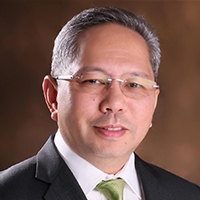
Philippines
Virgilio Novero
Dr. Virgilio M. Novero Jr. is the Head of the Center for Advanced Reproductive Medicine and Infertility (CARMI) in Metro Manila and was responsible for its operationalization in 2011. Today, Dr. Novero has transformed CARMI to be the most advanced local IVF center with state-of-the-art services as time-lapse videography, ovarian-tissue-cryopreservation, and pre-implantation genetic screening.
Dr. Novero is an Associate Professor at the UP Manila. He traveled to Belgium to obtain his Fellowship in Infertility & Reproductive Medicine under Prof. Devroey. He has attended additional workshops around the world as McGill, Stanford, St. Mariana (Japan) and in Beijing. He just completed his Master of Science at IVI in Spain. He has researches published in local and international journals.
Dr. Novero is a past president of the Philippine Society of the Reproductive Medicine, a past Chair of the ART Regulatory Board, and a past member of the Philippine Board of OB-GYN. He is a current member of the Board of Trustees of the Philippine Obstetrical and Gynecological Society. And is currently the only Filipino board member in 2 prestigious Asian fertility societies, the ASPIRE and the Asian Society of Fertility Preservation.
1) The Uses of Aromatase Inhibitors in Controlled Ovarian Stimulation | 2) Impact of COVID-19 on the Reproductive System
The Uses of Aromatase Inhibitors in Controlled Ovarian Stimulation
Although off-label for use in ovulation induction and infertility, aromatase inhibitors especially letrozole and anastrozole have steadily found in place in the field of reproductive medicine over the past two decades. It was primarily used in gynecology for ovulation induction in 2001 but over the years its benefit was expanded in many capacities including in controlled ovarian stimulation cycles in assisted reproductive technology.
Over the past 15 years, there is increased interest on the benefit of using aromatase inhibitors especially letrozole during controlled ovarian stimulation in ART cycles. Its role in fertility preservation cycles for young women with breast cancer is an accepted treatment modality to keep estrogen low and to avoid causing further damage in this hormone-dependent malignancy. This is true for all types of ovarian stimulation protocols whether it be random start, early or mid proliferative or luteal start where letrozole is given just before starting the gonadotropin injections until oocyte retrieval and maintained for 5-7 days after.
On the otherhand, the evidence is starting to accumulate on the benefit of letrozole in COS for patients with endometriosis, poor responders and IVF Failures, in normal or hyper responders in a low-cost IVF protocol, and to avoid the development of OHSS in ‘at risk’ IVF cycles. However, more studies are needed to validate these potential uses of aromatase inhibitors especially that caution is required knowing that these uses are off-label drug for aromatase inhibitors.
Impact of COVID-19 on the Reproductive System
It is important to review updates and concerns about the impact of COVID-19 infection on the reproductive system because it will form the basis of its management during the pandemic.
Understanding how the SARS-CoV2 virus infects individuals was reviewed. SARS-CoV2 requires ACE2 receptors and TMPRSS2 to allow cell entry and replication. It must be emphasized that SARS-CoV2 competes for the same receptors that are needed by ACE2 to mediate in the RAAS that protects various organ systems.
The possibility of sexual transmission of the SARS-CoV2 virus also needs to be reviewed. Based on available studies, sexual transmission of SARS-CoV2 through vaginal fluids is unlikely but more research is required to prove that transmission via semen is possible. Non-coital sex transmission is very possible because SARS-CoV2 has been found in other body fluids like saliva, tears, urine, nasal, and anal swabs.
Finally, based on current studies, the risk of SARS-CoV2 infection in the human reproductive system is appears to be high among males and low among females based on the presence of both ACE2 receptors and TMPRSS2 in various organs of their reproductive systems. The systemic effects of COVID-19 causing thrombosis may be more detrimental to fertility and pregnancy than directly to female reproductive organs.
However much of available studies are based on theoretical probabilities. There is an urgent need for more research about the unknown effects of COVID-19 infection on the male and female reproductive system. Large population studies to develop stronger recommendations are needed to safeguard the reproductive health of the young.

Switzerland
Jan I. Olofsson
Global Medical Director – Women´s Health Abbott Laboratories
Affiliated senior researcher at Karolinska Institutet, Sweden
Former Clinical Director and Head of Reproductive Medicine at Karolinska University Hospital, Stockholm, Sweden
Former Asia Pacific Regional Director Medical Affairs for Reproductive Medicine at Organon, Schering-Plough and MSD (Merck Inc) based in Singapore
Published more than 80 scholarly articles to the scientific and medical communities, and has supervised seven PhD students
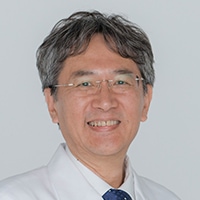
Japan
Yutaka Osuga
Yutaka Osuga, MD, PhD
Prof. Osuga is Professor of Obstetrics and Gynecology, Graduate School of Medicine, the University of Tokyo, Vice President of the University of Tokyo Hospital, President of Japan Society of Gynecologic and Obstetric Endoscopy and Minimally Invasive Therapy, and Vice President of Japan Society for Reproductive Medicine. He received his MD in 1985 and PhD in 1995 from the Faculty of Medicine of the University of Tokyo, Japan. He completed his OB/GYN residency training at the University of Tokyo. He trained as a postdoctoral fellow in the field of ovarian physiology in Stanford University from 1995 to 1997. Prof. Osuga provides clinical services in gynecology and reproductive medicine with special expertise in laparoscopic surgery and assisted reproductive technology. His main research targets cover a wide variety of physiology and pathology of reproduction including endometriosis, implantation, folliculogenesis, and reproductive aging. He has authored over 350 research papers published in eminent peer-reviewed international journals and has written and edited many textbooks. He serves as an executive board member of several medical groups and associations and an editor of several international journals. He is frequently sought out to provide his expertise at international medical conferences and academic institutions.
Yutaka Osuga
Extragenital Endometriosis- Enigmatic Diseases
Endometriosis develops in many sites of the body. While the incidence of extragenital endometriosis is low, they are important in clinical practice since they are often much more difficult to treat than endometriosis in common sites, i.e. the ovary, cul-de-sac, and pelvic peritoneum. In addition, pathogenesis and pathophysiology of extragenital endometriosis is poorly understood. In the lecture, I present our cases and literature review. Inguinal endometriosis and umbilical endometriosis are relatively easy to diagnose and are good indication for surgical treatment. Bowel endometriosis can be treated by surgery but medical treatment should be considered beforehand. Imaging of bowel endometriosis by ultrasound is practical and useful for observation of the lesion over time. Bladder endometriosis is also treated by medicine or surgery according to lesion size, symptoms, patient’s preference, etc. Among extragenital endometriosis, thoracic endometriosis syndrome (TES) appears to be the most intractable disease. TES comprises catamenial pneumothorax (CP), endometriosis-related pneumothorax (ERP), and catamenial hemoptysis (CH). In our study, we found the age distribution of male pneumothorax patients had two peaks (around 18 and 80 years) while female pneumothorax patients had an additional peak around 40 years. Analyzed in detail, it was suggested that the peak reflects CP and ERP. In another study, we revealed that the age at onset was significantly lower in patients with CH than in patients with CP/ERP. Most of patients with CP/ERP, pneumothorax was observed on either the right side or bilaterally, however there was no tendency toward laterality of CH. The findings indicate that pathogenesis is different between CP/ERP and CH.
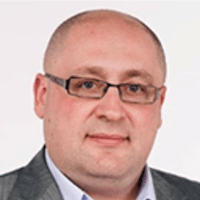
Applying trial outcome to a real-world population - a novel approach to external validity analysis
Evidence-based medicine has three components: research-based evidence (randomised controlled trials [RCTs] and meta-analyses), clinical expertise, and patient values/preferences. Translating findings from RCTs to real-world clinical practice is challenging and requires an understanding of the relationships between patient characteristics, treatment approaches and outcomes. External validity analysis (EVA) can be used to evaluate the applicability of findings from a large RCT, comparing baseline characteristics, interventions, and outcomes between the RCT and a large clinical database. Using EVA, the findings from the ESTHER-1 trial were investigated in the context of a population in an Australian clinical setting. This analysis compared practices and outcomes between the follitropin alfa ‘conventional’ dosing arm of the ESTHER-1 trial and a selected comparable clinic subpopulation of patients who underwent controlled ovarian stimulation using follicle-stimulating hormone (FSH). Data showed that the clinic population were slightly older, had a slightly higher body mass index and similar anti-Müllerian hormone levels. FSH exposure was 34% higher in the clinic subpopulation. Despite an increased number of oocytes retrieved and embryos in the clinic subpopulation, clinical pregnancy rate and live birth rate in fresh cycle were significantly lower than ESTHER 1 trial results. Analysis suggests that a reappraisal of current practices and objectives in gonadotrophin dose selection is warranted.
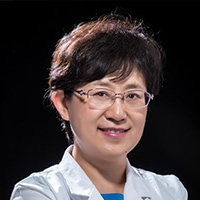
China
Jie Qiao
Jie Qiao, is Academician of Chinese academy of engineering, President and Chief Physician of Peking University Third Hospital, Director of the National Clinical Research Center on Obstetrics and Gynecology (OBYGN) Disease, Expert Advisory Committee Member of the Healthy China Initiative, President of China Women Doctors Association, Chair for the Reproductive Medical Society of Chinese Medical Doctor Association, Chief editor of《Human Reproduction Update (Chinese version)》and Special Consultant《NEJM Medical frontier》.
Her reproductive research focus on the molecular mechanism of human gametogenesis and embryo development, infertility causes and clinical treatments, the protection and preservation of female fertility as well as developing new pre-implantation diagnosis methods. Qiao has led the team to achieve a number of technical and theoretical breakthroughs in the systematic study of human embryonic development and team made many landmark contributions to the development of reproductive medicine. From 2016, about 600,000 outpatients visited Peking University Third Hospital ART Center every year. Up to now, she has published 211 SCI papers as the first or corresponding author, including Science, Cell, JAMA, Nature, Lancet, Nature Genetics etc, providing new insights into the mechanism of epigenetic regulation during embryonic development and bringing hope to a great number of infertile patients in China.
Jie Qiao
Early Human Embryos Development and the 14-Day Rule
Human embryonic development starts from a fertilized egg. The blastocyst forming is very important, which consists of an outer trophectoderm and an inner cell mass. The mature inner cell mass is composed of the pluripotent epiblast covered by a layer of primitive endoderm. By embryonic days 6–7 (after fertilization), the embryo will implant into the uterus to form a gastrula, followed by organogenesis. Owing to the limited access to embryos early after implantation in vivo, the lineage specification and corresponding patterns of the transcriptome and DNA methylome that are specific to the different lineages during human implantation are still poorly understood.
Following the 14-Day Rule, with the help of donated human embryos and a robust in vitro culture system for post-implantation embryos and single-cell multi-omics sequencing technologies, we simultaneously analysed the gene-expression network and lineage-specific DNA methylation patterns of the human peri-implantation embryos at single-cell resolution. Unsupervised dimensionality reduction and clustering algorithms of the transcriptome data show stepwise implantation routes for the epiblast, primitive endoderm and trophectoderm lineages. Female embryos showed initiation of random X chromosome inactivation based on analysis of parental allele-specific expression of X-chromosome-linked genes during implantation. Notably, using single-cell triple omics sequencing analysis, the re-methylation of the genome in cells from the primitive endoderm lineage was shown to be much slower than in cells of both epiblast and trophectoderm lineages during the implantation process, which indicates that there are distinct re-establishment features in the DNA methylome of the epiblast and primitive endoderm—even though both lineages are derived from the inner cell mass. We hope to provide insights into the complex molecular mechanisms that regulate the implantation of human embryos, and help to advance future efforts to understanding early embryonic development and reproductive medicine through our research works.
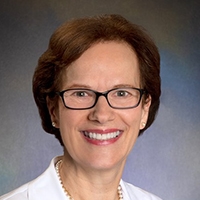
USA
Catherine Racowsky
Catherine Racowsky, Ph.D., HCLD
Dr. Catherine Racowsky is Director of the ART Laboratory at Brigham & Women’s Hospital in Boston and Professor of Obstetrics and Gynecology at Harvard Medical School. She graduated with a Bachelor of Arts in Zoology at the University of Oxford, received her Ph.D. in Reproductive Physiology from the University of Cambridge and undertook her post-doctoral fellowship at Harvard Medical School.
Dr. Racowsky is currently President Elect of the American Society for Reproductive Medicine, and is a past president of the New England Fertility Society. She has also served on the Society of Assisted Reproductive Technology (SART) Executive Council, the International Taskforce for Stem Cell Research, government oversight committees for reproductive medicine, and the ASRM Practice Committee, which writes guidelines and recommendations for the field of reproductive medicine. Dr. Racowsky is a past Associate Editor of Human Reproduction, Fertility & Sterility and Human Reproduction Open, and is currently on the editorial board of Fertility and Sterility, the Journal of Assisted Reproduction and Genetics and Reproductive Biomedicine Online. Her interests include studying maternal and environmental factors on oocyte quality, expanding methodologies for assessing human embryo developmental competency and improving clinical IVF success rates through quality control and quality assurance activities in the IVF laboratory. She has authored over 140 peer-reviewed papers and numerous news releases and book chapters and has co-edited eight books.
Catherine Racowsky
What is New in Reproductive Genetics
Fast forward from the early 2000’s when biopsy of a single blastomere from a cleavage stage embryo was the norm for preimplantation genetic screening (as it was then called) for aneuploidy, with Fluorescence In Situ Hybridization for identification of a maximum of ten chromosomes! Here we are in 2021, with vastly improved platforms for genetic testing of all chromosomes in the karyotype using next generation sequencing (NGS) of the DNA isolated from a few trophectoderm cells biopsied at the blastocyst stage. Although we have these exquisitely sensitive technologies for identification copy number variation in a sample, the biology of the embryo challenges the accuracy of the test. Mosaicism poses a central challenge to interpretation of results, with false positives posing a particular problem. In efforts to overcome this challenge, non-invasive genetic testing for aneuploidy (niPGT-A) is being developed, which is rooted in analysis of cell-free DNA released from the embryo either into the culture medium or into the blastocoelic fluid.
In this lecture we will:
- Consider the rationale for non-invasive PGT-A (niPGT-A)
- Discuss available evidence supporting the clinical application of niPGT-A
- Reflect on work needed to advance use of niPGT-A in the IVF laboratory
At the conclusion of this lecture, participants should be able to:
- Describe the short-falls of trophectoderm biopsy for PGT-A
- Discuss the evidence for continued development of niPGT-A by comparing the performance characteristics of trophectoderm biopsy versus niPGT-A for aneuploidy testing
- State the design of investigations required to validate efficacy of niPGT-A
Do We Practice Evidence-Based Medicine in the IVF Lab?
Drs. Steptoe and Edwards developed IVF for one specific reason, for the treatment of tubal occlusion. However, over the last 43 years, use of IVF has expanded to treat various infertility etiologies and patient presentations including those with secondary infertility, subfertility, and idiopathic infertility. In addition to these broader patient populations now treated with IVF, controlled ovarian stimulation typically yields several embryos, rather than the one or at most two obtained in the early days of natural cycle IVF. There are therefore pressures to tailor IVF treatments to meet the needs of various patient groups and to develop efficacious approaches for ranking embryo viability so that the most developmentally competent in a cohort is selected for transfer. These combined pressures have led to the development of several adjunct or “add-on” clinical and laboratory procedures to the conventional IVF cycle. The question at hand is whether there is evidence to support the use of the laboratory add-when treating patients undergoing IVF.
In this lecture we will:
- Discuss what evidence is needed to justify clinical use of any technology.
- Appraise the evidence for the clinical application of commonly used IVF add-on procedures including ICSI for non-male factor couples, extended culture to the blastocyst stage, and use of time-lapse imaging and PGT-A for embryo selection.
- Consider the driving forces behind legitimization for use of IVF lab technologies lacking evidence for efficacy.
- State what needs to be done to ensure we practice evidence-based medicine in the IVF laboratory.
At the conclusion of this lecture, participants should be able to:
- Appraise the evidence needed and the challenges that prevail when assessing the value of a new IVF lab technology.
- Discuss whether there is sufficient evidence to support use of a) ICSI for non-male factor couples; b) culture to the blastocyst stage for all patients; and c) time-lapse imaging and PGT-A for embryo selection.
- List the IVF add-on procedures of questionable value.
- Describe the factors that underly introduction of an IVF add-on into mainstream clinical IVF.
IVF Then and Now: Changes and Challenges in the Technology
The birth of the first IVF baby, Louise Brown, in 1978 was a watershed moment in the history of reproductive medicine. After nearly two decades of performing fundamental studies of oocyte maturation, hormonal control of the reproductive cycle and timing of oocyte retrieval using laparoscopy, this premiere team of Patrick C Steptoe, MD and Robert G Edwards, PhD achieved the seemingly impossible! More than 300 laparoscopic retrievals later, a single mature oocyte was retrieved in a natural cycle from Leslie Brown, which was successfully fertilized in vitro and led to the birth of Louise Brown. By all accounts, the technology then was very simple compared with the complexities of a typical IVF cycle in 2020. However, Dr. Patrick Steptoe and Sir. Robert Edwards had to overcome many practical and ethical challenges to achieve their first success.
Now more than 40 years later, the IVF technologies have advanced immensely. New adjunct procedures have been developed and success rates have substantially improved. However, along with these advancements, new challenges have emerged which raise fundamental questions regarding ethical issues for their fit to purpose in providing healthy children for our patients.
In this lecture, we will review the scientific, clinical and ethical challenges that Steptoe and Edwards faced during the early days of clinical IVF. We will then discuss the major clinical and laboratory milestones we achieved over the last 40 years and consider the associated challenges that we have overcome. Finally, we will consider future applications and challenges for our field with a particular focus on mitochondrial replacement therapy, germline gene editing, assessment for polygenic risk and selection of desirable traits.
In this lecture we will:
- Describe the early days of clinical IVF.
- Consider the clinical, scientific and societal hurdles that had to be overcome.
- Review the timeline for the most notable advances in IVF technologies.
- Discuss future applications and challenges for clinical IVF including mitochondrial replacement therapy, germline gene editing, assessment for polygenic disease risk and selection of desirable traits.
At the conclusion of this presentation, attendees should be able to:
- Describe the early days of clinical IVF.
- Review the timeline for the most notable advances in IVF technologies during the last 43 years.
- Discuss future applications and challenges for clinical IVF.

Hemashree Rajesh
Singapore
Hemashree Rajesh
Dr. Rajesh Hemashree is a Senior Consultant at the Dept of Obstetrics and Gynaecology, Singapore General Hospital. In addition, She is an Adj Asst Prof, Yong Loo Lin School of Medicine, National University Hospital, and Duke- NUS Medical School.
She is a practicing IVF clinician for more than 15 years and did her fellowship in Sydney, Australia. She has numerous peer-reviewed Publications and is a popular regional speaker. She is the Course Director of the ” Starting out on Assisted Reproduction” Workshop- a bi-yearly initiative aimed at Young Upcoming fertility specialists, aimed at reiterating basic IVF principles.
She believes all IVF clinicians need to handle the entire couple and heads the Andrology unit at the IVF centre. She is passionate about Polycystic ovaries and strongly believes in offering fertility preservation services to patients with malignancy.

USA
Denny Sakkas
Dr. Denny Sakkas received his undergraduate training at the University of Melbourne, Australia and received his Doctorate of Philosophy at Monash University, Melbourne, Australia. He has been the Laboratory Director of IVF units in Europe and the USA and has extensive experience in clinical IVF and reproductive research. Dr Sakkas is currently Chief Scientific Officer at Boston IVF and remains as an Associate Professor at the Department of Obstetrics, Gynecology and Reproductive Sciences at the Yale University School of Medicine.

M. Luky Satria
Indonesia
M. Luky Satria
Dr. M. Luky Satria Syahbana Marwali, SpOG (K) was born in Medan, completed his education as an Obstetrics & Gynecology Specialist and Reproductive Endocrinology Infertility Consultant at the Faculty of Medicine, University of Indonesia.
Dr. Luky underwent various kinds of training & education in the field of fertility and IVF and has a special interest in Minimally Invasive Surgery (Laparoscopy), especially in cases of endometriosis.
In pursuing his special interests in the fields of Minimally Invasive Surgery and endometriosis, Dr. Luky attended training & fellowships at KK Women’s & Children’s Hospital (Singapore) and at the Centro Nazionale Endometriosi in Avellino (Italy) with Prof. Mario Malzoni.
Dr. Luky has also been invited as a speaker & trainer at various scientific events related to menstrual disorders & fertility, IVF and minimally invasive surgery (laparoscopy) and endometriosis.
Currently, dr. M. Luky Satria, SpOG (K) is the head of the Endometriosis Center at Fatmawati Hospital.
DEEP INFILTRATING ENDOMETRIOSIS
Deep infiltrating endometriosis (DIE) has been defined as endometriosis that penetrates >
5 mm under peritoneal surface. Pain is strongly correlated with this type of endometriosis. First
line treatment for DIE is hormonal therapy.
New paradigm of endometriosis treatment is to keep surgery to a minimum, by identifying
patients who will really get benefit from the surgery and find the best time to surgery. Surgery is
indicated only if hormonal treatment fails or if DIE causes stenosis or obstruction in bowel or
ureter. If surgery is already indicated a radical surgical removal of lesions is the goal of treatment.
Incomplete excision of endometriosis lesions will increase recurrence rate and could
reactivate the disease, causing growth and massive adhesions that will only make the subsequent
surgery more difficult.
Therefore, a pre diagnostic operative examination is very crucial before surgery. With good
preparation, surgeon can predict difficulties encountered during surgery. Surgeon can also
prepare multidiscipline approach if endometriosis lesions is suspected in other organs.
An integrated approach involving a multidiscipline team is fundamental to achieve best
surgical result. This surgical team led by gynecologist working togeher in complex cases with
urologist and digestive surgeon play an important role in providing adequate treatment.

Peter Schlegel
USA
Peter Schlegel
Peter N. Schlegel, M.D., is James J. Colt Professor and Chairman in the Department of Urology, E. Darracott Vaughan Senior Associate Dean for Clinical Affairs as well as Professor of Reproductive Medicine at Weill Cornell Medical College. He is currently Immediate Past President of the American Society for Reproductive Medicine. He has been recognized for his clinical and research activities including over 300 published manuscripts with numerous national and international awards, and he is supported by research awards from NIH. He is a former trustee of the American Board of Urology.
Peter Schlegel
Sperm contributions to ART success
Results of ART are closely related to female age, but the effects of male factors on IVF and ICSI success have not been considered by many centres. Indeed, early indications suggested that ICSI success was independent of any male factors, as long as viable spermatozoa were available for injection. With increasing experience and investigation, it has now been recognized that sperm DNA fragmentation, male abstinence interval, sperm source and male obesity can all have substantial effects on ART success. In addition, sperm production can affect embryo development, and sperm DNA fragmentation has a substantial effect on the risk of miscarriage. Male age may also affect the health of offspring, and, to a lesser extent, the results of ART. The source of sperm (testicular vs. epididymal/ejaculated) can affect fertilization rates by 20-25% per oocyte injected and pregnancy rates by 15% or more. Sperm DNA fragmentation has an OR for increasing miscarriage risk by 2.3-fold or more, and abnormal sperm DNA fragmentation affects clinical pregnancy rates by 1.7-fold. Male obesity (independent of female obesity or other female characteristics) affects clinical pregnancy rates by 22% and live birth rates after IVF by 12% in meta-analyses, with single studies suggesting up to 35% decrease in live birth rates associated with male obesity. Increased male age (over 40 years) is associated with up to 40% increase in miscarriage risk, and a substantially increased risk of schizophrenia, autism and other genetic disorders in offspring. Although WHO standards recommend 2-5 days of abstinence for standardizing semen analysis evaluations, longer abstinence is associated with increased sperm DNA fragmentation and lower pregnancy rates after IVF. Multiple identifiable male factors, some of which can be treated, can adversely affect ART success. Knowledge of these conditions is important for effective reproductive care.

Duru Shah
India
Duru Shah
Prof. Duru Shah, MD FRCOG FCPS FICS FICOG FICMCH DGO DFP
Dr. Duru Shah is the Director of Gynaecworld – the Center for Women’s Health & fertility. She is the Founder President of the “The PCOS Society” of India, a multidisciplinary Society which focuses its attention on the subject of PCOS, from adolescence to the post reproductive period of a woman’s life, At the International level she is currently the International advisor to the SQUART (Safety and Quality in ART) group at ESHRE, Chair of the Special Interest Group (SIG) on Reproductive Endocrinology at ASPIRE, Chair of the Indian Special Interest Group (ISIG) at ASRM, Country Representative of ISAR at ASPIRE.
She has served as the President of the Indian Society of Assisted Reproduction (ISAR ), President of the Federation of Obstetrics and Gynecological Societies of India (FOGSI), Chair of the Indian College of Obstetricians & Gynecologists (ICOG). President of the Indian Menopause Society and at the International level she has been a Member of the Ethics Committee of FIGO, Director of Digital Education of the International Menopause Society, and an Invited Technical expert by the Ministry of Health, Government of India and WHO for various Expert Group Meetings related to women’s health.
Dr. Shah has been the proud recipient of many Orations, Awards and Honours, the most prominent being the “FIGO-Distinguished Merit Award” being the first and only Indian Recipient of this Prestigious Award, besides being conferred the “Honorary Fellowship of the Royal College of Obstetrics & Gynecology” and the OPPI award by Hon. Minister of State Smt. Anupriya Patel for outstanding contribution in the field of women’s health.
On the academic front she has been a Member of the Editorial Boards of 3 International Journals ie. “The Obstetrician & Gynecologist (TOG)” the Journal of the Royal College of Obstetricians and Gynaecologists (RCOG) London, the “Climacteric”, the Journal of the International Menopause Society, since 2010 and the “Journal of Human Reproductive Sciences”, the Journal of the Indian Society for Assisted Reproduction and many National Journals. She has also served as Editor of the “Journal of Midlife Health” of the Indian Menopause Society and is a peer reviewer for many other journals.
On the Social Front, she has initiated her own NGO “The Women’s Empowerment Foundation” which works on the empowerment of women mainly related to imparting knowledge on reproductive and sexual health and skills to protect themselves from Gender Violence and self-sustainability.
Her areas of interest are Polycystic Ovarian Syndrome, Assisted Reproduction and Premature Ovarian failure.
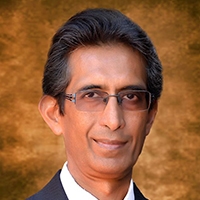
Rupin Shah
India
Rupin Shah
Dr Rupin Shah is India’s leading Andrologist and Male Infertility Microsurgeon. He has a vast experience in reconstructive microsurgery for obstructive azoospermia and has pioneered new approaches to sperm retrieval in non obstructive azoospermia. He was Founder President of the South Asian Society of Sexual Medicine and is the recipient of the prestigious Dr B C Roy award from the President of India for developing Andrology in India. He has published and presented extensively and has contributed over 20 book chapters. He is Consultant Andrologist at the Lilavati Hospital and Research Centre, Mumbai.
Rupin Shah
Evolution of Surgical Sperm Retrieval Techniques – Lessons from a Historical Perspective
Surgical sperm retrieval from men with azoospermia has been attempted since
over 50 years. Initial attempts focussed on the creation of spermatoceles to
collect semen for IUI. Success was rare but did happen, proving that epididymal
sperm could fertilize naturally. Subsequently, epididymal sperm were retrieved
microsurgically and used for IVF, but fertilization rates , though much better
than with IUI, were still low.
With the advent of ICSI fertilization and pregnancy rates improved dramatically,
sparking great interest in methods for sperm retrieval in azoospermic men.
Percutaneous and open techniques were developed to retrieve sperm from both
the epididymis and the testes. These involved fine needle aspiration, large-bore
needle biopsies, conventional random biopsies, testicular mapping and
microsurgically guided biopsies. This review of the original papers highlights
fine aspects of various techniques that are often glossed over in subsequent
descriptions, and will help clinicians refine their apporach to surgical sperm
retrieval
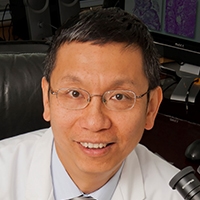
Ie-Ming Shih
USA
Ie-Ming Shih
Ie-Ming Shih, MD, PhD
Richard W. TeLinde Distinguished Professor
Departments of Gynecology and Obstetrics and Oncology
Johns Hopkins University
Dr. Shih is the Richard W. TeLinde Distinguished Professor of Gynecologic Pathology, and directs the interdepartmental Gynecologic Pathology Laboratory and co-directs Women’s’ Malignancy Program at the Johns Hopkins University School of Medicine (www.gynecologycancer.org). Dr. Shih’s team has recently applied innovative cancer research tools to accelerate endometriosis study and this inter-disciplinary endeavor can have an impact on our understanding of the endometriosis pathobiology. For example, research groups have recently revealed the genomic and epigenetic landscape, clonal trajectory and immune microenvironment in endometriosis and related lesions. Dr. Shih will discuss those recent advances and propose the gateways for new research directions and opportunities.
Ie-Ming Shih
Adenomyosis and endometriosis are two major gynecologic disorders causing chronic pelvic pain, dysmenorrhea, dyspareunia and infertility. Worldwide, adenomyosis and endometriosis are estimated to affect, respectively, 10-80% and 10% of premenopausal women, and their prevalence is higher in women with symptoms such as infertility and chronic pelvic pain. Both disorders are sources of significant socio-economic burden not only in the expense of medical care but in the loss of work productivity. Both ectopic lesions are speculated to originate from uterine eutopic endometrium, which is composed of epithelium and stroma, but how these two different tissue types co-evolve in ectopic locations remain unclear. Here, we analyzed exome-wide mutations and global methylation in microdissected epithelium and stroma separately in paired adenomyosis, peritoneal endometriosis, and endometrium to investigate their relationship. Analyses of somatic mutations and their allele frequencies indicate mono-clonal development not only in epithelium but also in the stroma of adenomyosis and peritoneal endometriosis. Phylogenetic study infers clonal derivation in epithelium and stroma of both ectopic and eutopic endometrium from the same founder epithelium-stroma progenitor cells. While a patient-specific methylation landscape is evident, adenomyosis epithelium and stroma can be distinguished from normal-appearing eutopic endometrium and epigenetically less homogenous. In summary, endometrial stroma, like its epithelial counterpart, is clonal and both ectopic and eutopic endometrium are progeny of an ancestral Müllerian progenitor cell following divergent evolutionary trajectories. Our data also provide new insight into the role of endometrial stroma in the pathobiology of endometrium-related disorders.

Carlos Simón
Spain
Carlos Simón
Carlos Simón M.D.; Ph. D.
Board Certified and Professor of Ob/Gyn at the University of Valencia, Spain; Adjunct Clinical Professor, Department of Ob/Gyn, Stanford University School of Medicine, USA; and Baylor College of Medicine, USA & Scientific Director of Igenomix.
As a clinician-scientist his main interest is the understanding of the human embryonic implantation process, considering as key elements the embryo, the maternal endometrium, and the cross-communication between them using different scientific perspectives. He is author of 445 publications in international peer-review journals, adding up to an accumulated impact factor of 2,146.37. His papers have received a total of 18,732 cites with an average of 42 cites/paper. His H-Index is 74 and he is editor of 19 books (one best seller and one awarded as Highly Commended, BMA Book Awards 2018). He has been Director of 38 PhD Thesis.
The quality of his work has been recognized by the American Society of Reproductive Medicine, the Society for Gynecological Investigation, the Spanish Society of Obstetrics & Gynecology, and the Spanish Fertility Society. He received the Prize Jaime I in Medical Investigation in 2011, and the ASRM Distinguished Research Award in 2016.
Pubmed Publication List: http://www.ncbi.nlm.nih.gov/myncbi/simon_c
ResearchID: G-2186-2014. http://www.researcherid.com/rid/G-2186-2014
Google Scholar: https://scholar.google.es/citations?user=nA_MhRMAAAAJ&hl=es
Personal Website: www.carlos-simon.com
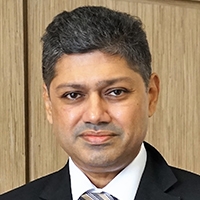
Surinder Singh
Surinder Singh
DR SURINDER SINGH
Medical Director and Head
Department of Obstetrics, Gynaecology and Fertility
TMC Fertility at Thomson Hospitals Sdn Bhd (formerly known as Tropicana Medical Centre)
MBBS, MMed, O&G (Malaysia), AM, FAGE, Fellow of International College of Surgeons (USA)
Dr Surinder Singh is the Medical Director of TMC Fertility, Thomson Hospital Sdn Bhd and Head of the Department of Obstetrics & Gynaecology of Thomson Hospitals Sdn Bhd. He has been instrumental in growing the fertility department within the hospital. He was also instrumental in growing the Hospital’s network of branches in Kuala Lumpur, Johor Bahru, Ipoh, Penang and Puchong, while maintaining an efficient delivery of services and high success rates. He and his team have been able to successfully elevate ART pregnancy rates locally to those comparable to leading international fertility centres, with clinical pregnancy rates of over 80% per embryo transfer. He has also been responsible for introducing innovative new techniques such as Comparative Genomic Hybridization (CGH) and Next Generation Sequencing for genetic testing of embryos.
With over 18 years of experience, he is well versed on all aspects of fertility and reproductive laparoscopic surgery. He lectures extensively both locally and abroad on fertility. In addition he has published several papers in various international medical publications. He is very active in the development of fertility treatment in Malaysia, and is the past President of the Malaysian Society of Assisted Reproductive Technology (MSART).
Dr Surinder Singh is currently the country representative of the Asia Pacific Initiative on Reproduction (ASPIRE).

Ivan Rizal Sini
Indonesia
Optimising ovarian stimulation from endocrine profile to clinical outcomes
Highly purified hMG (HP-hMG) with human chorionic gonadotropin (hCG) driven luteinizing hormone (LH) bioactivity, has demonstrated a road map of evidence on efficacy and safety in the past 20 years. The pivotal randomized controlled trials (RCTs) also showed the evolution of ART protocols and advance of techniques. Reviewing EISG published in 2002 to MEGASET HR published in 2020, there are some changes in ART treatment, from GnRH agonist long protocol to GnRH antagonist protocol, from IVF to ICSI, from Day 3 multiple cleavage embryos transfer to Day 5 single blastocyst transfer. Those multi-country, multi-centre, RCTs EISG, Merit, Megaset and Megaset HR all chose Ongoing Pregnancy Rate (OPR) as the primary endpoint and got consistent results either compared with recombinant FSH (rFSH) alfa or rFSH beta. Meanwhile, data have validated how embryo quality and endocrine profile influence outcomes that matter to patients. Furthermore, in predicted high-responder patients, ovarian stimulation with HP-hMG provided a favourable safety profile without compromising efficacy compared with rFSH alfa. A recent independent meta-analysis of randomised controlled trials comparing rFSH with HP-hMG or highly purified FSH has confirmed previous findings, demonstrating that HP-hMG is associated with a significantly higher live birth rate (LBR) versus rFSH.
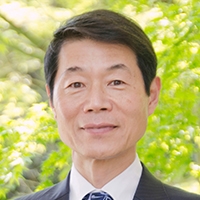
Norihiro Sugino
Japan
Norihiro Sugino
Norihiro Sugino, M.D., Ph.D.
Professor and Chairman
Department of Obstetrics and Gynecology,
Yamaguchi University Graduate School of Medicine,
Minamikogushi 1-1-1, Ube, 755-8505 Japan
Dr. Sugino received his M.D. (1985) and Ph.D. (1991) from Yamaguchi University School of Medicine. He did his postdoctoral training in reproductive and molecular biology under Professor Geula Gibori in the Department of Physiology and Biophysics, University of Illinois at Chicago (1996-1998). He was promoted to Professor and Chairman in 2003.
Dr. Sugino’s basic research projects focus on ovarian physiology, particularly molecular mechanisms involved in the formation of the corpus luteum, and on decidualization and implantation in the human endometrium. His clinical research projects are on aberrant DNA methylation in uterine leiomyomas and endometriosis. He has also been studying the role of melatonin as an antioxidant to improve oocyte quality in infertile women. He has published over 170 international scientific publications, invited reviews and book chapters.
He is now on the editorial boards of Reproductive Medicine and Biology (Editor-in-Chief, 2016-present), Journal of Reproduction and Development (Co-Editor-in-Chief, 2003–present), Journal of Ovarian Research (2008–present), and Endocrine Journal (2019-present).
Norihiro Sugino
Anti aging effects of melatonin on follicle development
Melatonin is secreted by the pineal gland. The pineal secretion of melatonin is determined by
the light dark cyc le, and it is only discharged at night. Melatonin regulates biological rhythms
Melatonin also has strong antioxidant activities to scavenge free radicals such as reactive
oxygen species (ROS). The direct free radical scavenging actions are receptor indepe ndent.
ROS play an important role in reproductive function including in the ovulatory process.
However, excessive ROS can have an adverse effect on oocytes as oxidative stress, thereby
causing infertility. It is becoming clear that melatonin is located wit hin the ovarian follicles
and protects granulosa cells and oocytes from oxidative damage as well as having other
beneficial actions in oocyte maturation, fertilization, and embryo development. Trials on
humans have investigated the improvement of outcomes of assisted reproductive technology
(ART), such as in vitro fertilization and embryo transfer (IVF ET), by way of administering
melatonin to patients suffering from infertility. In addition, clinical research has examined
melatonin as an anti aging molecul e via its antioxidative actions, and its relationship with the
aging diseases, e.g. Alzheimer and Parkinson disease, is also underway. Melatonin may also
reduce ovarian aging, which is a major issue in ART . This presentation explains the
relationship betwe en melatonin and human reproductive function, as well as the clinical
applications expected to improve the outcomes of ART , while also discussing possibilities for
melatonin in preventing ovarian aging.
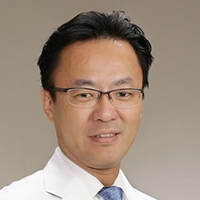
Yodo Sugishita
Japan
Yodo Sugishita
2004 Residency in OBGYN, St. Marianna University, School of Medicine
2007 Embryology Training at IVF Namba Clinic and IVF Osaka Clinic
(Supervisor: Prof. Yoshiharu Morimoto and Prof. Aisaku Fukuda), Osaka, Japan.
2009 Ph.D, in Embryology. (Prof. Bunpei Ishizuka)
2015 Visiting postdoctoral research fellow, New York Medical College.
(Prof. Kutluk Oktay)
2017- Visiting assistant professor. New York Medical College.
(Prof. Christopher Leonard)
2018- Assistant professor and Lecturer
Dept. of OBGYN, and Dept. of Frontier Medicine,
Institute of Medical Science, St. Marianna University.
2021- Associate professor
Dept. of OBGYN, and Dept. of Frontier Medicine,
Institute of Medical Science, St. Marianna University.
Yodo Sugishita
Anticancer therapy has progressed in the past decade and the survival rate of CAYA cancer patients has gotten more optimistic than ever. In 2004 the first live birth baby was born after ovarian tissue cryopreservation and thawed ovarian tissue transplantation by Professor Donnez. This was the major breakthrough which paved the way for the further progress in this research field. According to the latest report, over 130 babies have been born by ovarian tissue transplantation after cryopreservation and thawing up till today. There are the two methods of ovarian tissue cryopreservation in the world. Currently the slow freezing (SF) is the most accepted method of ovarian tissue cryopreservation in humans as there are limited data on the efficacy of vitrification (VF). We developed the new closed device of ovarian tissue cryopreservation by VF because of cross contamination in LN2.
First research was to determine whether VF can provide similar or superior intact primordial (pdf) and primary (pfy) follicle survival compared to a commonly used SF method. Based on the impact on primordial follicle survival and DNA damage after thaw and culture, there seems to be no major differences between the SF and VF methods. It appears that fewer apoptotic follicles survive after VF but this does not have any impact on final non-apoptotic follicle density or survival in culture. Second was that the safety concerning the residual cryoprotectant in thawed tissues should be verified, since VF uses high concentration of cryoprotectant. The ovarian tissues, cryopreserved either by SF or VF, need to be thawed/warmed for at least 120 minutes in media to completely remove the cryoprotectants from the thawed ovaries. The concentration of cryoprotectants is removed by free diffusion. Our research demonstrated the safety of thawed/warmed ovarian tissue for transplantation. I would like to introduce our researches on this time.

Sesh Sunkara
UK
Sesh Sunkara
Dr. Sesh Sunkara is a Subspecialist in Reproductive Medicine and Surgery having initially specialised in general Obstetrics and Gynaecology. She is a Fellow of the Royal College of Obstetricians and Gynaecologists (FRCOG), UK. Her research work on poor responders undergoing IVF formed the basis for her thesis leading to her Research degree in Reproductive Medicine; Doctor of Medicine (MD) awarded by King’s College London. She has dual accreditation with the UK General Medical Council as a Specialist in Obstetrics and Gynaecology as well as a Subspecialist in Reproductive Medicine.
In addition to her clinical work, Dr. Sunkara has published over 50 PubMed indexed peer reviewed research papers and authored several other papers, book chapters. She is currently Associate Editor for Human Reproduction Update Journal, the highest impact factor journal in the field of Obstetrics and Gynaecology. She was previously Associate Editor of the Human Reproduction Journal from 2014 to 2018. She is on the Editorial Board of Reproductive Biology and Endocrinology and Associate Editor of Gynecologic and Obstetric Investigation Journals. She has organized and lectured at several national and international symposia and workshops.
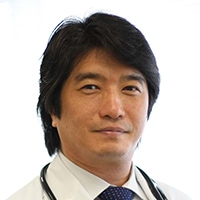
Nao Suzuki
Japan
Nao Suzuki
Nao Suzuki, M.D., Ph.D.
Professor and Chair, Department of Obstetrics and Gynecology, St. Marianna University School of Medicine, Kanagawa, Japan
Dr. Nao Suzuki is a Professor and Chair of the Department of Obstetrics and Gynecology at St. Marianna University School of Medicine, Kanagawa, Japan since 2011. He completed his medical training at the School of Medicine, Keio University (Tokyo, Japan) in 1990, and obtained his Ph.D. in Obstetrics and Gynecology, Graduate School of Medicine, Keio University in 2000. His specialties are Gynecologic Oncology, Palliative Medicine and Reproductive Medicine (fertility preservation for the CAYA cancer patients: Oncofertility). He established the Japan Society for Fertility Preservation (JSFP) in 2012 and the Asian Society for Fertility Preservation (ASFP) including 16 countries in Asia in 2016. He is a board member of the International Society for Fertility Preservation (ISFP). His wish is to improve CAYA cancer survivorship not only in Japan but also in Asia-Pacific so that patients can fight cancer with hope.
Nao Suzuki
Basic Research of Fertility Preservation for the CAYA Cancer Patients Aiming for new innovative
In 2004, Dr. J. Donnez et al. reported the first live birth achievement in human by ovarian tissue cryopreservation (OTC) and ovarian tissue transplantation (OTT) which promoted awareness of Oncofertility around the world (Lancet 2004). Finally, a world has arrived where childhood, adolescent, and young adult (CAYA) cancer patients can fight cancer with hope. Basic research on OTC & OTT dates back to 1906, when Morris et al. reported on ovarian transplantation in humans (Med Rec 1906). Since then, basic research in this area has gradually progressed, and in 1994, Dr. R.G. Gosden et al. succeeded in acquiring the first offspring by OTC & OTT using sheep (Hum Reprod 2004). The OTC method developed by Dr. Gosden et al. is the basis of the current technology in this area. After that, following the report by K. Oktay et al. (NEJM 2000), who succeeded in ectopic transplantation using cryopreserved-thawed human ovarian tissue in 2000, it will lead to the report by Donnez et al. in 2004. For the happiness of patients, it is essential to continue basic research aimed at further technological innovation. We scientific researchers have a responsibility to further advance the research of Dr. Gosden, Dr. Oktay, and Dr. Donnez in this area. In this talk, I will explain the basic research of fertility preservation for the CAYA cancer patients at our institution.

Jason Swain
Jason Swain
Jason E. Swain, PhD, HCLD is the Corporate Laboratory Director of the CCRM IVF Laboratory Network, overseeing a growing network of 11 clinical IVF laboratories in North America. He is responsible for laboratory design, protocol/procedure implementation, as well as staff training and ongoing quality control monitoring for the network embryology, andrology and endocrinology laboratories. Dr. Swain is an Adjunct Clinical Associate Professor in Obstetrics and Gynecology at Rutgers University as well as at the University of Minnesota. He completed his BSc at Hillsdale College in his native Michigan, his MSc in Animal Science at Purdue University with Rebecca Krisher, PhD and his PhD in Molecular & Integrative Physiology at the University of Michigan in the lab of Gary Smith, PhD, HCLD. He then had clinical embryology training with Thomas “Rusty” Pool, PhD, HCLD in San Antonio, TX, before becoming a Clinical Associate Professor in the Department of OB/GYN and IVF lab director at the University of Michigan. Dr. Swain has published over 45 peer-reviewed articles, edited and authored several book chapters and contributed to various other publications within the field of assisted reproduction. Dr. Swain has served on various committees for ASRM, ESHRE, PCRS and other organizations focused on assisted reproduction. He has given numerous regional, national and international invited lectures on various topics related to the IVF laboratory, sits on the editorial board for 6 journals and acts an ad hoc reviewer for over 30 others. His primary research interests include pursuit of methods to improve in vitro embryo culture conditions through reduction of environmental stressors via modification of both the physical and chemical culture environment.
The Effect of Culture Medium on Embryo Euploidy
Published reports indicate rates of preimplantation embryo aneuploidy in a control donor population may vary between IVF centres. This suggests that location-specific conditions, in the clinic, IVF or genetics laboratory, may be influencing chromosome dynamics or diagnosis. More recent reports suggest that rates of embryo mosaicism, representing mitotic errors, may vary between IVF centers. This would suggest an IVF laboratory-controlled variable may be influencing mitotic cell division during preimplantation embryo development. Various IVF laboratory-controlled factors may be impacting chromosome separation and segregation, including type of culture media. However, depending on experimental design, isolating the effect of the culture medium on embryo euploidy from other variables in the culture system, such as pH or temperature, can be difficult.

Japan
Tachibana Masahito
Masahito Tachibana, MD, PhD is a senior lecturer of the Department of Obstetrics, Tohoku University Hospital since 2016. After receiving his PhD, at Tohoku university graduate school of medicine, he came to Oregon National Primate Research Center, Oregon Health & Science University to do his postdoctoral in the research laboratory of Shoukhrat Mitalipov PhD in 2008. His field of medical specialization is reproductive medicine, reproductive endocrinology and endoscopic surgery. Area of interest on research are gamate and embryo biology, nuclear transfer, and specially focus on development of a novel technique towards germline gene therapy of inherited mitochondrial diseases.
Mitochondrial Replacement by Nuclear or Spindle Transfer
Tohoku university hospital, Department of Obstetrics and Gynecology
Mitochondria are essential for basic cellular function due to their principal role in
the production of energy. Mitochondria contain multi copy of its own highly
compact DNA (mitochondrial DNA: mtDNA) independent from nuclear DNA.
Mutations in mtDNA, especially if genetic alterations of mtDNA are involved in the
synthesis of ATP, lead to the mitochondrial diseases and disorders, including
myopathies, neurodegenerative diseases, diabetes, cancer and infertility. To date,
there are no fundamental cures for mitochondrial-disease patients and current
treatments are limited to only patients with a slow disease progression or patients
in palliative care. Hence, development of novel Assisted Reproductive
Technologies (ART) to prevent mtDNA disease transmission in affected families
is urgently needed.
Transferring nuclear material between oocytes from unrelated females offers
opportunity to exchange not only nuclear genetic materials but also their
cytoplasm. Cytoplasm of mammalian oocyte possesses large amounts of
mitochondria/mitochondrial DNA (mtDNA), that is maternally inherited and only
passes down from mother to child through egg, to ensure energetic support for
early embryonic development. For this unique feature of mitochondrial
inheritance, we have been developing and studying a technique to prevent
transmission of faulty mitochondria in inherited mitochondrial disease patient by
replacing/transferring oocyte cytoplasm so called the mitochondrial replacement
therapy (MRT). The fundamental assumption of MRT is for preventing inheritance
of maternally heritable mitochondrial disease. Further, in contrast to whole oocyte
donation, MRT may also confer potential benefit for having their genetically own
children in aged infertile patient with improved ART outcomes.
I herein present 1) Development of a technique called the maternal spindle
transfer (MST) to prevent transmission of inherited mitochondrial disease, and 2)
Sights in use of mitochondrial replacement technique in common assisted
reproductive technology (ART).

Singapore
Thiam Chye Tan
Assoc. Prof. Tan Thiam Chye
Duke-NUS Medical School
Visiting Senior Consultant, Dept of OBGYN KK Women’s and Children’s Hospital, Singapore
Medical Director, O&G Women’s Specialist
Mount Elizabeth Novena Hospital, Singapore
Dydrogesterone versus vaginal progesterone in early implantation
Oral dydrogesterone has been used for luteal phase support (LPS) on an empirical basis since the early days of in vitro fertilization (IVF) treatment. Systematic comparisons of oral dydrogesterone with vaginal progesterone, so far considered to be the standard of care, started to appear in the middle 2000s. Recently, a phase III trial program on the use of daily 30 mg oral dydrogesterone versus micronized vaginal progesterone (MVP) for LPS in IVF was published (LOTUS trial program). A systematic review, individual participant data (IPD) meta-analysis and aggregate data meta-analysis was subsequently performed. In the meta-analysis of IPD, oral dydrogesterone was associated with a significantly higher chance of ongoing pregnancy at 12 weeks of gestation (odds ratio [OR], 1.32; 95% confidence interval [CI], 1.08 to 1.61; P = 0.0075) and live birth (OR, 1.28; 95% CI, 1.04 to 1.57; P = 0.0214) compared to MVP. Fetal and maternal safety parameters were similar between the two groups. Given the widespread preference of women for an oral compound, dydrogesterone may well become the new standard for luteal phase support in fresh embryo transfer IVF cycles.
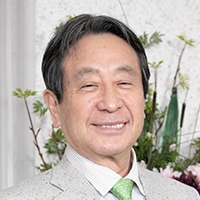
Atsushi Tanaka
Japan
Atsushi Tanaka
Atsushi Tanaka, M.D., Ph.D.
Dr. Atsushi Tanaka is the director of Saint Mother Hospital, located in Kita-Kyushu City, Japan and a Visiting Professor of Juntendo University Obstetrics and Gynecology in Tokyo. He obtained his postgraduate degree from the Department of Obstetrics and Gynecology of Juntendo University in 1983. He reported the first successful GIFT in Japan in 1985. He established Saint Mother Hospital in 1990, which has since become one of the premier fertility clinics in Japan and now conducts 8000 ART cycles yearly. He reported the first successful Micro fertilization in Japan in 1992. His manuscripts about ROSI were published in PNAS in 2015 and Fertility and Sterility in 2018. He has a long-standing interest in the scientific aspects of reproductive medicine, biology and spermatogenesis. He served as an expert member of scientific committee, Ministry of Health, Labor and Welfare of Japan, from 1998 to 2000. He has been a vice-president of the Japan Society of Fertilization and Implantation and he has organized the annual congress of the society as a chairman since 2008. He was a president of Japanese Institution for Standardizing Assisted Reproductive Technology (2009-2011), and a councilor of the Japan Society for Reproductive Medicine and the Japanese Society of Mammalian Ova Research. He won the ASRM STAR AWARD 2015, 2016, 2017, 2018 and 2019 and became a member of ASPIRE board in April 2016. He received the Medical Achievement Award for 2018 from Bonei Olam in New York City. He is now doing research on treatments to rescue aged oocytes or ovaries.
Atsushi Tanaka
The Wisdom of “Freeze-All”
We have 448,210 ART cycles [Fresh IVF cycles: 91,516(20.4%), Fresh ICSI cycles: 157,709(35.2%), Frozen embryo transfer (FET): 198,985(44.4%)] in Japan, 2017. Total number of newborn babies after ART was 56,617 [Fresh IVF cycles: 3,731(6.6%), Fresh ICSI cycles: 4,826(8.5%), FET: 48,060(84.9%)]. The clinical outcome of ART according to age among three groups was presented in the Table. This table shows FET has the highest success rates in every age group. From these results, cryopreserving all embryos after oocyte collection and transfer them during the next natural cycle is becoming the principal concept for the treatment of infertility now in Japan.
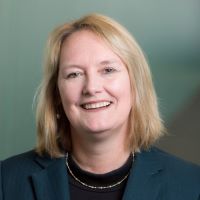
Helena Teede
Australia
Helena Teede
Prof Teede is Executive Director of Monash Partners Academic Health Sciences Centre and Director of the Monash Centre for Health Research and Implementation, School of Public Health, Monash University. She is an Endocrinologist at Monash Health and an NHMRC Practitioner Fellow. Prof Teede has a leading role in clinical and public health research and translation including large scale pragmatic and randomised controlled trials, evidence synthesis, international guidelines, data driven healthcare improvement, implementation and scale-up. She holds policy advisory roles, has sat on the national NHMRC Research Committee and the Faculty for Research Translation. She has over 450 publications focused on women’s reproductive and metabolic health and has led international guidelines in PCOS and other women’s health conditions.
Helena Teede
The New International Guidelines for PCOS
PCOS is common and heterogeneous with reproductive, metabolic and psychological features. Diagnosis delays are common internationally, with patient dissatisfaction with
care and inadequate provided information and resources. There were gaps in clinician knowledge and inconsistencies in care, underpinned by a lack of quality evidence
based guidelines and inadequate translation of evidence into practice. The Australian Centre
for Research Excellence in PCOS, funded to drive research and translation, partnered with leading international societies ESHRE and ASRM and collaborated with over 40 other organisations including ASPIRE to create the International Evidence-based Guideline for Assessment and Management in PCOS. The guideline was developed using world’s best practice processes and built on prior Australian, NICE, AEPCOS and WHO guidelines. We brought together an international network across six continents with widespread engagement and international partnership to drive awareness, patient self-management, improved, evidence based practices and better health outcomes in PCOS.
Overall 3500 health care providers and patients identified gaps, needs and priorities, including ASPIRE members. An evidence team completed extensive evidence synthesis with 60 systematic and narrative reviews and 70 experts and consumers in five multidisciplinary guideline development groups (including reproductive endocrinology, endocrinology, obstetrics and gynaecology, paediatrics, nursing, allied health and primary care) generated 170 recommendations and practice points. We applied full AGREEII and GRADE processes to generate these recommendations across Diagnosis and screening, Emotional wellbeing and Models of care, Lifestyle interventions, Pharmacological therapy and Infertility management. A comprehensive translation program was developed. Here key recommendations will be presented. And translation activities outlined including, e and m health, certified online learnings programs, app and websites, question prompt lists and new models of care.

Nathan Treff
USA
Nathan Treff
Dr. Treff received his PhD in Biochemistry from Washington State University in 2003 and performed postdoctoral fellowships in embryonic stem cell biology at the University of Wisconsin-Madison in 2004 and reproductive genetics at EMD Serono in 2005. He previously served as a Research Director at RMA of New Jersey for over 10 years. He is currently Board Certified (ABB) in Molecular Diagnostics as a High Complexity Laboratory Director, a cofounder and the CSO and Clinical Laboratory Director of Genomic Prediction, and an Associate Professor at Rutgers University. He also serves as a Senior Editor of Fertility and Sterility Science and JARG, has published over 100 peer reviewed papers in reproductive genetics, and has received 7 awards from the ASRM. His research on PGT has been reported on by the Wall Street Journal, New York Times, Forbes, and the Economist, among other media outlets.
Preimplantation Genetic Testing for Polygenic Disease Risk
Genome-wide genetic information is now available from large populations and has allowed for the development of accurate DNA-based polygenic risk prediction. In parallel with the ability to accurately genotype the preimplantation embryo from a trophectoderm biopsy, it is now possible to predict an embryo’s risk of polygenic disease with preimplantation genetic testing (PGT-P) during IVF. The clinical utility of PGT-P has already been established by evaluating over 11,000 sibling pairs and observing significant relative risk reduction of diabetes, cancer, and heart disease by genetic selection when compared to random selection of one sibling. This study demonstrates a significant benefit to relatively healthy families that have only 2 euploid embryos available for transfer. The application of PGT-P is similar to the current use of PGT-M to reduce the risk of adult-onset conditions, such as breast cancer, by testing mutations with lesser severity and reduced penetrance (i.e. BRCA mutations), and already deemed ethical by the ASRM for reasons of reproductive liberty. Continued research and education will be critical to overcome common misconceptions, and to ensure patients have knowledge of and access to PGT-P.

Yung-Chieh Tsai
Taiwan
Yung-Chieh Tsai
Dr. Yung-Chieh Tsai is currently the Director of Department of Ob/Gyn in Chi Mei Medical Centre, Tainan, Taiwan. Before this, he has been the Director of Centre for Reproductive Medicine in Chi Mei Medical Center for more than 20 years.
Dr.Tsai is the Past President (PP) of Taiwanese Menopause Society and currently serves as board member of many important Ob/Gyn societies in Taiwan which include Taiwanese Association of Obstetrics and Gynaecology(TAOG), Taiwan Society of Reproductive Medicine(TSRM), Taiwanese Menopause Society(TMS), Taiwan Endometriosis Society(TES)…etc.
Dr. Tsai is an Associate Professor in Chia Nan University of Pharmacy and Science, Tainan, Taiwan. His major interest is in assisted reproductive technology, pharmacology and reproductive endocrinology.
Yung-Chieh Tsai
Optimizing Benefits with HRT Use in 2020
Hormone therapy(HT) is the most effective treatment for vasomotor symptoms associated with menopause. Hormone replacement therapy(HRT) is also effective for the prevention of osteoporosis-related vertebral and non-vertebral fractures in women.
Timing: There is some evidence that lends support to the “timing hypothesis”, which indicated if women receive HRT close to the onset of menopause that cardiovascular benefit may be derived.
Route: The transdermal administration is preferred because this administration route bypasses the first-pass effect seen with the oral route of administration of estrogens. Recent studies suggest transdermally administered estrogen has little or no effect in elevating prothrombotic substances and may have beneficial effects on proinflammatory markers.
Breast Safety: According to the result of WHI study, there is no increased risk of breast cancer with estrogen-only therapy. For estrogen–progestogen therapy, there are unequal risks for breast cancer associated with different regimen of HRT. Micronized progesterone or dydrogesterone used in association with oral or percutaneous estradiol may be associated with a better risk profile for breast cancer than other progestogens for at least 5 years.
Endometrial safety: The progestogen dosages necessary for maintaining endometrial atrophy during continuous combined use are dependent on the dosage of estrogen. Recent data suggest that, whereas micronized progesterone is apparently safer for the breast, it could be less efficient than synthetic progestin on the endometrium. 5 mg daily dydrogesterone appears to be the lowest effective dose to ensure endometrial safety in a continuous combined regimen with 1 or 2 mg 17 β-oestradiol. A new strategy of ERα modulation called tissue selective estrogen complex (TSEC), combines CEE and bazedoxifene (SERM) not only can maintain the benefits of estrogen but also induces a rapid degradation of ERα in the uterus and in the breast.
Duration: The benefits of HRT outweigh its risks in healthy menopausal women who initiate HRT during the ‘window of opportunity’ in the 10 years after the menopause or before age of 60 years.
Endometriosis: For women with symptoms severe enough to compromise the quality of life, HRT should not be withheld. It may be safer to give either continuous combined estrogen– progestogen therapies or tibolone in both hysterectomised and non- hysterectomised women. Unopposed estrogen in post hysterectomy patients may still hold some risks.
Conclusion:Regular follow up and check your HRT prescription ! Start the estrogen with low doses and, if not effective, adapt the dose of your regimen according to body mass index. Local low-dose estrogen therapy is preferred for women whose symptoms are limited to vaginal dryness or associated discomfort with intercourse.

Chii-Ruey Tzeng
Taiwan
Chii-Ruey Tzeng
Professor Tzeng is Director of Center for Reproductive Medicine at Taipei Medical University Hospital (TMUH) since 1994 and he was Chair of OB/GYN from 1994 to 2017 and Dean of the College of Medicine at TMU from 2004 to 2013. After he obtained a masters’ degree in public health in Maternal and Child Health from Harvard University (1980-1981), he completed his fellowship training in Reproductive Endocrinology and Fertility from 1981-1983 in the Department of Obstetrics and Gynecology at Brigham and Women’s Hospital, Harvard Medical School.
Professor Tzeng has undertaken two pioneering projects in Taiwan: the first test-tube baby in 1985 and the first autologous mitochondria transfer in 2002. He has received the Prize Poster Award at the annual meeting of European Society of Human Reproduction & Embryology (ESHRE) in 2001, 2003 and 2007, respectively. He also received 2009 Gold Medal for the invention of “Diagnosis method of endometriosis by detecting biochemical markers” from Ministry of Economic Affairs, Taiwan. In 2010, 2014, 2015, 2017 and 2018, he obtained the STAR Award from ASRM, in appreciation of his continuous contribution for 10 more years of presentation at ASRM’s Annual Meeting. In 2012, he received the “Lifetime Achievement Award” from The Global Chinese Association for Reproductive Medicine (GCARM).
Professor Tzeng served as President of Pacific Rim Society for Fertility and Sterility (PRSFS), now Pacific Society for Reproductive Medicine (PSRM) from 2008-2014 and President of the Asia Pacific Initiative on Reproduction (ASPIRE) (2016-2018). He is one of the board members of International Society for Fertility Preservation (ISFP) and World Endometriosis Society (WES), and the president of Taiwan Endometriosis Society (TES). Professor Tzeng has been invited as a guest speaker in numerous grand conferences around the world for more than 120 times. He has published over 210 peer review papers in the field of reproductive medicine.
The Role of Mitochondria in the Oocyte and Early Embryo
Human mitochondrial DNA (mtDNA) is a maternally inherited double-stranded circular DNA molecule, which is involved in respiratory and oxidative phosphorylation. The human metaphase II oocyte is estimated to have 100,000 mitochondria; however, there is only one mitochondrial genome per organelle compared to 2-10 copies in mitochondria of somatic cell. The mtDNA consists of 37 genes encoding for 13 proteins, 2 rRNAs and 22 tRNAs. The 13 proteins are the constituents of the electron chain transport (ETC) complexes sub-units. The mtDNA is not protected by histone and is exposed in high concentrations of reactive oxygen species (ROS) and free radicals in the matrix of mitochondria. Thus the aged oocytes are very vulnerable to oxidative damage and mtDNA mutation. The current study demonstrates that mtDNA 4977bp deletions in compromised human oocytes may range from 56.3% when maternal age is <32 and up to 73% when maternal age is >37. The mutant mtDNA will accumulate in the mitochondria, leading to defective respiratory ETC. As a result, the increased oxidative stress will impair ATP production and hamper the meiotic and mitotic spindle formation. Most non-disjunction and aneuploidies take place during meiosis, which are highly energy-intensive, and increase exponentially with advanced maternal age. Mitochondria in oocyte and early embryos are structurally immature. There are round or ovoid in shape, with few cristae. They become more elongated with numerous transverse cristae at the blastocyst stage. As the oocyte matures, the need for more energy requires a shift from glycolysis (anaerobic) to oxidative phosphorylation (aerobic). After fertilization, mitochondria that are imported into the oocyte from the sperm are ubiquitinated and targeted for removal through the proteasome of the oocyte. Nevertheless, the multiplication of mitochondria and the replication of mtDNA are not resumed until late embryonic stage.
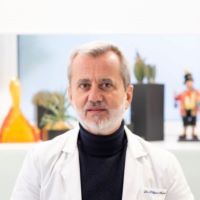
Filippo Maria Ubaldi
Italy
Filippo Maria Ubaldi
Filippo Maria Ubaldi is Medical Doctor, Clinical Director at the GENERA Centres for Reproductive Medicine
and Scientific Director of GeneraLife, International Reproductive Medicine network (13 Centres in Italy,
Spain, Sweden and Czech Republic).
With academic degrees in Ob & Gyn, Masters in Andrology and Reproductive Medicine, PhD in Andrology at
the Vrije Universiteit Brussel, he is also intensely dedicated to scientific activity.
Author and co-author of 199 scientific papers with Scopus H-index of 52, he has been invited as speaker at
449 National and International congresses on the topic of Reproductive Medicine. Member of the ESHRE
Executive Committee during 2005-2009, he has been Chairman of the 26th ESHRE Annual Meeting held in
Rome in June 2010.
In 2014 and 2019 he received the Italian National Scientific License as full Professor in Obstetrics and
Gynaecology and at the present is the Chairman of the Italian Society of Fertility and Sterility (SIFES).
For further information link to:
http://www.generaroma.it/equipe/direzione-clinica-dott-filippo-maria-ubaldi/
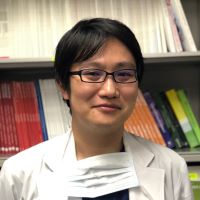
Satoshi Ueno
Japan
Dr. Satoshi Ueno
Dr. Satoshi Ueno is chief embryologist at the Kato Ladies Clinic in Tokyo, Japan. Dr.Ueno earned his Ph.D from the Okayama University. His main research interests are ICSI, gametes cryopreservation, embryo morphokinetics, embryo selection for embryo transfer and vitrified-warmed blastocyst transfer.
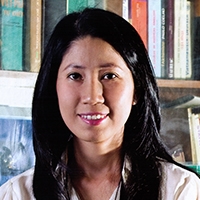
Thi Ngoc Lan Vuong
Vietnam
Thi Ngoc Lan Vuong
Lan N Vuong MD, PhD
Head, Department of Medicine and Pharmacy at Ho Chi Minh City
Senior Consultant, IVFMD, My Duc Hospital
Ho Chi Minh City
Vietnam
Dr Vuong is an infertility specialist from Ho Chi Minh City, Vietnam. She was one of the pioneers of in-vitro fertilization (IVF) in Vietnam, starting in 1997. Dr Vuong is currently a lecturer and Head of the Department of Obstetrics and Gynecology at the University of Medicine and Pharmacy at Ho Chi Minh City, Ho Chi Minh City, Vietnam. She has been involved in providing support and training for the establishment of most IVF centers in Vietnam. In addition, Dr Vuong is a senior lecturer for many ART training courses in Vietnam.
Areas of research activity include ovulation induction in low body weight patients, ovarian stimulation in low response patients, in-vitro oocyte maturation, frozen embryo transfer and genetics.
Dr Vuong obtained her MD from the Pham Ngoc Thach School of Medicine in 1996, a Masters in Clinical Embryology from the National University of Singapore in 1999, and a specialist qualification (2001) and PhD (2016) in obstetrics and gynecology from the University of Medicine and Pharmacy at Ho Chi Minh City, Vietnam.
Dr Vuong has authored more than 30 publications in high-ranking local and international scientific journals, including the New England Journal of Medicine, Human Reproduction, and Fertility & Sterility, and has been an invited speaker at several regional and international meetings. Dr Vuong maintains strong engagement with community groups, speaking at community forums and is recognized as a local expert in her field, with regular media appearances. She has served as an Associate Editor for Fertility and Reproduction (an official journal of ASPIRE), and a peer reviewer for Human Reproduction, Human Reproduction Update, Reproductive BioMedicine Online, Reproductive Biology, Scientific Report, Journal of Ovarian Research, and PLoSOne.
Thi Ngoc Lan Vuong
In-vitro Maturation: State-of-the-Art
In vitro maturation (IVM) is an alternative to conventional in vitro fertilization (IVF) for women at high risk of ovarian hyperstimulation syndrome (OHSS), such as those with polycystic ovary syndrome (PCOS). In addition to the absence of (or minimal) controlled ovarian stimulation, other advantages of IVM include a shorter treatment duration, lower medication costs and improved patient convenience (including a lower monitoring burden). IVM involves retrieval of immature germinal vesicle stage oocytes and culture of intact cumulus-oocyte complexes in vitro until the metaphase II stage; thereafter conventional IVF or intracytoplasmic sperm injection are performed. IVM was first used to achieve successful pregnancy and delivery of a live infant in 1991. Since then, several variants of IVM have been used successfully as an alternative to IVF in different patient groups, with variable success rates, but it has not gained widespread acceptance.
Recently, there have been some notable advances in human IVM procedure that may make IVM more acceptable in the near future. The most important advance in IVM technology is the use of pre-maturation step followed by standard IVM known as CAPA-IVM. This involves the collection of immature oocytes from small antral follicles from minimally stimulated patients (without hCG-priming), and an ~24h pre-culture of oocytes in an advanced culture system, prior to standard IVM, IVF/ICSI and embryo culture. The purpose of this pre-maturation step is to arrest the meiotic resumption allowing the synchronization between nuclear and cytoplasmic maturation of oocyte. We have recently published the result of CAPA-IVM in the first RCT comparing CAPA-IVM versus conventional IVF (Vuong LN et al 2020 Hum. Reprod.). Furthermore, ASRM have recently published their committee opinion on IVM, and have concluded “this technology is no longer considered experimental”. Hence, it can be anticipated that there may be renewed interest across the ART centers in the world in IVM.
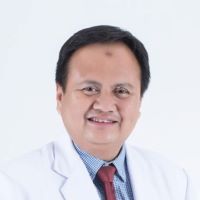
Budi Wiweko
Indonesia
Budi Wiweko
Professor Budi Wiweko, MD, OG (REI), MPH, PhD
He is The President of Asia Pacific Initiative on Reproduction (ASPIRE) for 2018 – 2021 and also a vice director of Indonesian Medical Education and Research Institute Faculty of Medicine Universitas Indonesia (IMERI FKUI). Currently he is a general secretary of Asian Society for Fertility Preservation (ASFP), an organization who establish fertility preservation in Asian Region.
In Indonesia He serves as The President of Indonesian Association for IVF (IA-IVF) for 2016-2021 and a current General Secretary for Indonesian Society for Obstetrics and Gynecology (POGI). He is also the chairman of International Relationship Affair of Indonesian Medical Association (IMA).
He just appointed as a chairman of Indonesia Health Technology Assessment Committee Ministry of Health Republic of Indonesia and a member of Indonesia National Academic of Sciences in 2020.
After graduated as a specialist in Obstetrics and Gynecology from Universitas Indonesia in 2005, he spent his time as a research fellow on ovarian tissue vitrification and in vitro culture of follicles at Hyogo College of Medicine Japan. He continued his research on basic laboratory on ART and had some clinical IVF training in Osaka, Barcelona, Thailand and Vietnam. He defended his PhD thesis on “Pre-antral follicle vitrification” in Faculty of Medicine Universitas Indonesia in 2014. Then he continued study to received master’s degree in public health from University of Gadjah Mada – Yogyakarta, Indonesia.
He is a former research manager FKUI (2014-2018) who contribute a lot for establishing research and innovation in FKUI as well as IMERI development.
He did also a lot of contribution in developing IVF field in Indonesia since he is one of the founders of Indonesian Association for In Vitro Fertilization (IA-IVF) which was founded in 2009. Instead of giving services, he is also a coordinator of trainer for Subspecialty in Reproductive Endocrinology and Infertility Fellowship which is underwent in Teaching Hospital Universitas Indonesia.
His researches about AMH, iCOS, and ovarian tissue vitrification were published in local journal and international journal and also conference of ART such as ASPIRE, ESHRE and IFFS annual meeting. Up to now, he has published 106 original articles in international journal indexed in Scopus and 36 original articles indexed in Pub-Med, with h – index 9.
He has received a lot of awards nationally and internationally, including Best Graduates Awards from FKUI 2005, Best Indonesian young obstetrics and gynecologist award 2005 (Tadjuludin Award), Asia Pacific Young Gynecologist Award 2007, Indonesian Best Paper Award 2009 (Sarwono Awards) Best researcher FKUI 2009, 2010, 2011, Asia Pacific Best Paper 2014, First Winner of Universitas Indonesia Best Lecturer 2015, First Winner of Indonesian Best Lecturer 2015, UI Innovation Award, Gynecologist innovation awards 2015 (Makelew Award), Indonesian Best Paper Awards 2009 (Sarwono Awards), Best Indonesian Innovator 2016 (First place and second place of Inovation 2016). His newest innovation was selected as 112 Indonesian Best Innovation 2020.
He did and published a lot of researches in ART especially in AMH, individualized controlled ovarian stimulation (iCOS), ovarian tissue vitrification and embryo metabolomics. He is the one of AMH expert in Asian region since he developed AMH nomogram and AMH based iCOS formula which is very important for daily practice on infertility. His product Indonesia Kalkulator Oocytes (IKO) was patented and registered on play store and apple store, was use across the globes.
Currently he is a member of advisory board of Merck Serono Asia Pacific and very active in a lot of regional organization such as Pacific Rim Fertility Society (PRFS), European Society for Human Reproduction and Embryology (ESHRE), International Federation of Fertility Society (IFFS), American Society for Reproductive Medicine (ASRM), International Society for Fertility Preservation (ISFP) and American Association for Gynecology Laparoscopy (AAGL). Now he is trying to develop ovarian tissue cryopreservation in Indonesia and establish Asian Society of Fertility Preservation (ASFP) as founding member.
Budi Wiweko
IMPACT OF COVID-19 IN ART IN ASIA PACIFIC: ASPIRE POSITION PAPER
SARS-CoV-2 is a type of coronavirus that causes COVID-19. The virus was first identified in the city of Wuhan, China, towards the end of 2019. Nearly all global cases of COVID-19 have evidence of human-to-human transmission through close contact with an infected person. More than two million cases of COVID-19 have been reported, 97% of which have mild symptoms, most of them attacking people aged 50 years and over with severe or critical symptoms. The mortality rate at reproductive age is 0.2%, with an estimated female to male ratio of 1: 1.5.
The prolonged lockdown of health services is detrimental to society as a whole, especially for infertility patients of high complexity recommended by reproductive medicine healthcare. Each year, approximately 0.3% of all babies born are conceived using assisted reproductive technology (ART). In line with this, the variable ‘time’ is critical for specific subgroups of particularly infertile women, patients with a ‘low prognosis’ on successful ART who tend to rapidly lose their fertility potential. Therefore ART treatment for infertile patients in this time of the pandemic requires significant attention.
The Asia Pacific Initiative on Reproduction (ASPIRE) is an association of doctors and scientists whose aim is to improve the quality of Assisted Reproductive Technology (ART) services for infertility patients. During the COVID-19 pandemic, ASPIRE know that each country in the Asia Pacific (APAC) was in a different phase. Providing safe and quality ART services during a pandemic requires recommendations from experts, so ASPIRE has produced a document containing viewpoints and recommendations as guide for healthworkers. Between 24 – 30 July 2020, 10 ASPIRE board members developed and responded to a survey to gather in-depth information on current ART practices. The survey analyzed was made up of nine tier 1 and five tier 2 recommendations regarding the prevention, testing, personal protective equipment, informed consent, and quality management.
Endometrioma: Surgery Should Precede IVF (Cons)
Endometriomas are ovarian cysts containing ectopic endometrial tissue. Endometriomas are present in up to 44% of all women with endometriosis and have a detrimental effect on fertility. The influence of endometriomas on fertility and in vitro fertilization (IVF) is not clear The classic, unproven dogma that ovarian endometrioma should be removed in all infertile women prior to IVF has been recently questioned. There is currently insufficient data to clarify whether the endometrioma-related damage to ovarian responsiveness precedes or follows surgery. Surgical interventions for endometriomas significantly can reduce the ovarian reserve. Therefore, to prepare for surgical intervention for endometrioma, the high-risk group with decreased ovarian reserve must be considered. There is no evidence to support the use of surgical intervention before in vitro fertilization (IVF) to improve the reproductive outcomes of subsequent IVF in infertile women with advanced-stage endometriosis or endometrioma. As surgical treatment has few benefits, IVF could be recommended immediately for aiding conception in these women. However, the reproductive prognosis of IVF may be worse in the more advanced stages of endometriosis. The idea that surgery increases IVF pregnancy rates is not supported by the available evidence. However, the chance of conception is not the only issue that has to be considered. Some potential drawbacks are associated with both therapeutical strategies. Specifically, costs and hazard of surgical complications support expectant management whereas oocyte retrieval risks, the possibility of missing occult malignancy and endometriosis progression due to ovarian stimulation would favour surgical treatment. Alternative therapeutical options include medical treatment and ultrasound-guided aspiration. Prolonged pituitary down regulation in women with surgically diagnosed endometriosis may be helpful to increase the clinical pregnancy rate in subsequent IVF cycles.

PC Wong
PC Wong
Professor Wong Peng Cheang is regarded as a pioneer in fields of infertility and assisted reproduction. He was part of the team that helped to bring about Singapore’s first in-vitro fertilisation baby in 1983.
He conducted successful research on Gamete Intra-Fallopian Transfer (GIFT), and his work on the same at Singapore’s National University Hospital (NUH) lead the Obstetrics and Gynaecology Department to produce the first pregnancy in Asia via GIFT.
Some of his other accomplishments include: infertility research with the World Health Organisation (WHO) Task Force on the Diagnosis and Treatment of Infertility; establishment of the Centre for Reproductive Education & Specialist Training in NUH in 2010, and attainment of honorary membership to the International Federation of Fertility Societies in 2013.
He co-published several papers. Professor Wong was the first president of ASPIRE.
He holds appointments:
- Professor, Department of Obstetrics & Gynaecology; with the National University of Singapore, Yong Loo Lin School of Medicine.
- Senior consultant, Department of Reproductive Endocrinology & Infertility, National University Health System

Taiwan
Hsien-Ming Wu
Hsien-Ming Wu received M.D. degree from Taipei Medical University in 1996. He received his PhD from the Graduate Institute of Clinical Medical Science, Chang Gung University, Taiwan in 2009 for his thesis on Gonadotrophin-releasing hormone (GnRH) signalings in intrauterine tissues. He trained as a postdoctotoral research fellow in the University of British Columbia, Canada. He is presently working as an associate professor, clinician, teaching faculty, researcher and chief of Reproductive Endocrinology and Infertility in the Department of the Obstetrics and Gynecology of the Chang Gung Memorial Hospital, Linkou Medical Center, Taiwan.
His research interests include reproductive endocrinology, GnRH and Kisspeptin system, infertility, and artificial reproductive treatment. With over a hundred academic publications and presentations, Dr. Wu is a noted expert in the clinical management of infertility, IVF and other disorders of the reproductive system. Dr. Wu is the principal investigator for Ministry of Science and Technology-funded grants that have impacted infertility therapy in Taiwan.
Dr. Wu received a lot of awards, including the awards from Taiwan Society for Reproductive Medicine (TSRM), Chien-Tien Hsu Cancer Research Foundation, the Infertility Foundation of the Taiwan, and FertiLink reproduction meeting.
Hsien-Ming Wu
Kisspeptin – The New Kid on the Block
As upstream regulators of the HPG axis, KNDy neuropeptides, including
kisspeptin, play essential roles in the regulation of pulsatile GnRH secretion. In the preoptic area (POA) of the hypothalamus, kisspeptin positively regulates GnRH neurons, leading to GnRH release. However, kisspeptin neurons at the arcuate nucleus (ARC) of the hypothalamus are implicated in oestrogen negative feedback regulation of pulsatile GnRH secretion. Indeed, previous studies have demonstrated the pivotal roles of kisspeptin in puberty and the function of the HPG axis as well as the therapeutic potential of kisspeptin agonist and antagonist analogs in humans. Human studies using a therapeutic approach have demonstrated that the administration of kisspeptin analogs efficiently stimulated gonadotropin release in women with hypothalamic amenorrhea. Similar to GnRH analogs, kisspeptin
analogs can potentially be applied for the management of hypothalamic
hypogonadism and infertility. The first reported role for kisspeptin was to regulate GnRH secretion by the hypothalamus. The pulsatile secretion of GnRH regulates secretion of gonadotrophins by the pituitary and is critical in maintenance of reproductive function including sex hormone secretion.
More recently, some studies demonstrated kisspeptin expression in endometrial cancer stromal cells and its ability to suppress endometrial cancer stromal cell motility. They also demonstrated induction of kisspeptin secretion in stromal cells through decidualization in pregnancy, suggesting that it might have local physiological effects in the endometrium. Little is known about how kisspeptin controls the motility of decidual stromal cell and what impact it could have on the endometrium and human reproduction.
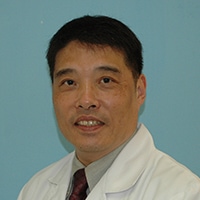
Taiwan
Gwo-Jang Wu
Gwo-Jang Wu, M.D., Ph.D.,
Taiwan
He was graduated from National Defense Medical Center in Taiwan, R.O.C. in 1984. After completing the resident training of Obstetrics & Gynecology at the Tri-Service General Hospital in 1989, he accomplished his PhD studies on Endocrinology-Reproductive Physiology at University of Wisconsin-Madison in 1994, and then established the Center for In-vitro Fertilization at Tri-Service General Hospital. He had postgraduate training at the reproductive medicine of UCSF in 2000. Dr. Wu also is the principal investigator of Stem Cell & Developmental Biology Research Program at National Defense Medical Center and the director of Center for Reproductive Medicine at Tri-Service General Hospital. He has dedicated in the research on ESC、iPSC、MSC stem cell. His academic articles were awarded at ASRM, ESHRE and TSRM frequently. Currently he is the president of Taiwanese Society for Reproductive Medicine
Gwo-Jang Wu
Molecular Activation of Primate Fertilization
- During fertilization in most animals, the sperm-oocyte contribution, and fuse to create a zygote, which then develops to form a new life.
- The centrosome is reconstituted from a combination of sperm centrioles and peri-centrosomal proteins and the reduced maternal centrosome components. While the sperm centriole guides both oocyte and sperm nuclei to form the zygote nucleus in the primate fertilization
- After zona penetration, direct binding between IZUMO1 and JUNO mediates gamete adhesion and forces accumulation of CD9 in the adhesion area, which recruits integrins to drive the following cortical granules exocytosis to release zinc and ovastacin that cleaves ZP2. Zinc release affects the motility of supernumerary sperm penetrating the zona, whereas shedding of JUNO from the oolemma impede further sperm binding and fusing with the egg to prevent polyspermy.
- An asynchrony or impairment between the maturation processes may result in cytoplasmic competence (pronuclear formation) and overall physiological competence (OAD) during gametogenesis and fertilization.
- At fertilization the mature primate oocyte is activated and triggered by PLCζ and/or factors (PAWP) drive Ca+2 oscillations to activate the oocyte, such as CAMK-II or other protein kinases, which start the intricate embryonic development process to form a zygote, and sperm DNA structures, chromatin and free RNAs can be rearranged to modify gene expression involved in embryo development.
- The conclusion of systematic review in AOA currently, demonstrates a strong effect of calcium ionophore use, is reassuring and promising, particularly for couples for previous ICSI alone with poor fertilization rates.
- Recently, the role of the spermatozoon during fertilization and early development of primate embryos has become important. There are established associations between advanced paternal age and offspring risk for psychiatric and developmental disorders, which may explained by the paternal contribution.
- Fertilization might be one of the most suitable research fields to require the use of trans-genetic animals to perform developmental studies

China
Jianwei Xuan
Prof. Jianwei Xuan has more than 20 years of research, teaching, and global leadership experience at major Universities such as Sun Yat-sen University, University of Florida, Fudan University, and several multinational pharmaceutical companies such as Pfizer, GSK, etc. Jianwei has led multiple global health economic and market access teams and conducted high impact health policy, health economics, comparative effectiveness, outcomes research, epidemiology and market access research to support evidence-based decision-making processes. Research results have been adapted in numerous countries to support formulating national health care policy, designing drug reimbursement formularies, and supporting government decision making. Before entering industry, he worked as a medical reviewer in the China FDA for more than 6 years. Prof. Xuan is also very familiar with drug development processes, global regulatory affairs, and safety requirements.
With more than 20 years of working/research experience, Prof. Xuan also published extensively in the areas of health economic, market access, outcomes research, epidemiology, pharmacovigilance, and mobile health with 120+ papers. He has established an extensive professional network with global key opinion leaders and led numerous global policy forums, advisory boards, and government/payer panel discussions. Prof. Xuan is advisor to multiple Chinese government agencies regarding health economic and market access policies. He also has extensive teaching and graduate student advising experience in advising Ph.D. students and training government officials, researchers, and various health care service researchers.
Prof. Xuan obtained his Ph.D. in Health Economics from the School of Public Health, University of North Carolina at Chapel Hill and completed his medical degree at Shanghai Medical University, China.
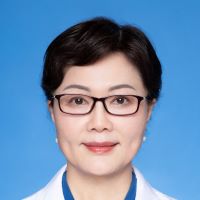
China
Dong-Zi Yang
Dong Zi Yang M.D & Ph.D.
Professor of Dept. Ob/Gyn, Division of Reproductive Medicine
Sun Yat-Sen Memorial Hospital, Sun Yat-Sen University, Guangzhou, China
Consultant of ART, Kiang Wu Hospital, Macau,China
Address: #107, Yanjiang Rd. Guangzhou, Guangdong, P.R.China. 510120
E-mail: yangdz@mail.sysu.edu.cn
Professional Experience:
2017-now Professor, , Division of Reproductive Medicine, Dept. OB/GYN,Memorial Hospital, Sun Yat-Sen University (SYSU),Guangzhou, China
2018-now Consultant of ART, Kiang Wu Hospital of Macau
1998-2017: Professor, Chairperson, Dept. OB/GYN, and Director of Division of Reproductive Medicine, Memorial Hospital, Sun Yat-Sen University (SYSU),Guangzhou, China
1993-1998 Associate Professor , Dept. of OB/GYN, Memorial Hospital, SUMS, Guangzhou, China
1988-1993 Lecturer and Attending ,Dept. of OB/GYN, Memorial Hospital, SUMS, Guangzhou, China
1982-1988 Resident ,Dept. OB/GYN, Memorial Hospital, SUMS, Guangzhou, China
Education & Training
1982, M.D., Department of Medicine, Sun Yat-Sen University of Medical Sciences.
1990, Ph.D., Department of Medicine, Sun Yat-Sen University of Medical Sciences.
1996, Advanced training of ART in Queen Mary Hospital of Hong kong
2000 ~2001, Hubert. H. Humphrey Fellowship, Training in Reproductive medicine at Emory University and University of California, San Diego, U.S.A
SOCIETIES/COMMITTEES/PROFESSIONAL ACTIVITIES:
- Vice-President of Chinese Reproductive Medicine Association of CMDA
- Deputy- editor in chief of Chinese Journal of Obstetrics and Gynecology,
- Vice-President of Reproductive Medicine Association of CPAM (Chinese International Exchange and Promotion Association for Medical and Health Care)
- Standing Board member , Gynecology and Obstetrics Society of Chinese Medical Association
- President, Gynecologist and Obstetrician Society of Guangdong Provincial Medical Doctoral Association
- Assistant Chair , Gynecological Endocrinology group of of Gynecology and Obstetrics Society of Chinese Medical Association
- Reviewer for numerous journals, e.g. International Journal of Obstetrics & Gynecology and Reproductiv, Biomedical online.
Publications:
Books: Chief Editor of 5 books; Member of Editor board of 20 books
Papers: published over 200 original articles including 50 peer-reviewed papers

Hong Kong
William Yeung
William Yeung
Preimplantation genetic testing for monogenic diseases – Hong Kong’s experience
Preimplantation genetic testing for monogenic disease (PGT-M) refers to detection of disease-causing mutation in preimplantation embryos. In collaboration with the Department of Medicine, the University of Hong Kong, we had our first PGT-M pregnancy in 2004. We established our own PGT laboratory in 2007.
As PGT-M involved discarding of the affected embryos, we studied the acceptability of PGT-M. The results showed that about 80% of the studied subjects considered that PGT was an acceptable alternative to prenatal diagnosis. They did not have major concern of discarding the genetically abnormal embryos. They accepted the use PGT/HLA-typing to produce a savior child for saving a sibling suffering from life-threatening diseases by treatment with genetically compatible cord blood stem cells. However only 31% of the couples could tell the mode of inheritance of their genetic disease.
Apart from detection of the mutant allele, we detect informative linked markers in PGT-M. Linkage analysis is used to determine allele dropout of the mutant allele and possible contamination. Should a suitable family member of the couples be unavailable, the high-risk haplotype can be determined from the haploid spermatozoa if the mutation is associated with the husband. Alternatively, the high-risk haplotype can be determined from embryos obtained from the treatment cycle.
Up to December 2020, we have performed PGT-M on 88 different monogenic diseases. Half of our PGT-M cycles are for thalassemia. We can perform diagnosis on multiple loci in a single sample, such as for 2 monogenic diseases, a monogenic disease and HLA-typing, and translocation and a monogenic disease. Currently, we perform PGT for aneuploidy on samples affected by monogenic disease. The method of PGT-M can be used to detect micro-deletion and micro-duplication that cannot be detected by next generation sequencing.
In summary, PGT-M is an established procedure and counseling of patients needs to be improved.
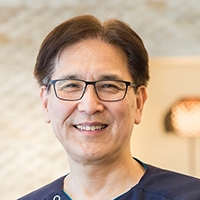
Japan
Hiroaki Yoshida
Hiroaki YOSHIDA
C.E.O of Sendai ART Clinic, Center for Reproductive Medicine
Sendai ART Clinic, 206-13 Nakakecho Miyagino-ku Sendai Miyagi, 983-0864 Japan
SPECIALITIES
Reproductive Medicine (Infertility, In Vitro Fertilization (IVF), Gynecologic endoscope)
EDUCATION/EXPERIENCE
1981 Graduated Dokkyo Medical University
Division of Reproduction Dept. of OB/GYN Tohoku Univ.
1991 Director of IVF Lab, Division of Reproductive Medicine Dept. OB/GYN,
University of MIAMI School of Medicine
1996 Head physician, Dept. of Ob/Gyn, Tohoku University
1998 Established Yoshida Ladies Clinic
2016 Established Sendai ART Clinic
JOB TITLE
-Certified physician of Japan Society of Obstetrics and Gynecology
-Director of Japan Society of Fertilization and Implantation
-Director of Japan Society for Fertility Preservation
-Clinical Associate Professor for OB/GYN of Tohoku University
Hiroaki Yoshida
How to Deal with Difficult Embryo Transfer
Purpose:
investigation of difficult embryo transfer cases and those success rateMaterials
and Method: We investigated 4460 frozen thawed embryo transfer cycles from Jan.
2016 to Dec. 2020 for 5years We divided all the cycles into three groups, Group A: 2963 easy
cases, group B : 1205 moderate cases, and Group C: 292 difficult cases, then investigated the
clinical pregnancy rate and miscarriage rate. And also, we compared the pregnancy rate of
both cervical dilation and trans myometrial embryo transfer (TMET) group. Fisher’s exact
test was taken for statistical analysis.
Result:
i. There was no difference in patient background or mean age among the se three groups.
ii. There was significant decrease of pregnancy rate in Group C 26.7% 78/292) 292), observed
as Group A: 39.4 1167/2693) and Group B: 3 2.0 386/1205) But no significant
difference was observed for miscarriage rate in those 3 groups. In addition, conception
rate of 2190 cycles with good blastocyst transfer showed significant decrease in Group C :
32.4%32.4%(45/139) comparing with Group A: 51.9%(775/1493) and Group B
44.3%(247/558) in group B. But also, no significant different was observed for
miscarriage rate in those groups.
iii. The clinical pregnancy rate was much higher in dilation group comparing with TMET
group for difficult embryo transfer cases. Then the miscarriage rate was increased in the
TMET group
Conclusion:
The clinical pregnancy rate decreased for difficult ET cases even with good
blastocyst transfer We recognized the most important issue of smooth embryo transfer for
success ART

Australia
John Yovich
Professor John Lui Yovich MD PhD FRCOG FRANZCOG, CREI.
John graduated MBBS (now MD) from the University of Western Australia (UWA) in 1970, progressing into Specialist O&G practice in 1976. Following laboratory research and clinical work over 4-years in London 1976-80 with Professor Ian Craft, John presented his MD (now PhD) thesis “Human pregnancies achieved by in-vitro fertilization”, conferred UWA in 1985. John established PIVET Medical Centre in 1981, generating WA’s first IVF child in July 1982 and formed PIVET Malaysia in Kuala Lumpur with Dr Haris Hamzah generating Malaysia’s first IVF infant in May 1987. John also holds a Clinical Professorship in Biomedical Sciences at Curtin University.
John Yovich
Adjuvant Growth Hormone therapy in ART for women classified as poor-prognosis
IVF is currently regarded as a successful new technology with an estimated 10 million
offspring generated over the past 41 years; achieved by an explosive plethora of facilities
worldwide. However, from its earliest history, IVF has been beset by poor-prognosis on a
treatment cycle basis. Current ANZARD reporting shows that IVF clinics have live birth
productivity rates (from combined initiated fresh and frozen cycles) ranging from 9.3% to
33.2%. Over the past 40 years there have been a number of innovations which have steadily
moved the success rates forward, but progress is held back by a group of women who can
be classified as being poor-prognosis from one or more adverse factors, namely advanced
age (>40 years), poor ovarian response (POR) to ovarian stimulation, inability to generate
high quality blastocyst-stage embryos, recurrent implantation failure or recurrent early
pregnancy losses. A number of strategies are variously applied including the use of
recombinant growth hormone (GH) adjuvant therapy. Our retrospective studies at PIVET
over the past decade show a 6.2-fold chance of live birth for fresh cycle embryo transfers
following GH adjuvant injections. We have also recently reported the live birth rates from
frozen embryo transfers utilizing those blastocyst embryos generated under GH influence
and showed the live birth rate was 2.7-fold higher in a matched poor-prognosis group. This
experience has been compared to the total 41 GH studies reported since the year 2000, the
majority matching those of PIVET with significant increases in both oocyte and embryo
utilisation rates. However, this is not always followed by elevated live birth rates; the
discrepancy relating to failure in addressing other causes of poor-prognosis along with the
wastage of transferring more than a single embryo in the fresh cycle, when ANZARD data
indicates a significantly higher chance of live birth from frozen embryo transfers.
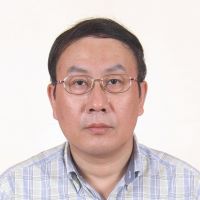
China
Xinmei Zhang
Medical Director, Department of Gynecology and Obstetrics, Women’s Hospital, Zhejiang University School of Medicine
Vice leader of Endometriosis Professional Committee of Chinese Medical Doctor Association
Member of the standing committee of Gynecologic Endoscopy Group of Chinese Medical Doctor Association
Regular contributor to peer reviewed scientific journals including Human Reproduction, Fertility and Sterility, Obstetrics & Gynecology
Published over 100 scientific articles, and authored a book of Adenomyosis published by People’s Health Press in 2018
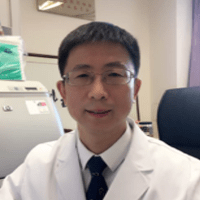
China
Yingfang Zhou
Medical Director, Department of Obstetrics and Gynecology, Peking University First Hospital
Chairman of the Gynecological Professional Committee of China Medicine Education Association
Vice leader of China Gynecologic Endoscopy Group of Chinese Medical Association
Members of editorial boards of the following journals: Chinese Journal of Obstetrics and Gynecology, Journal of practical Obstetrics and Gynecology, Chinese Journal of Clinical Obstetrics and Gynecology, Maternal and Child Health Care of China, Progress in Obstetrics and Gynecology, Continuing Medical Education.
